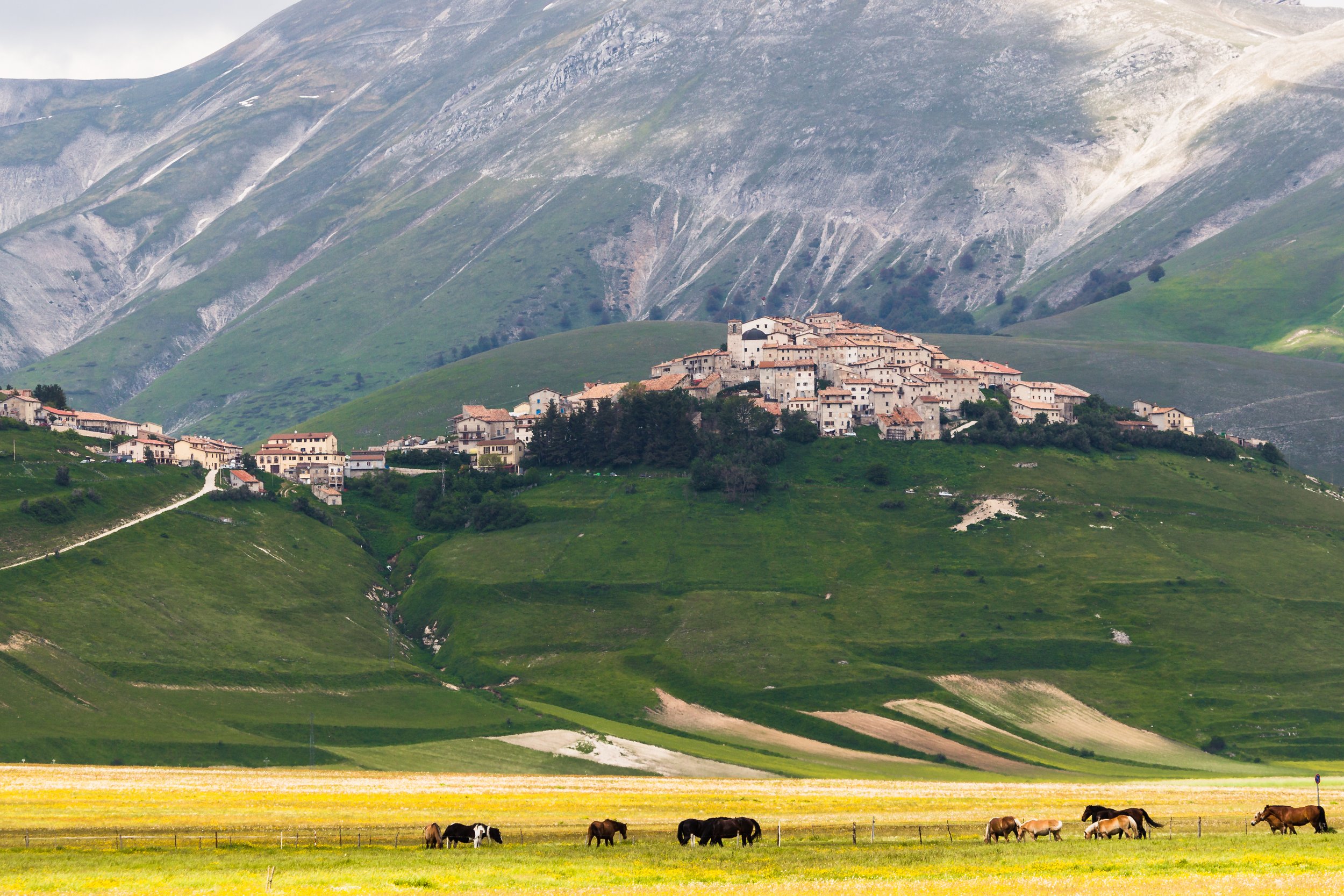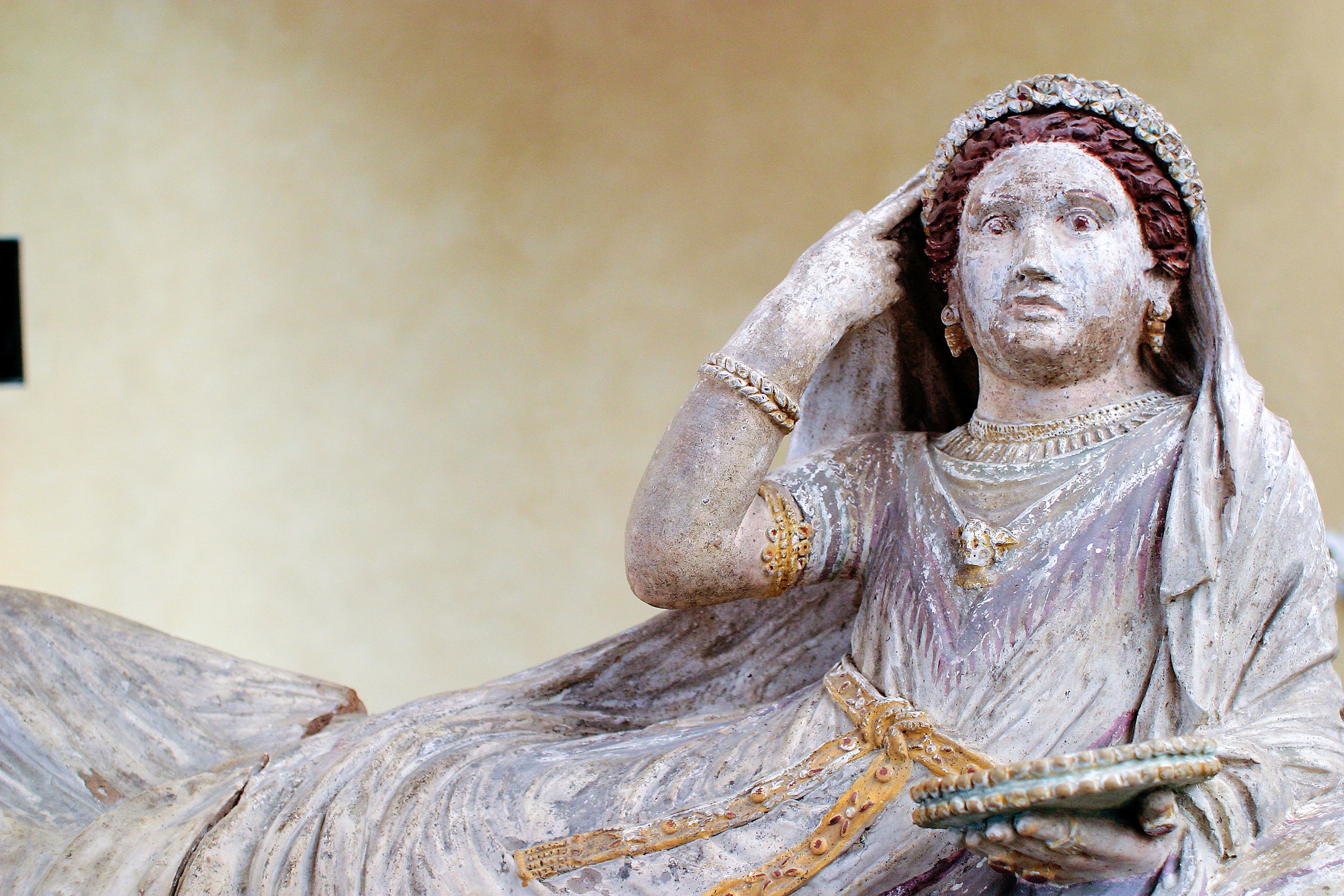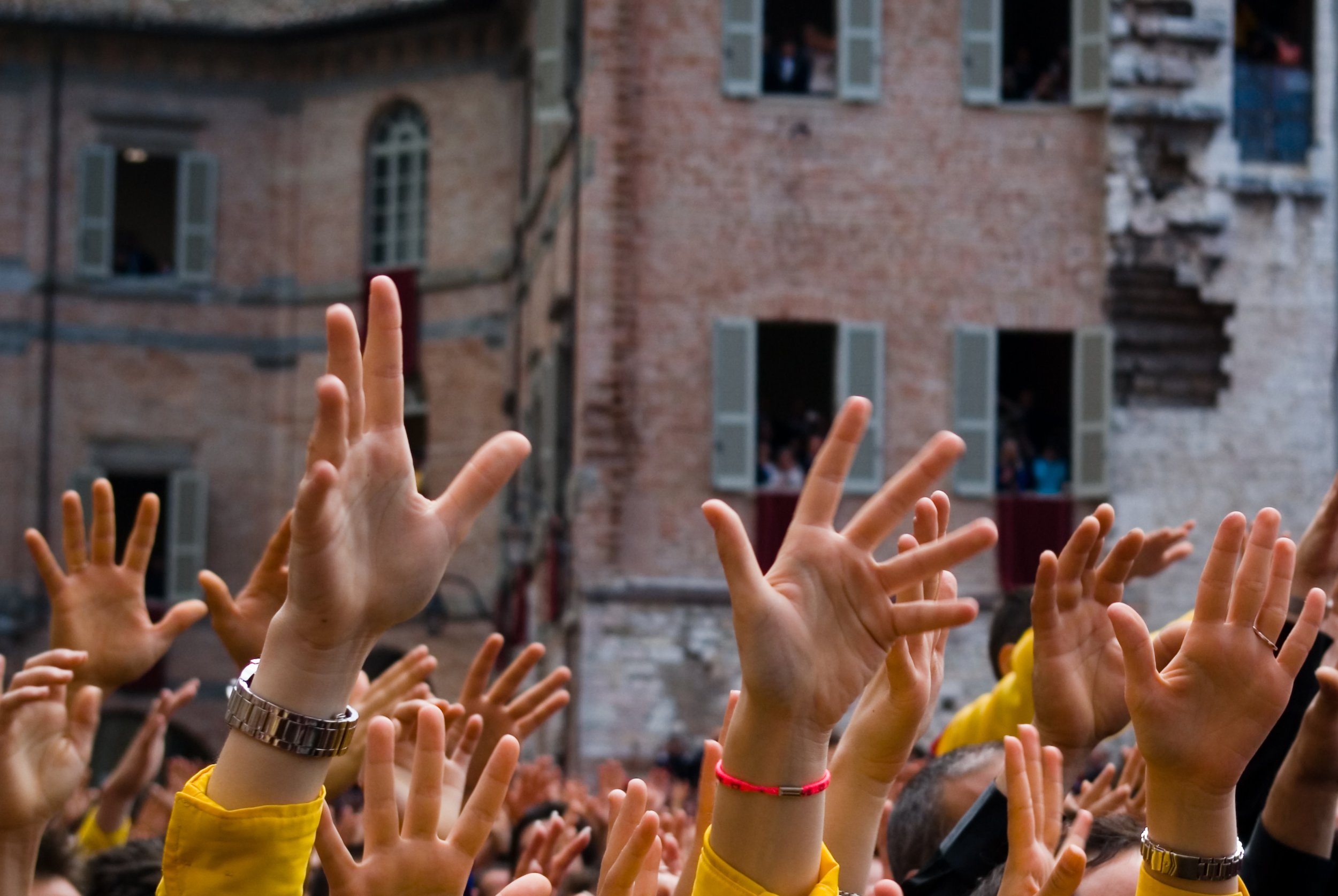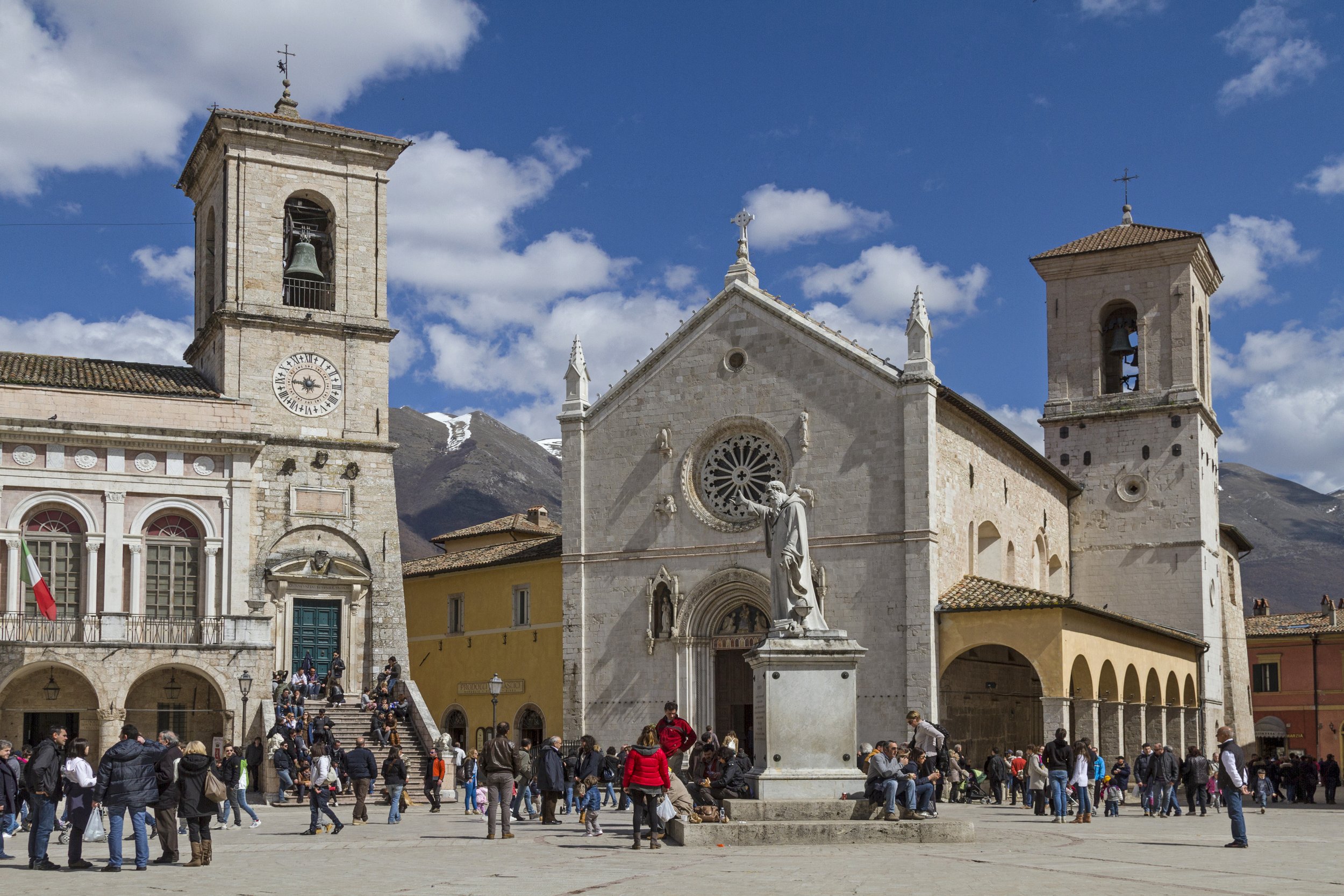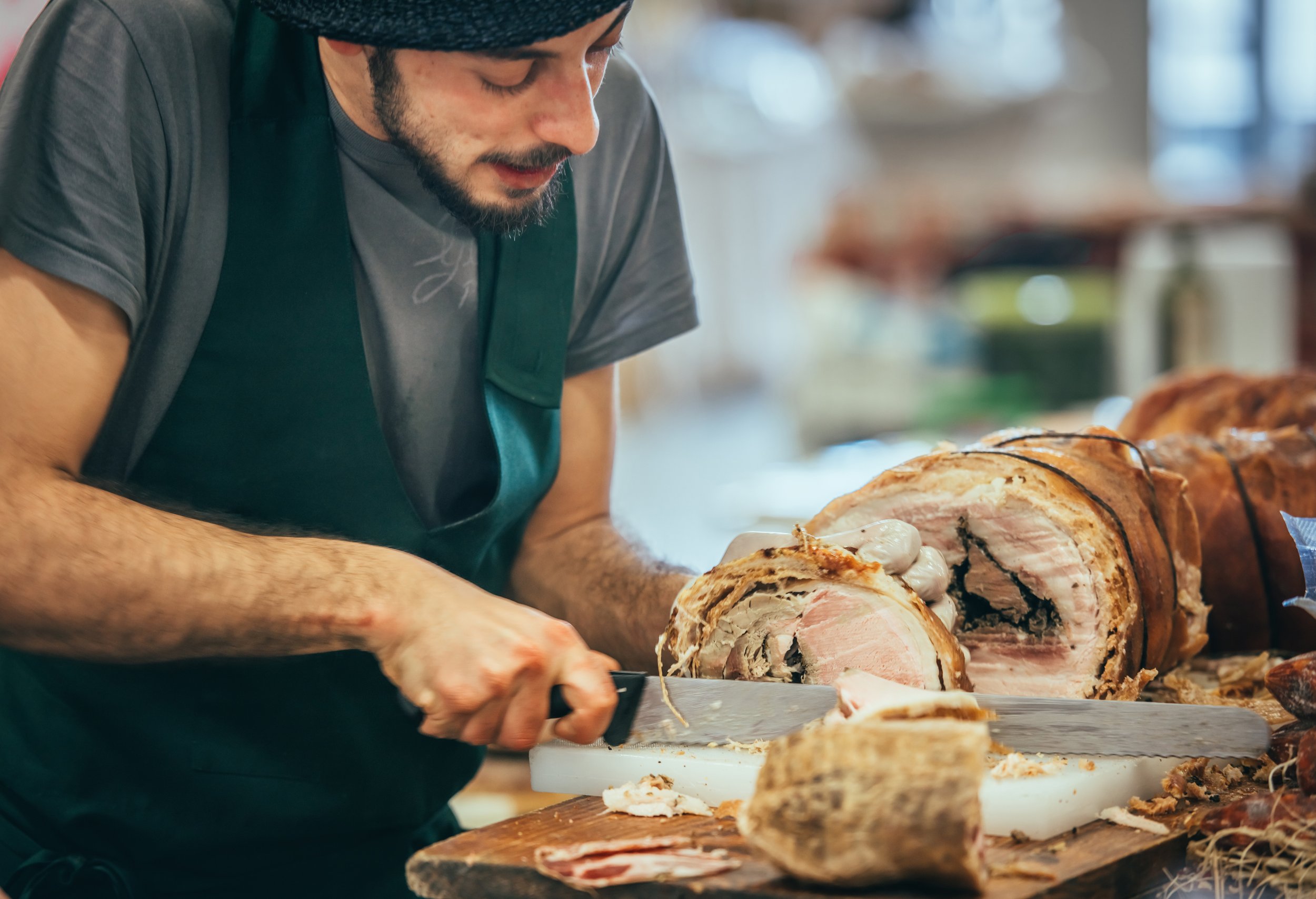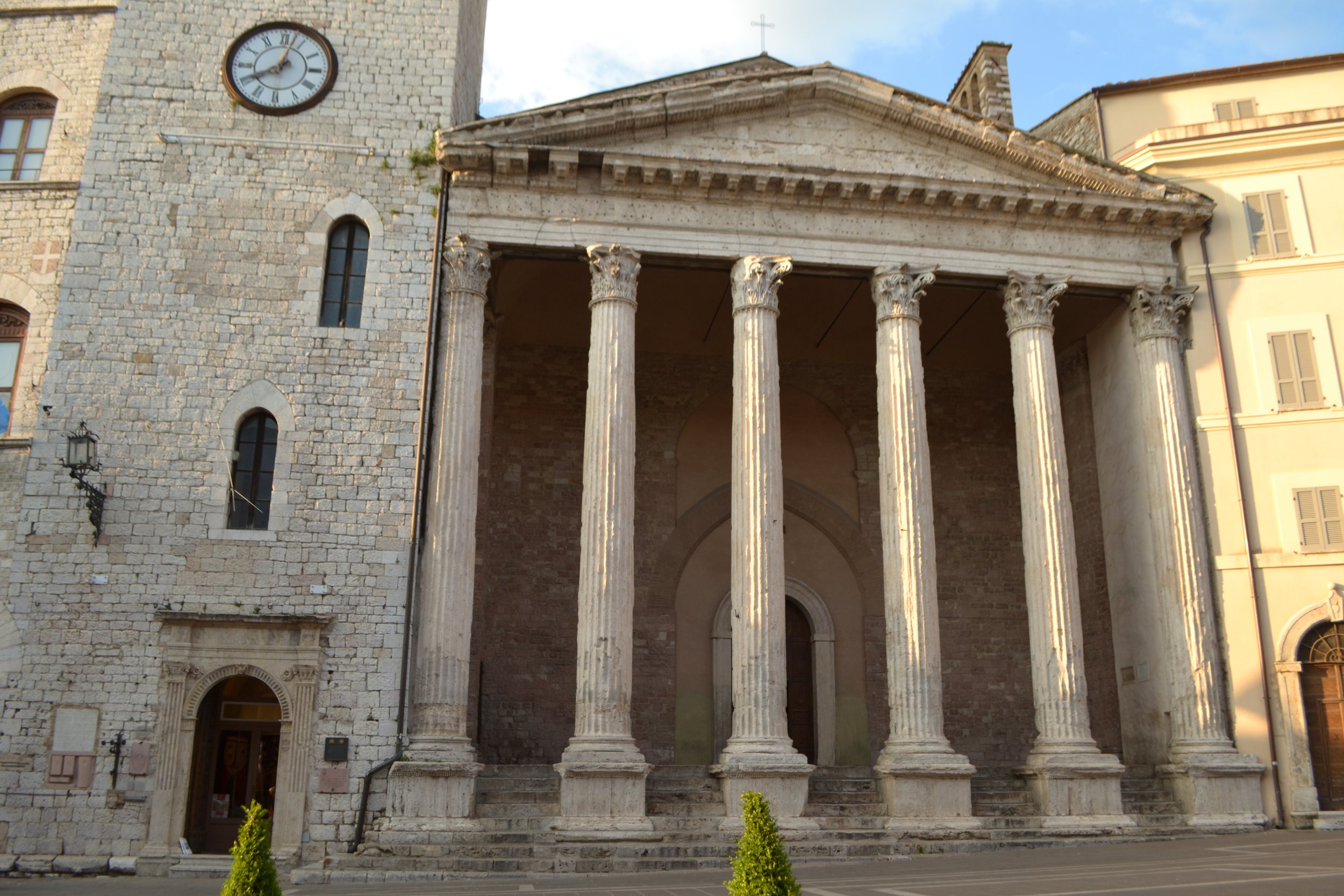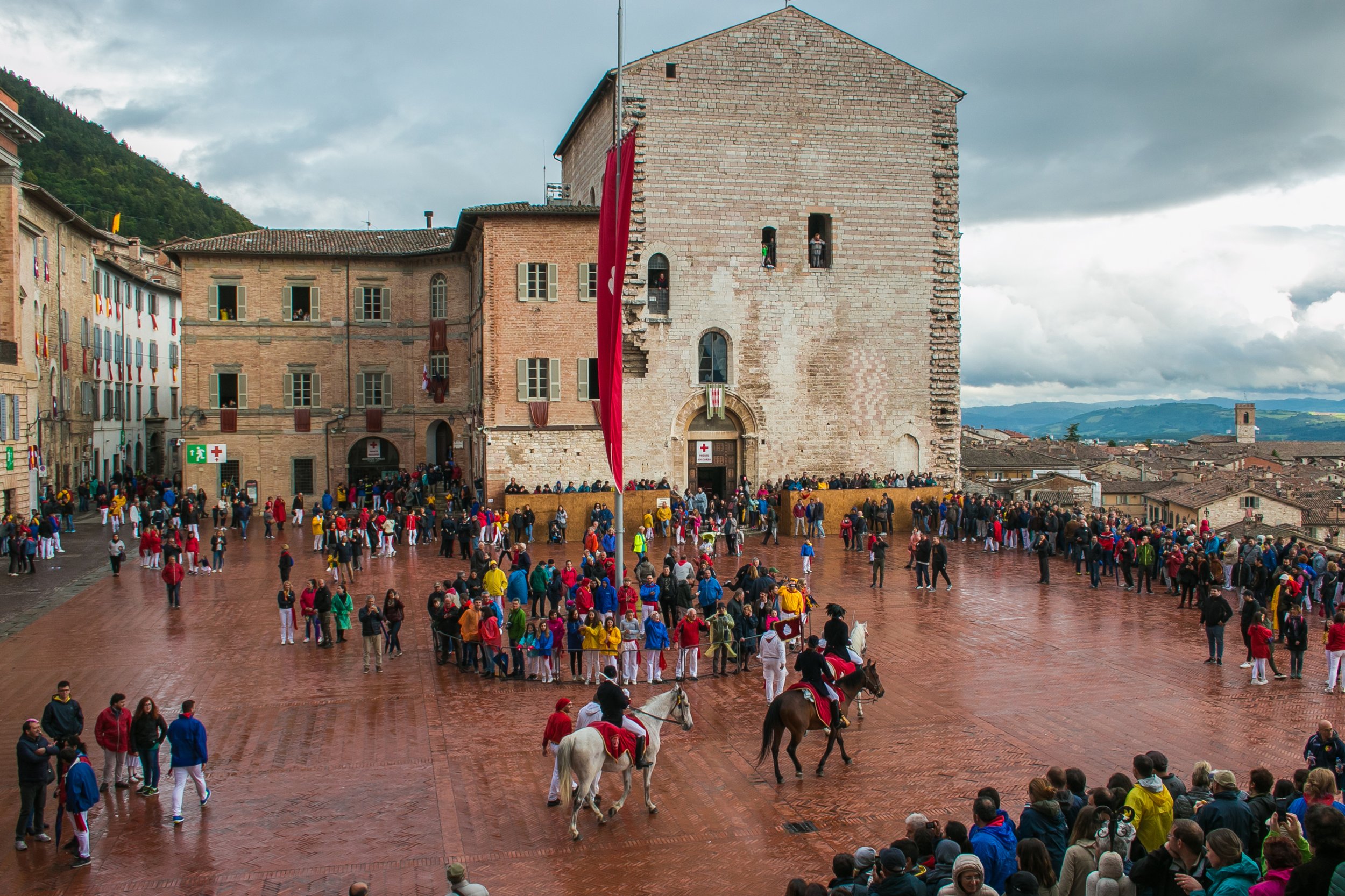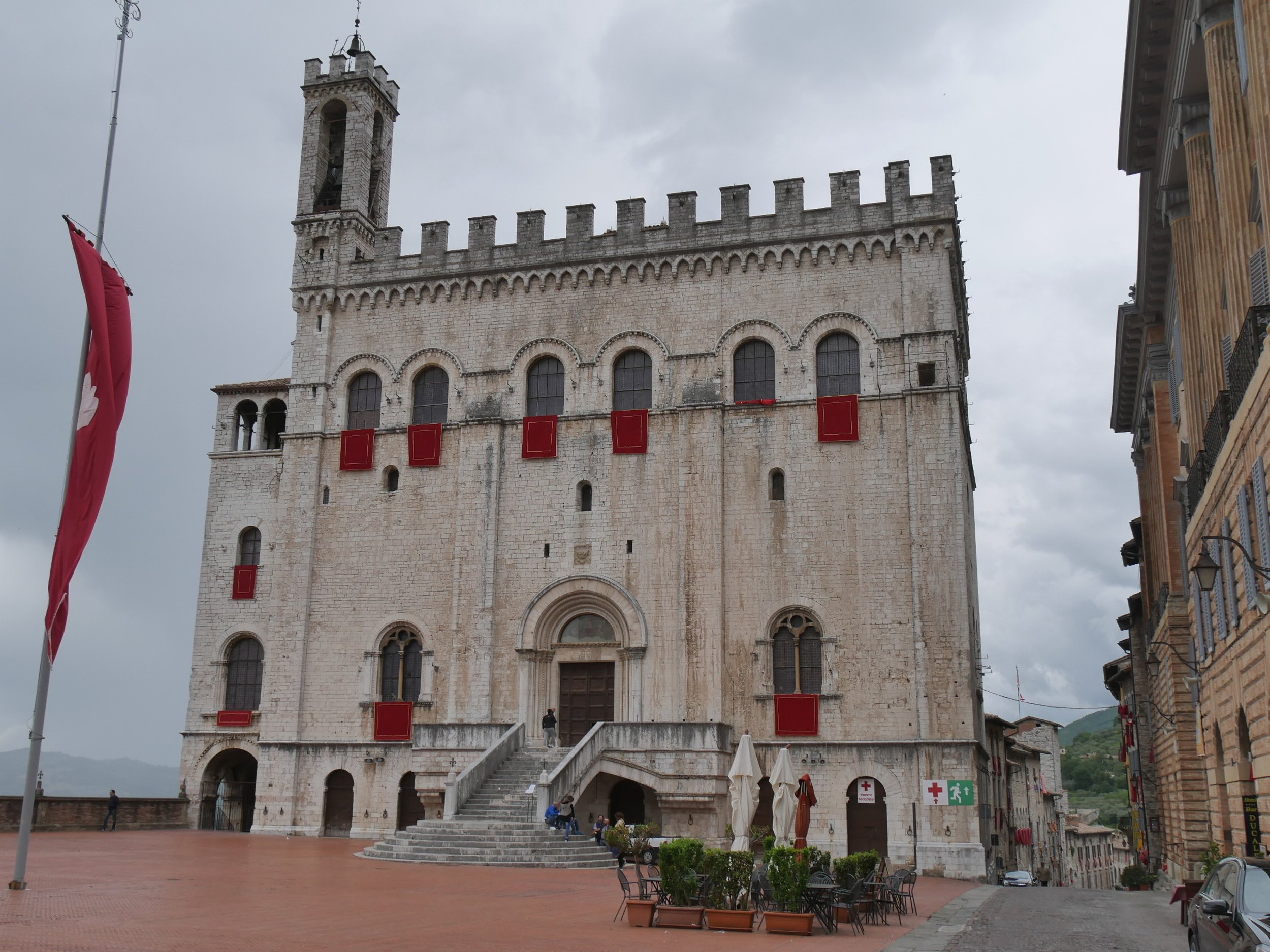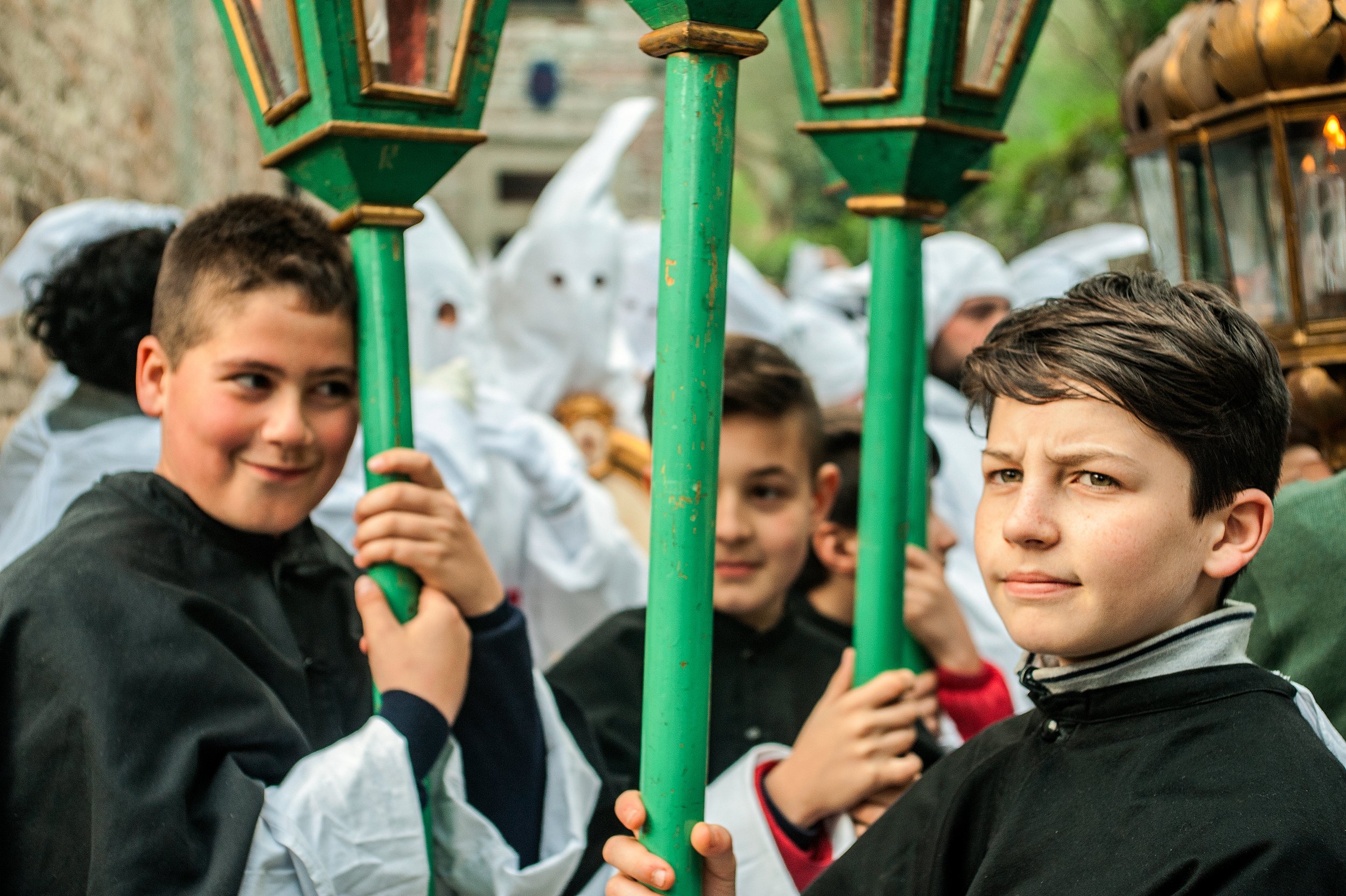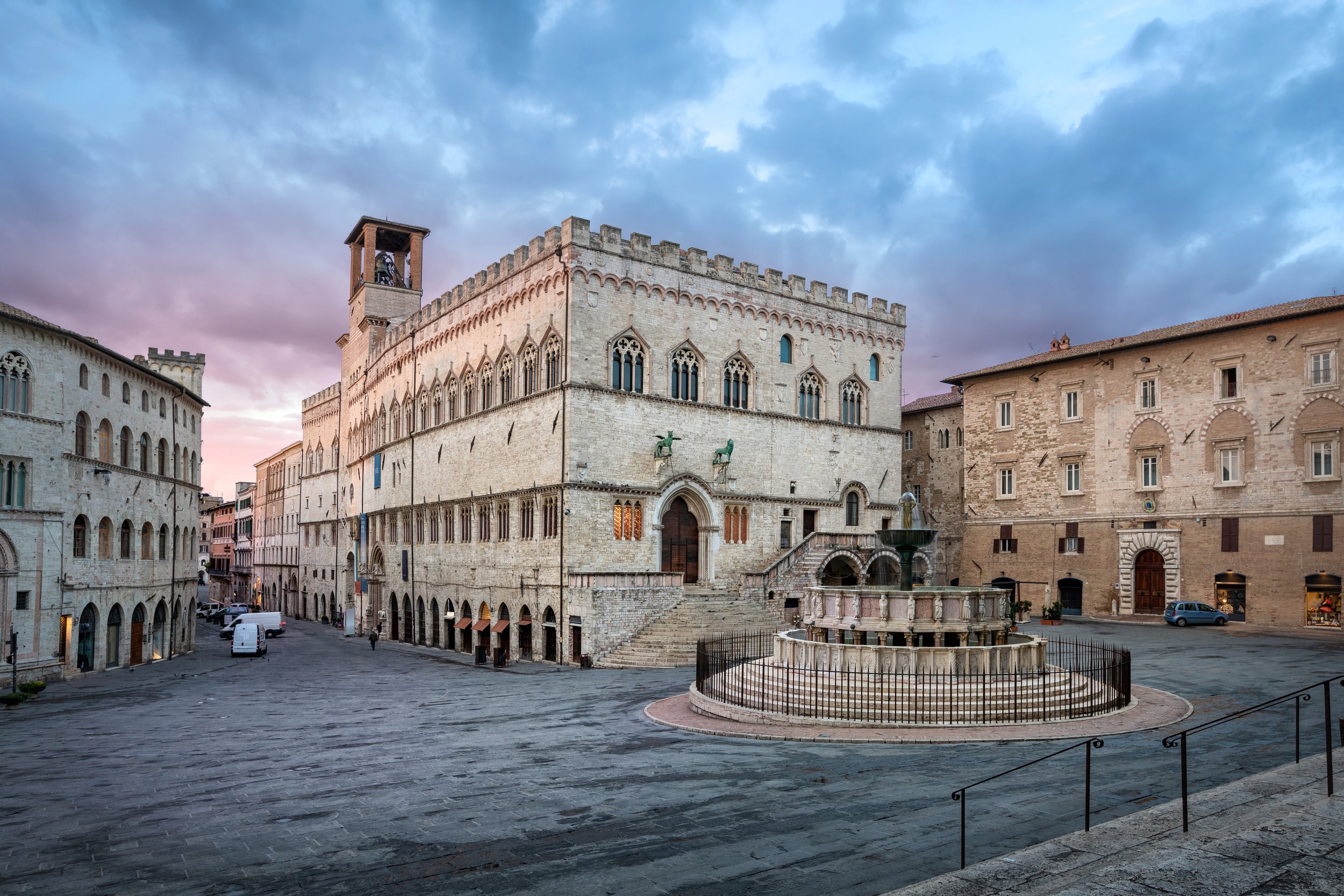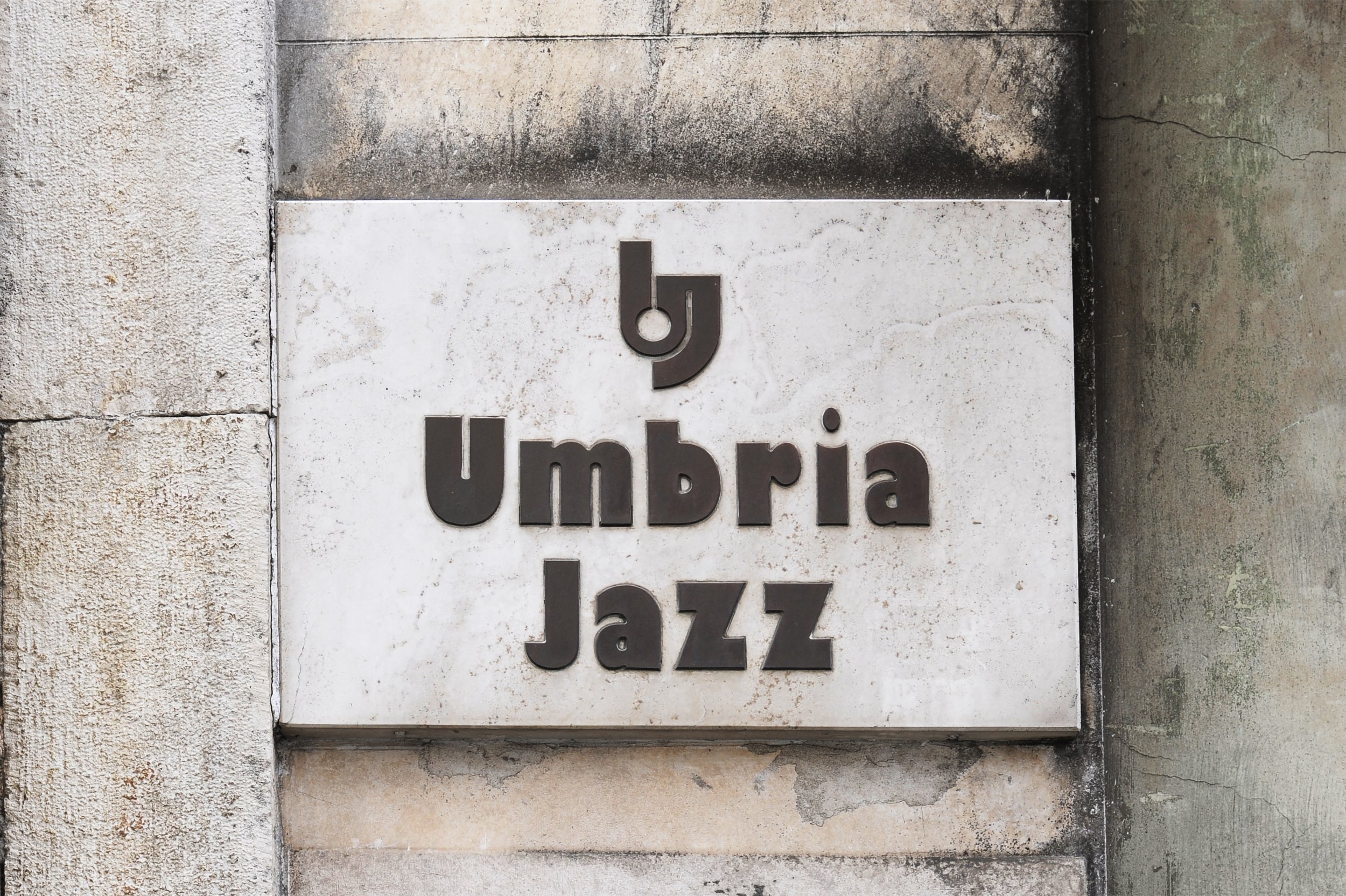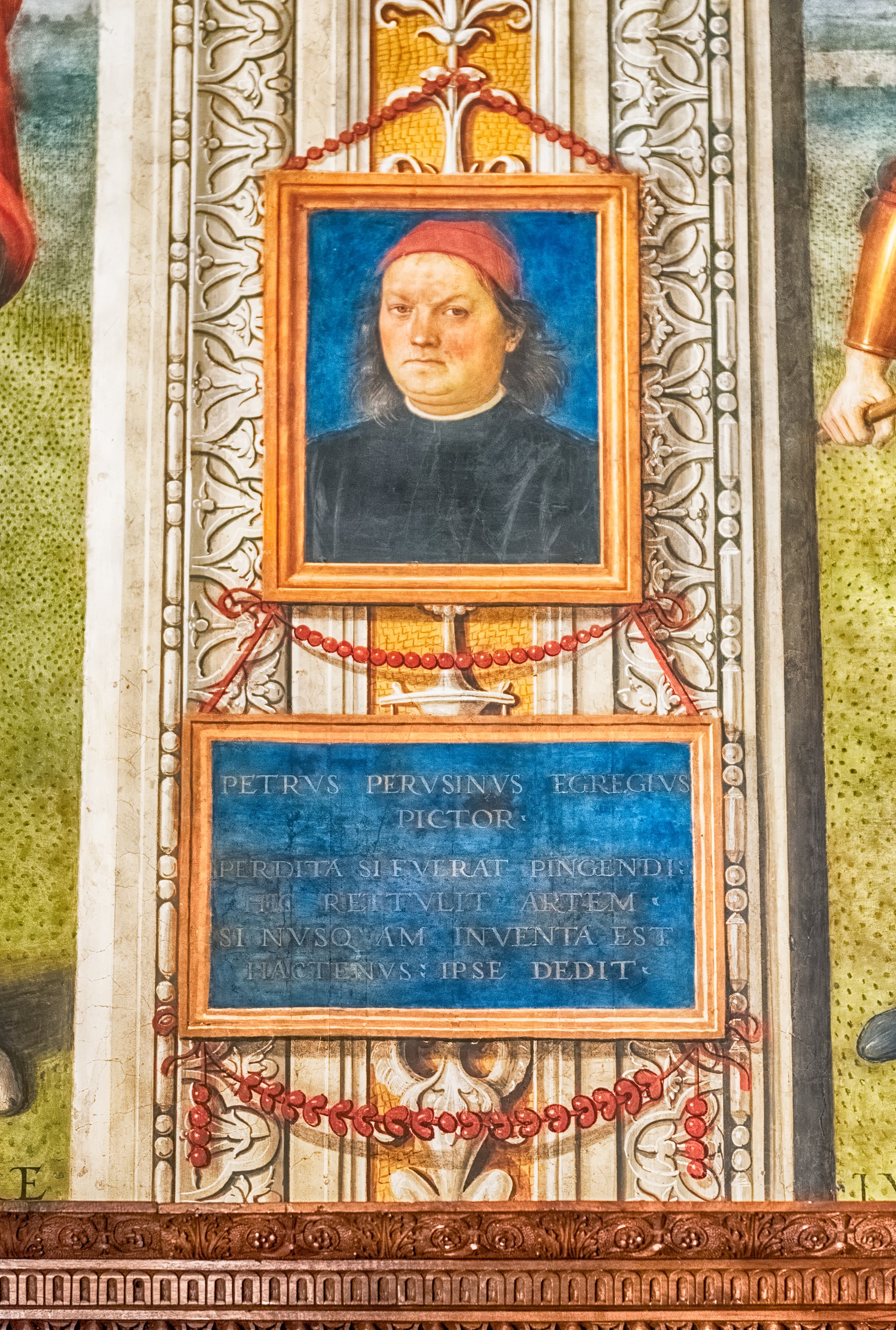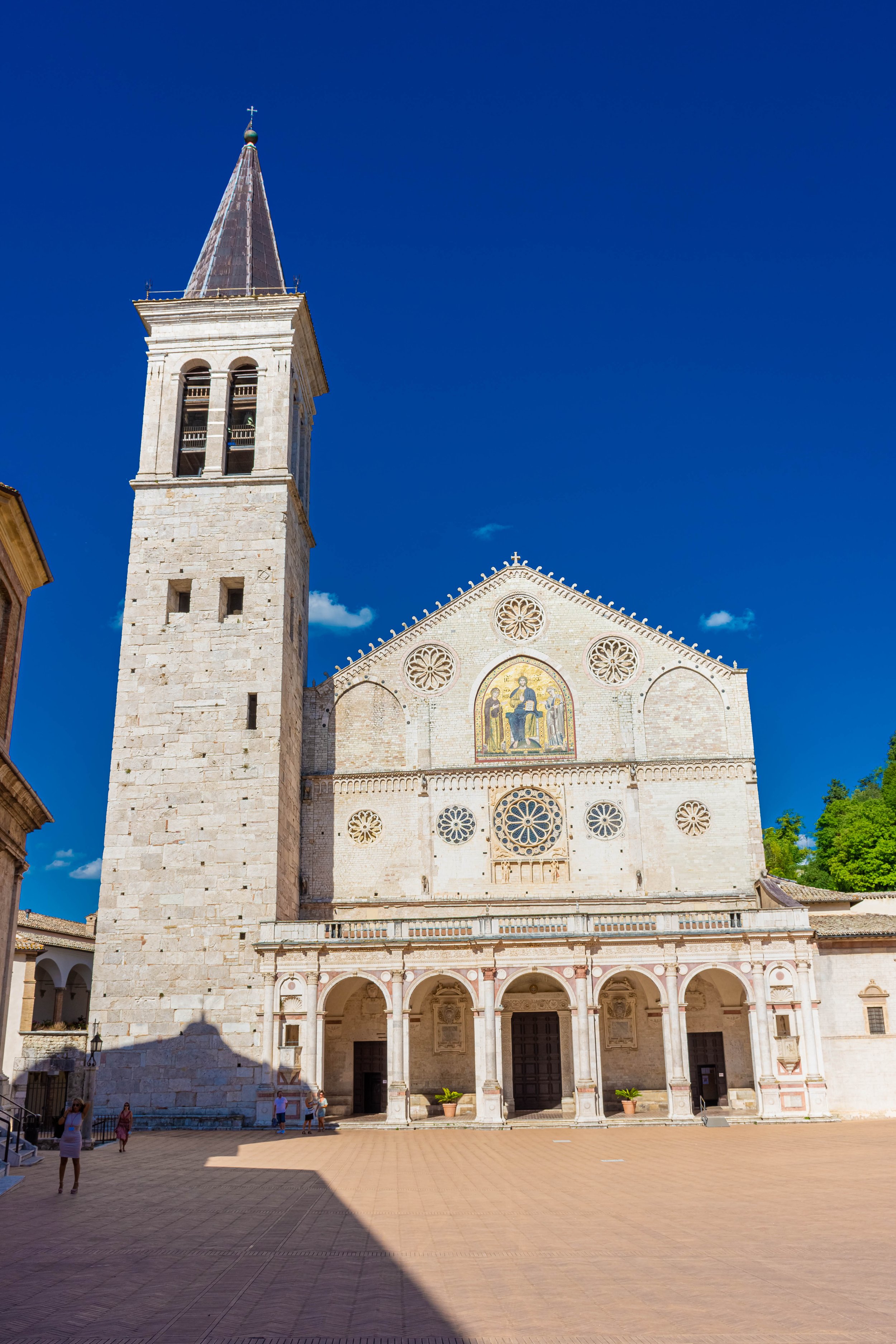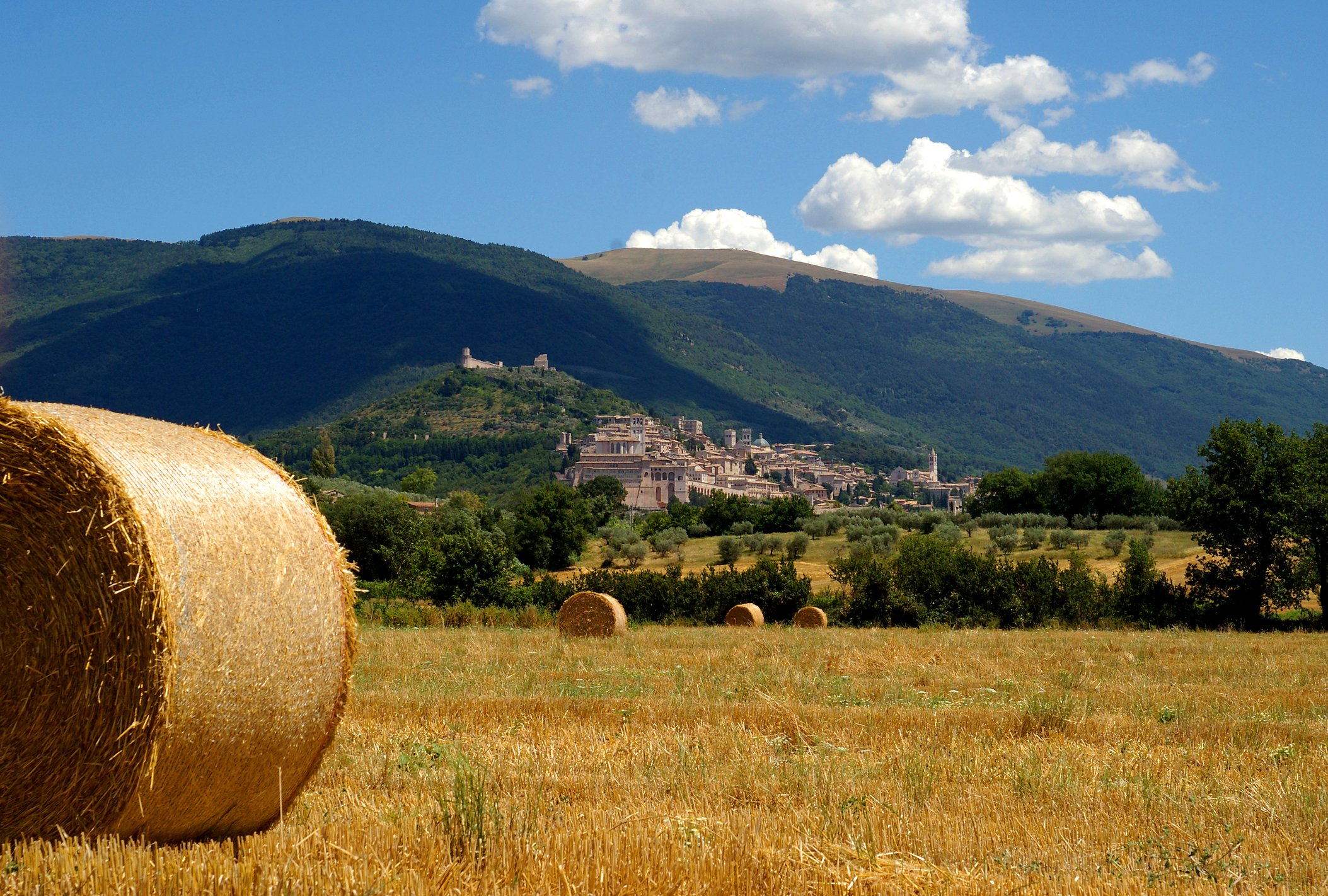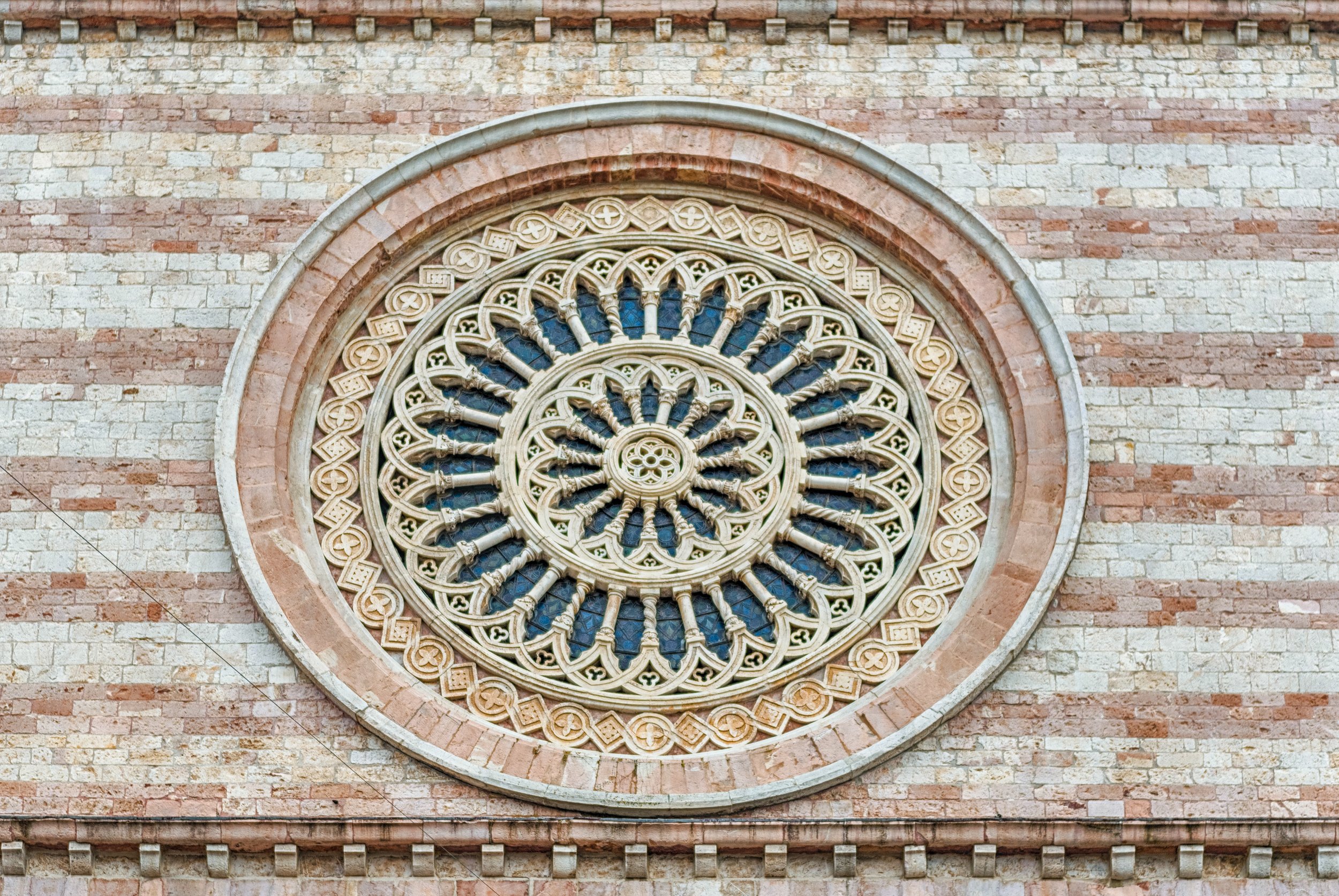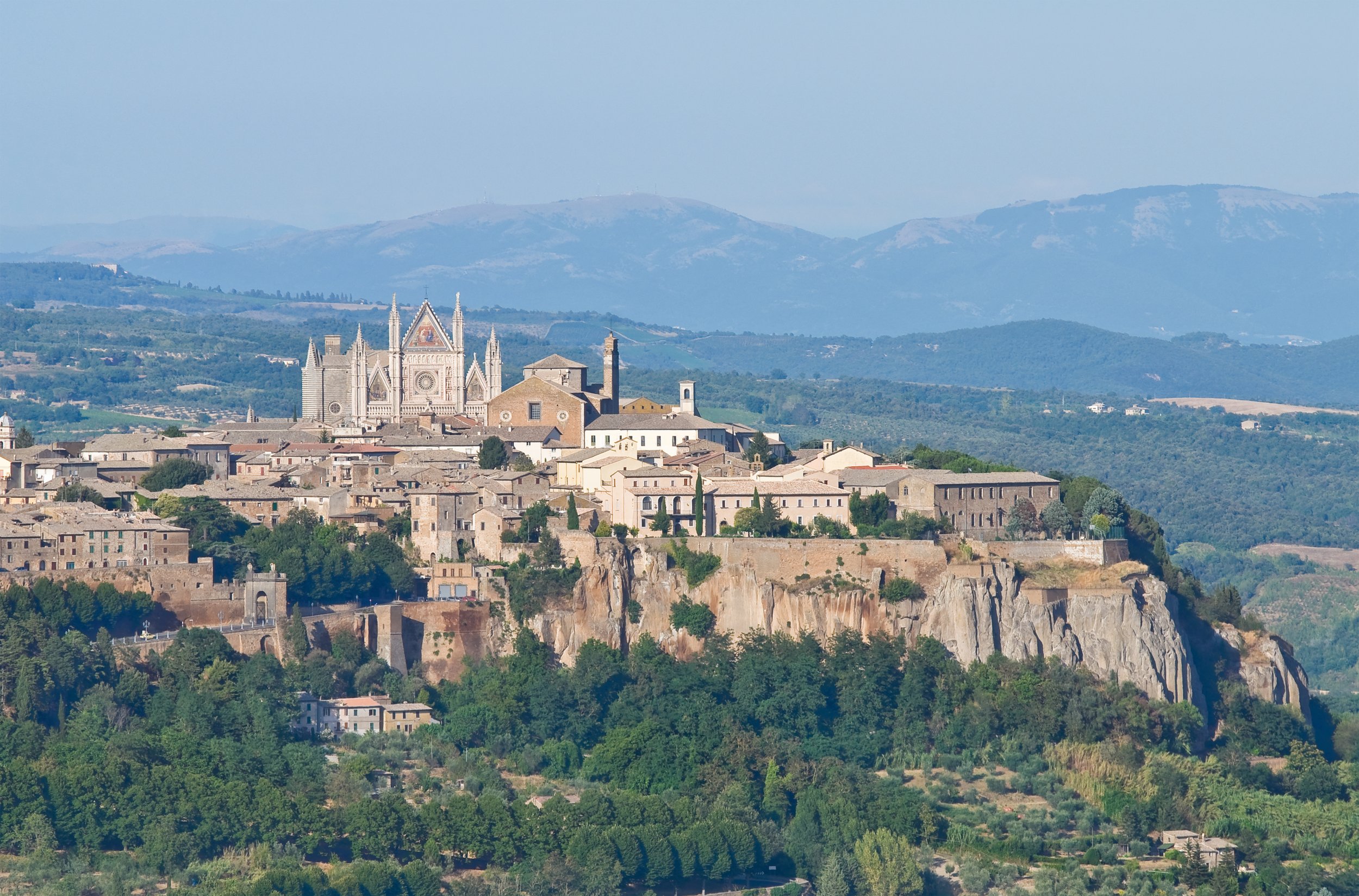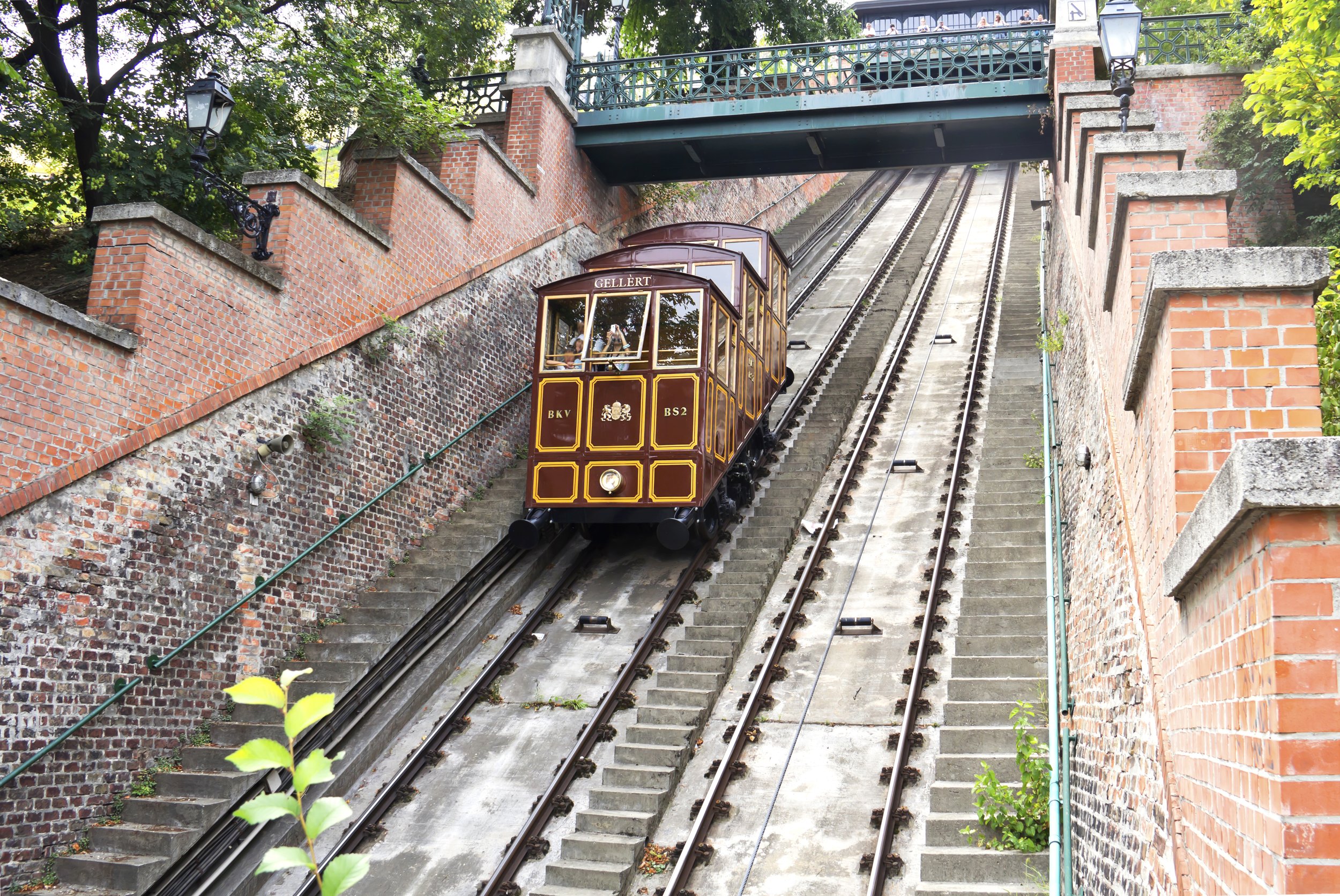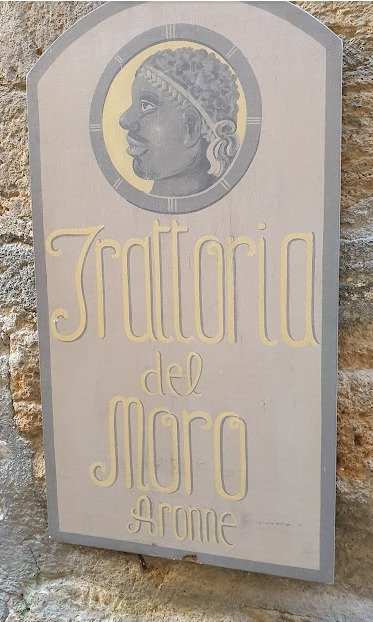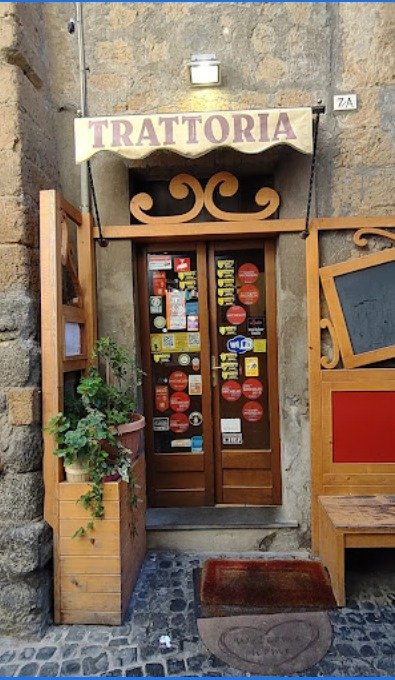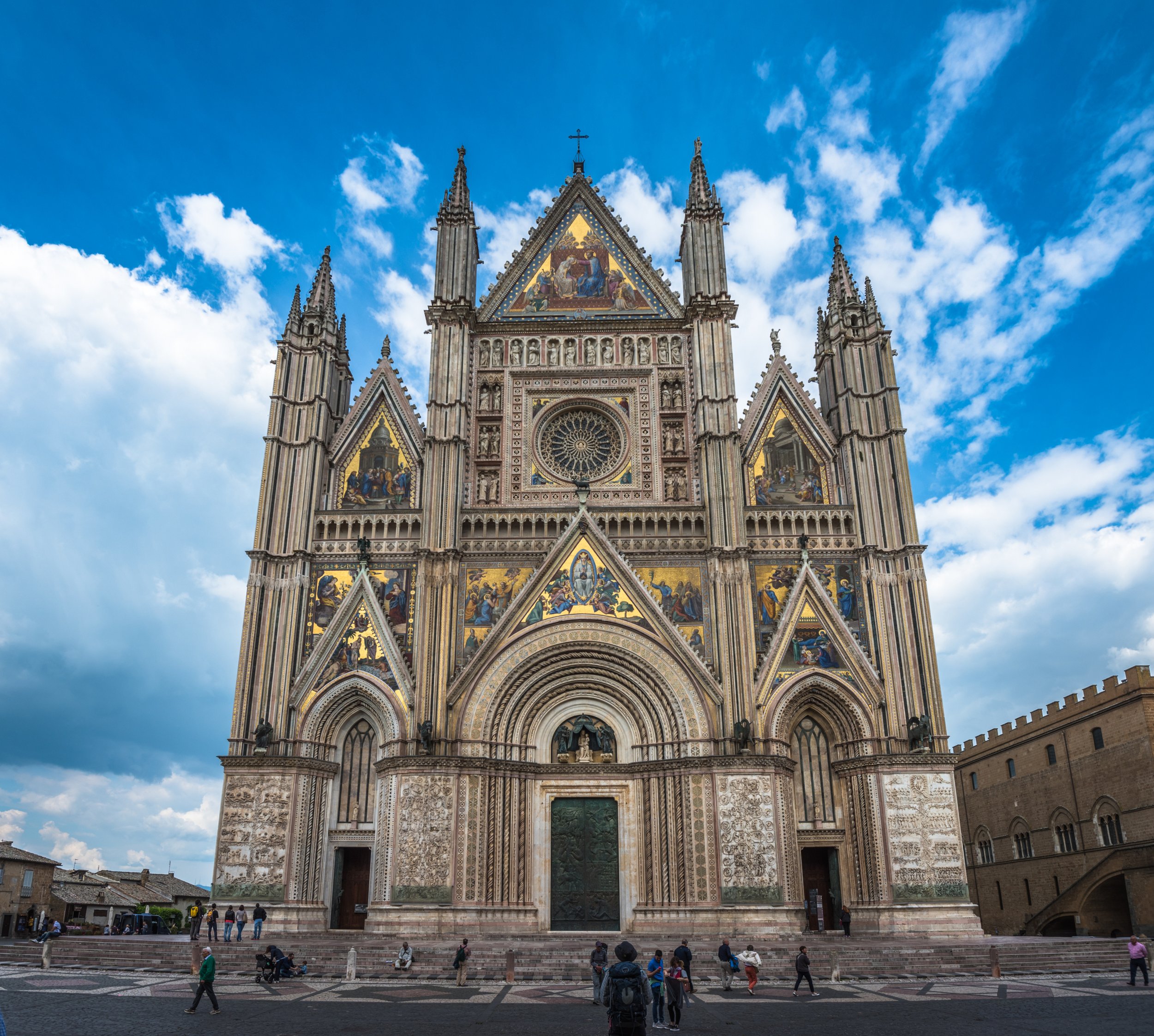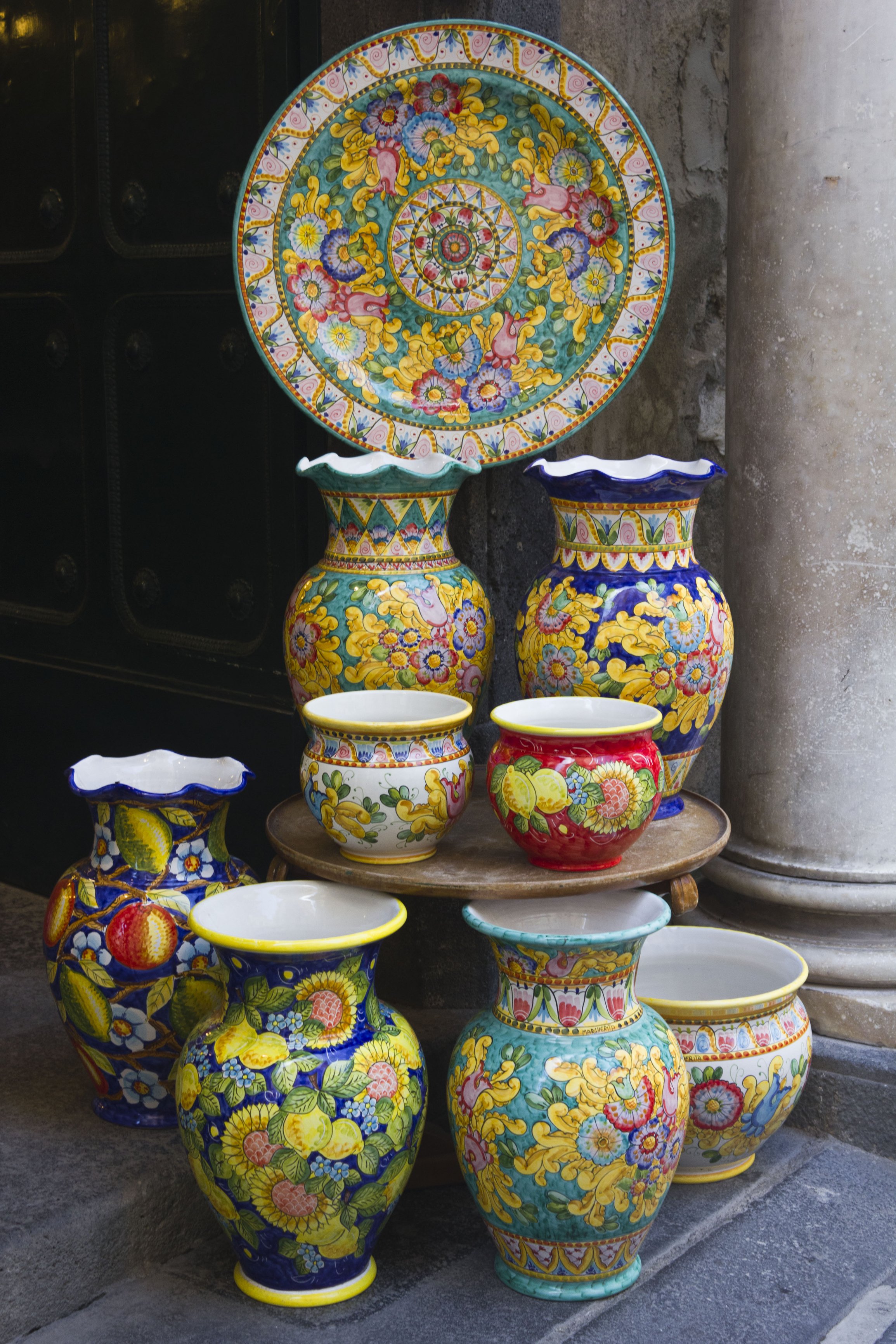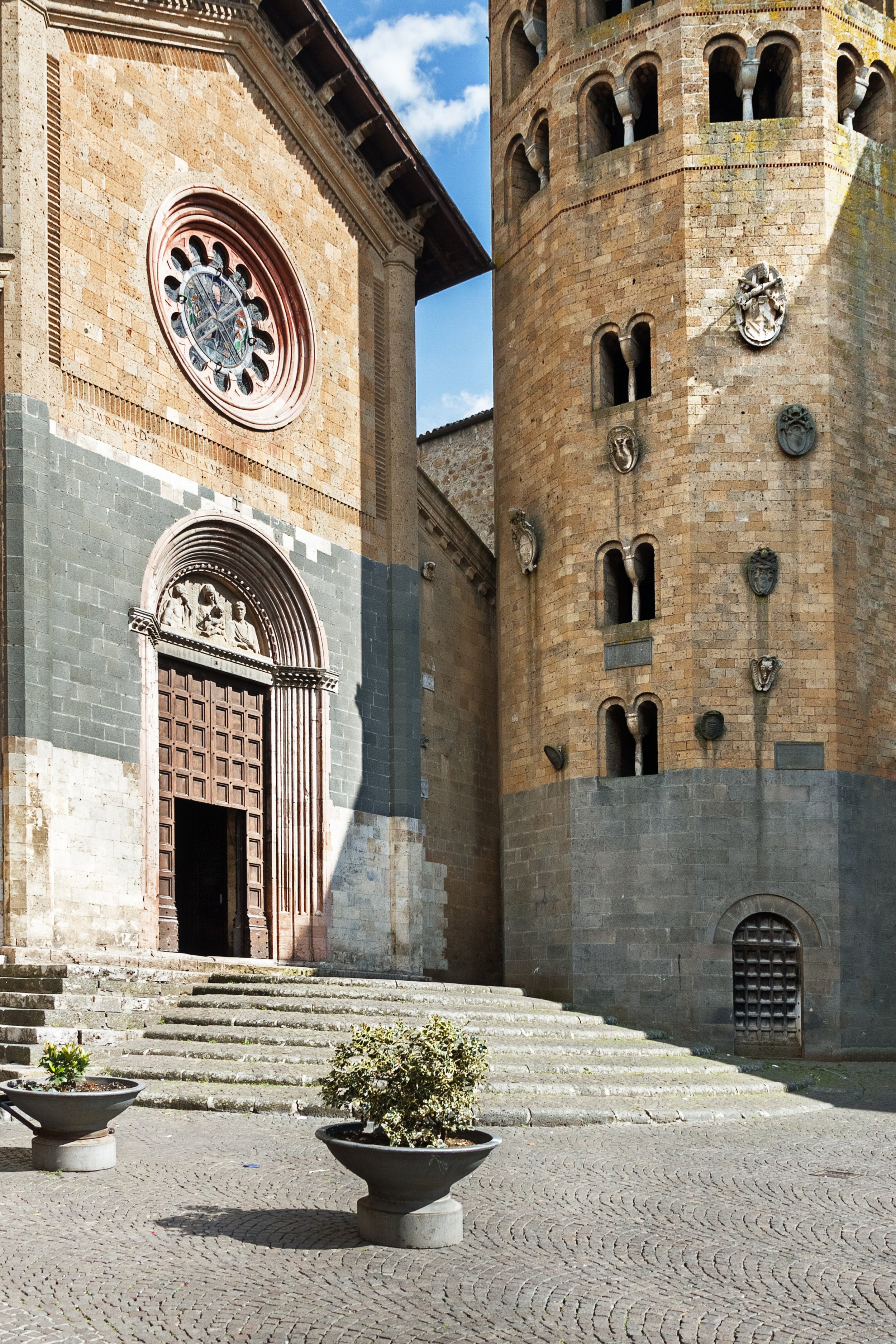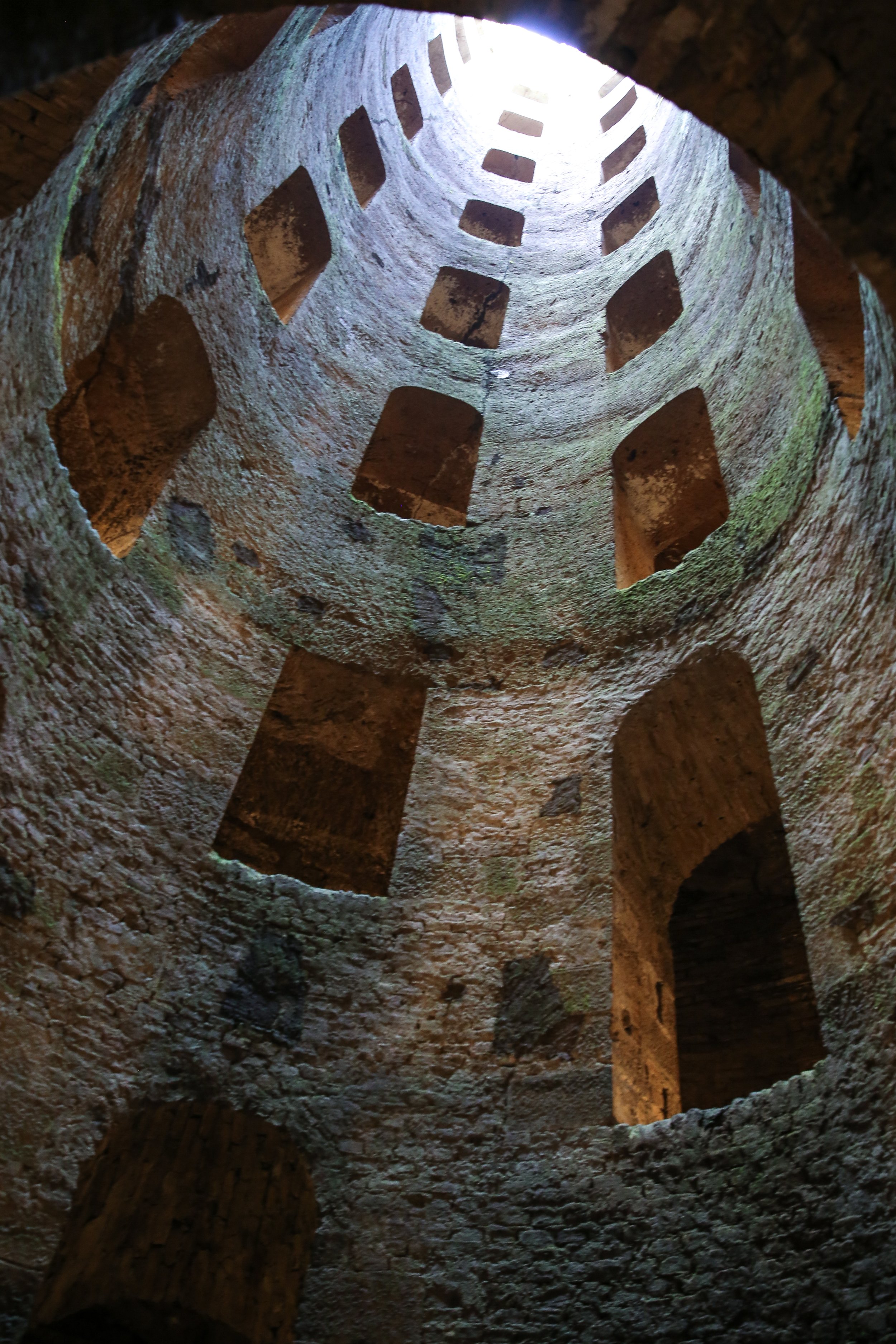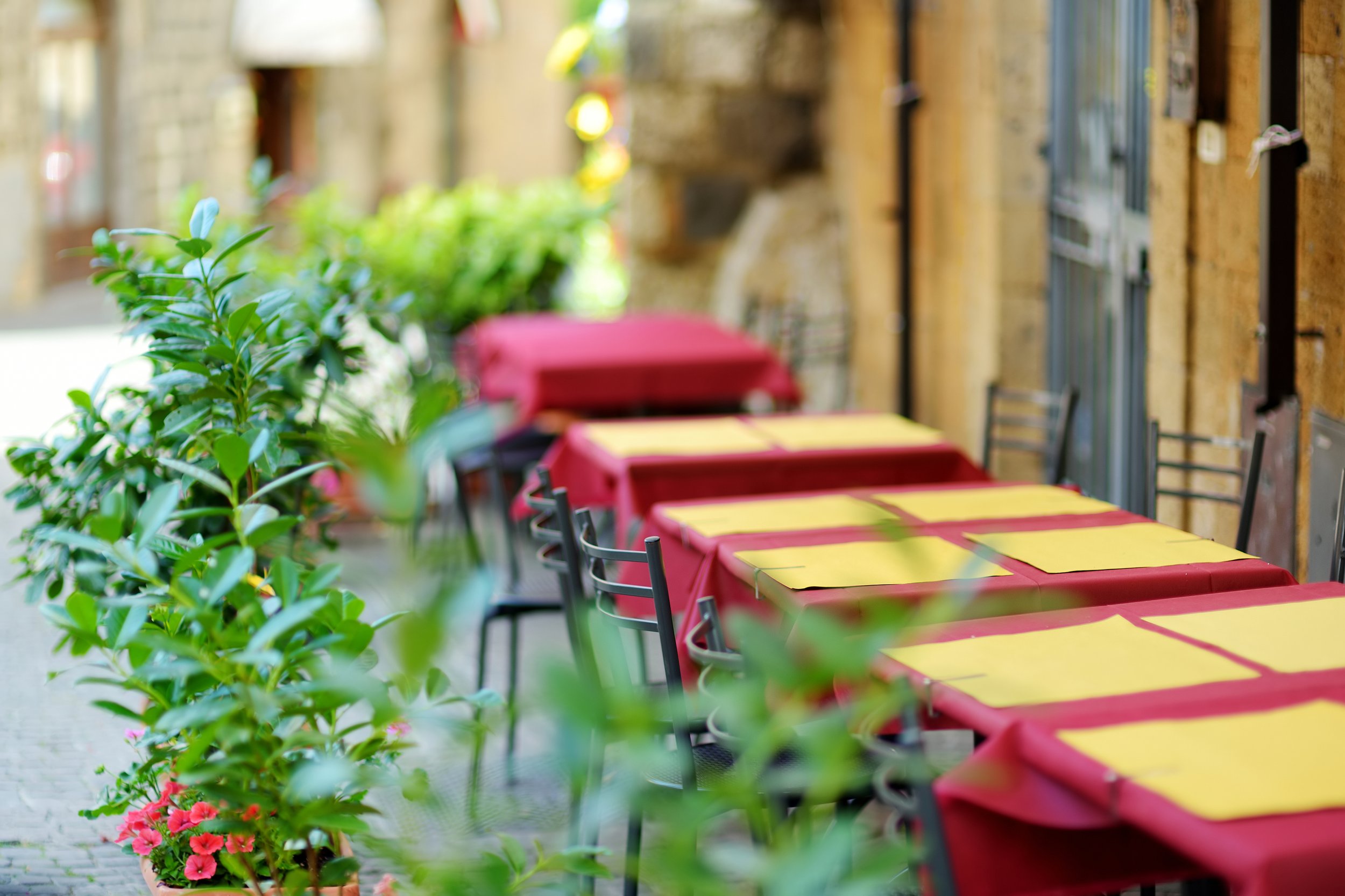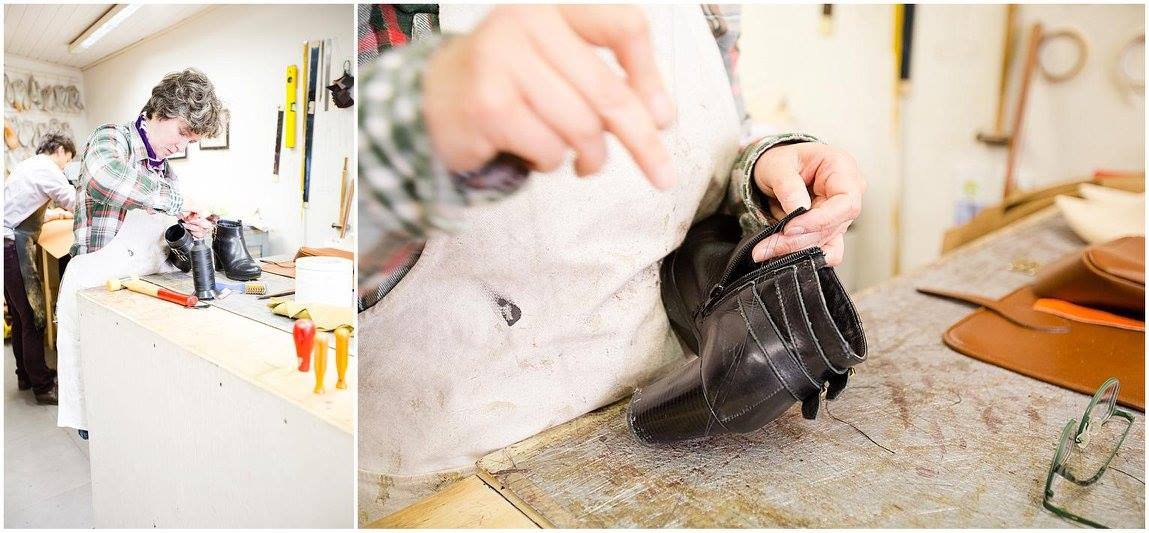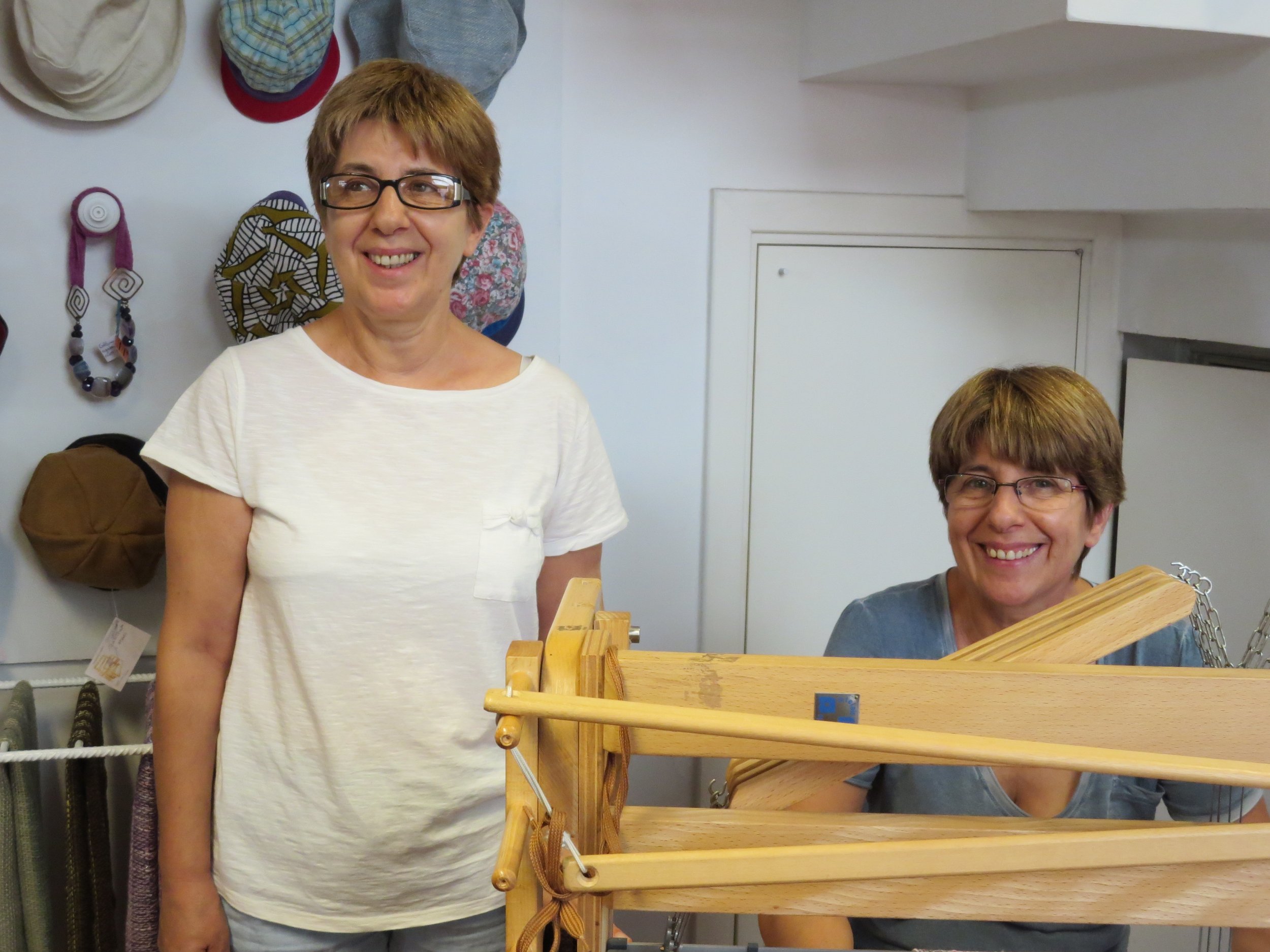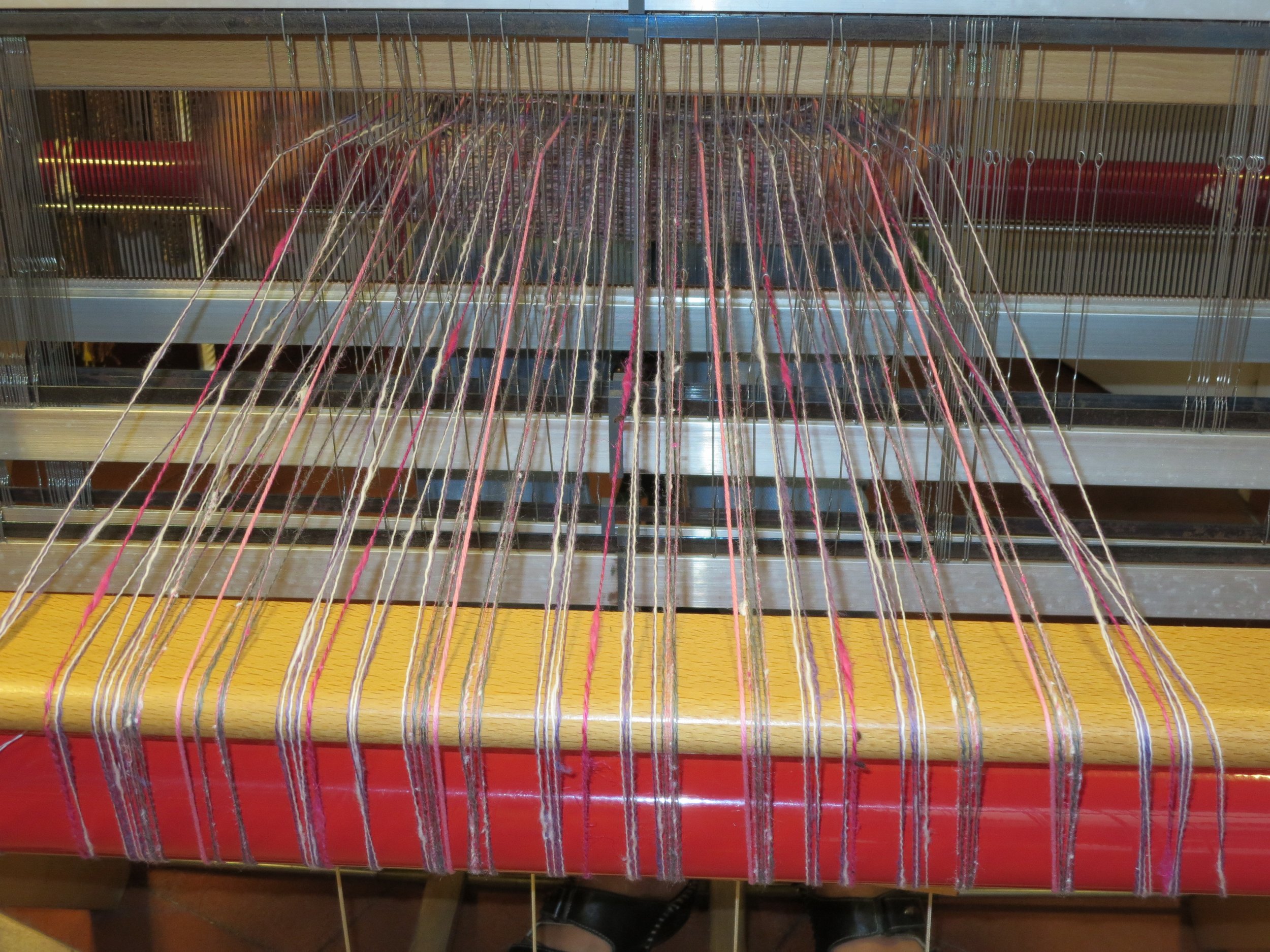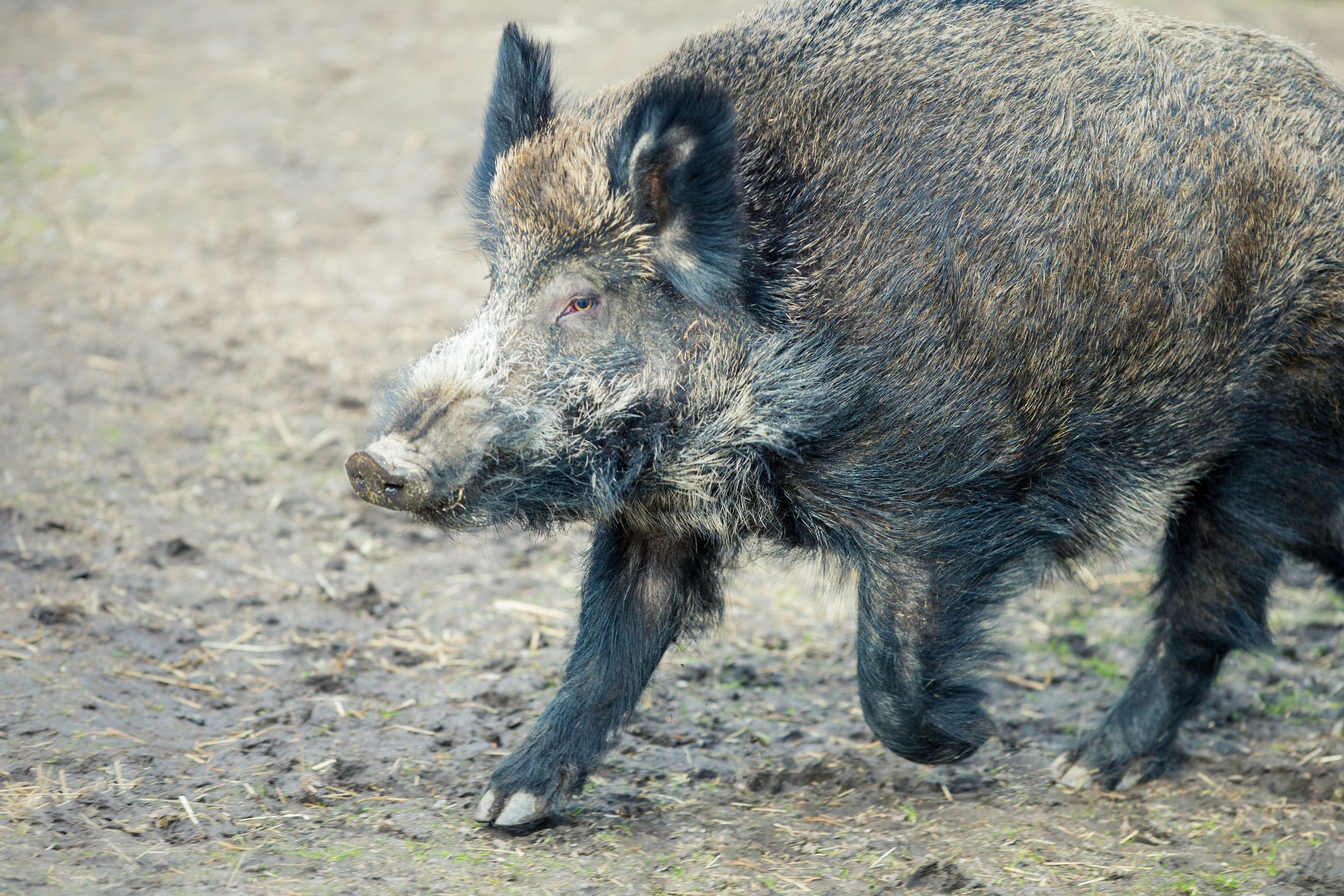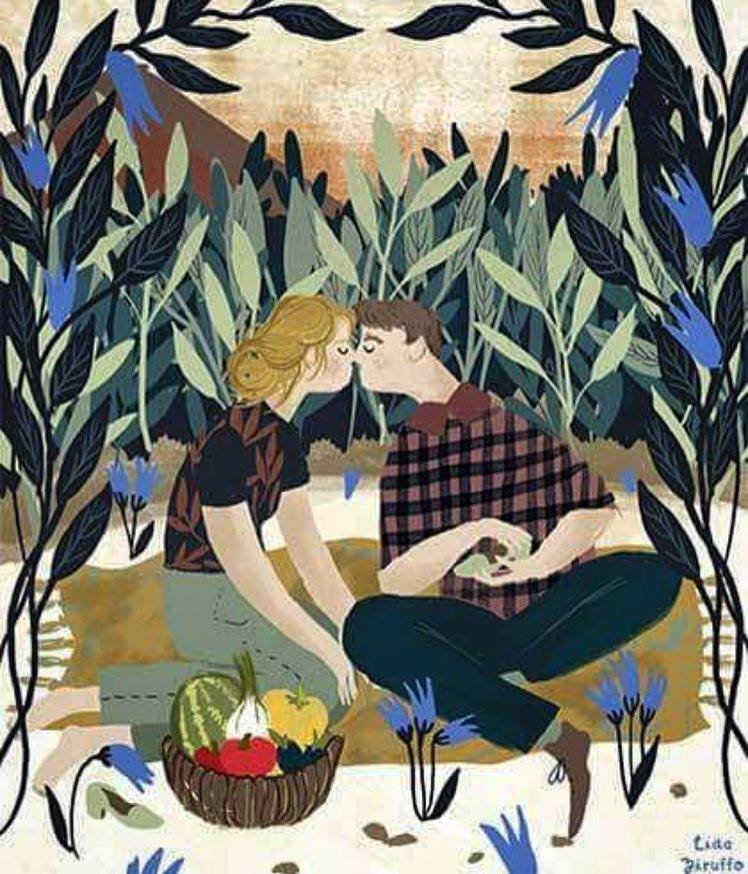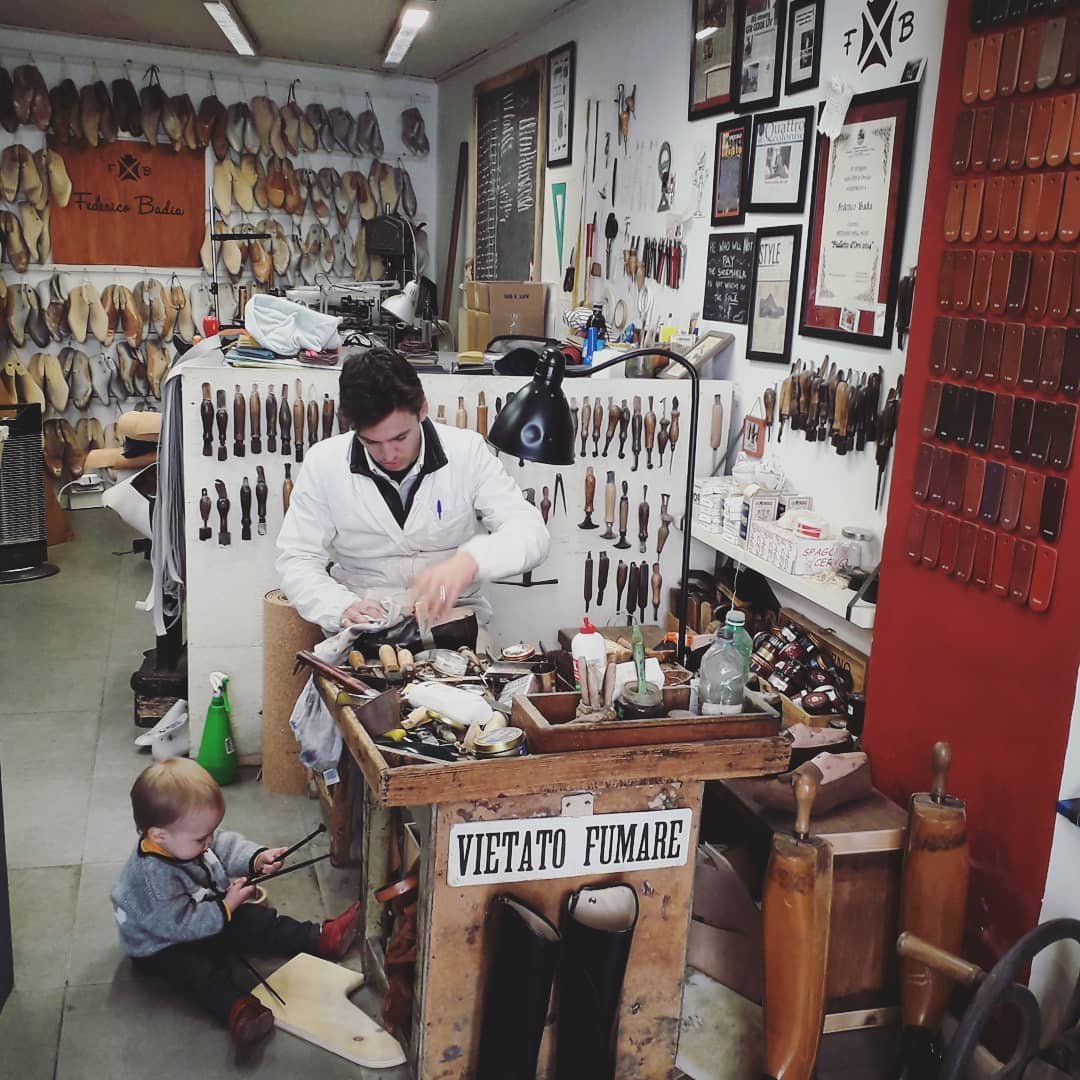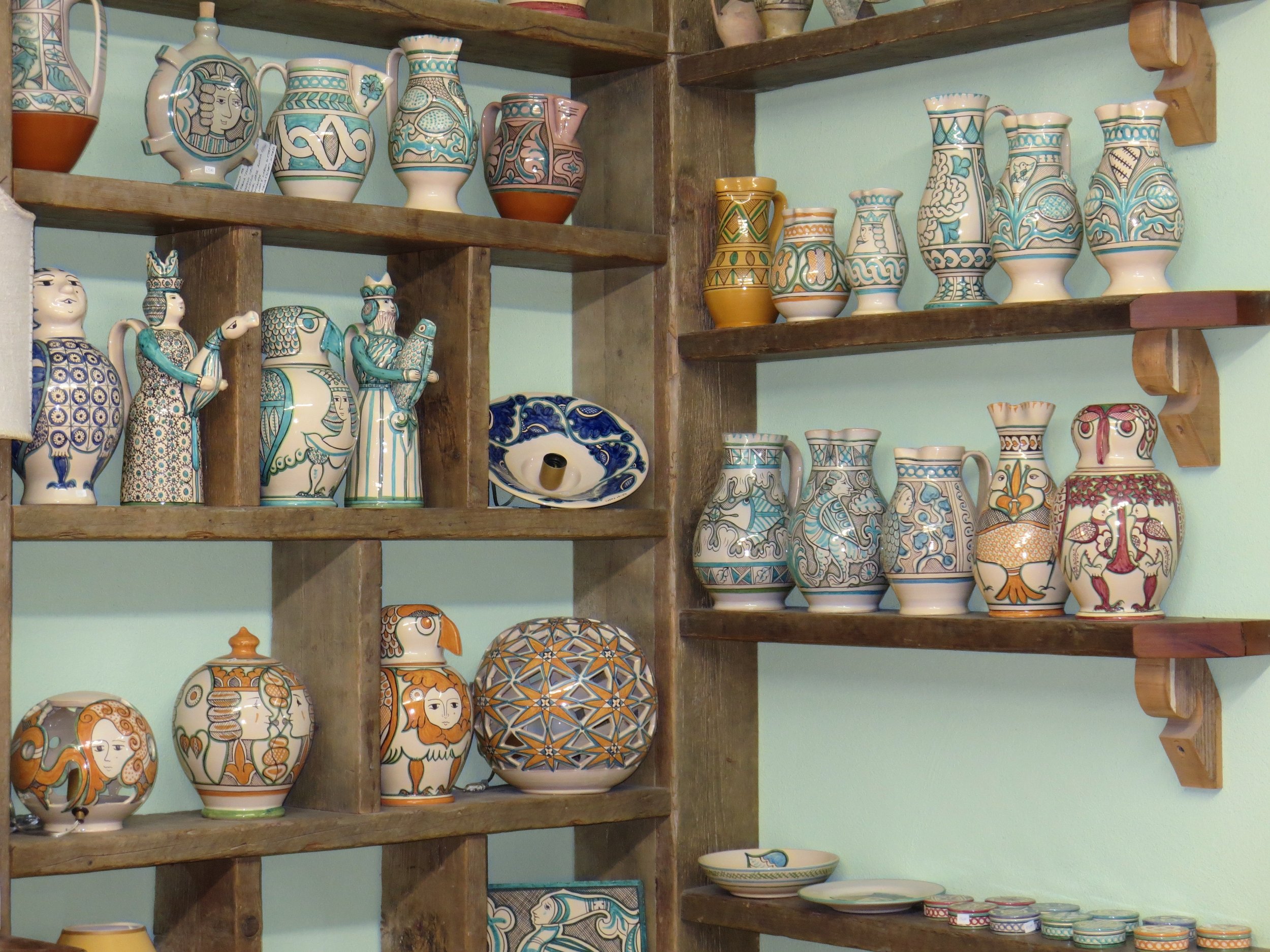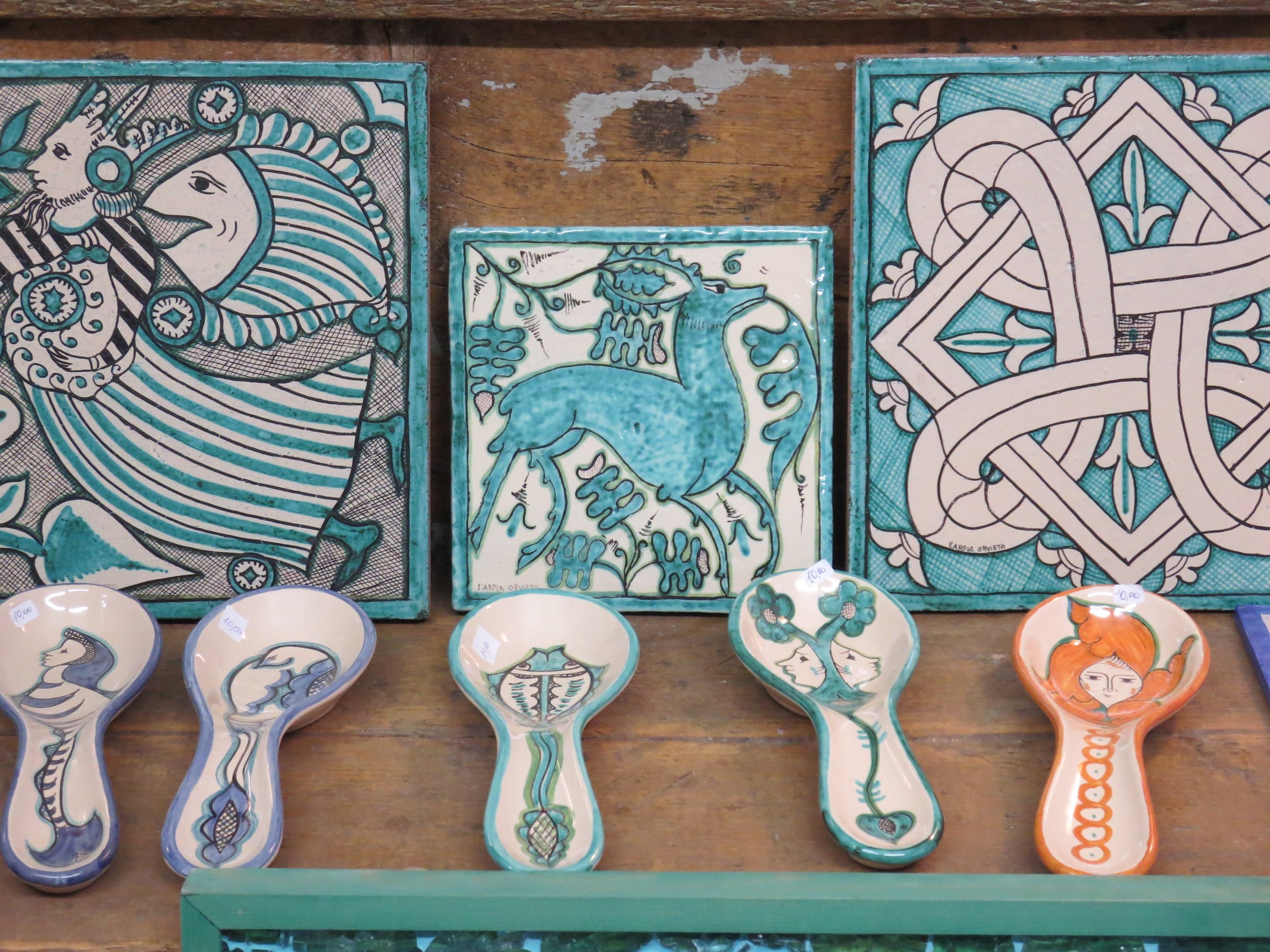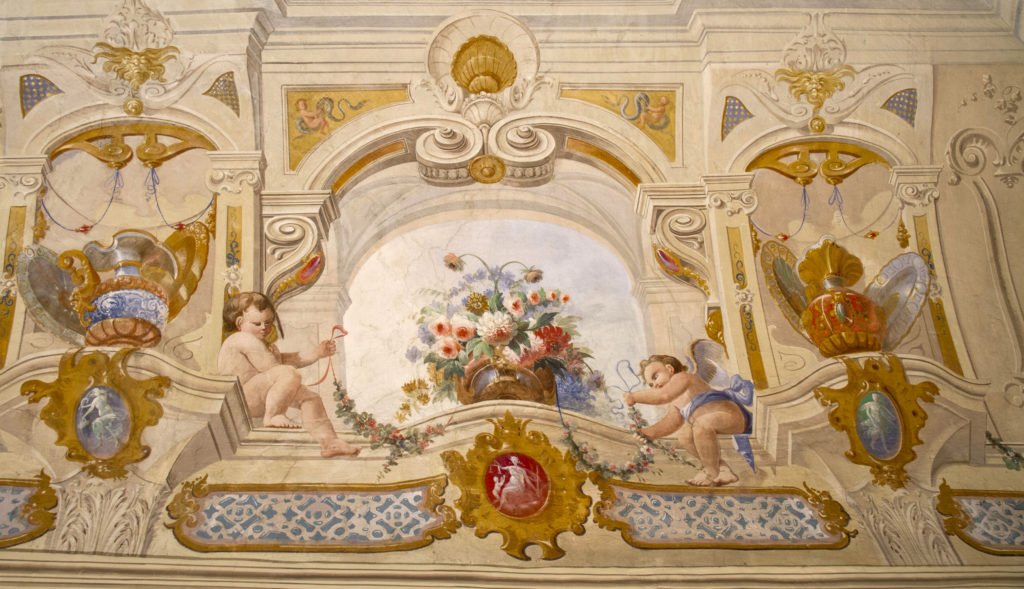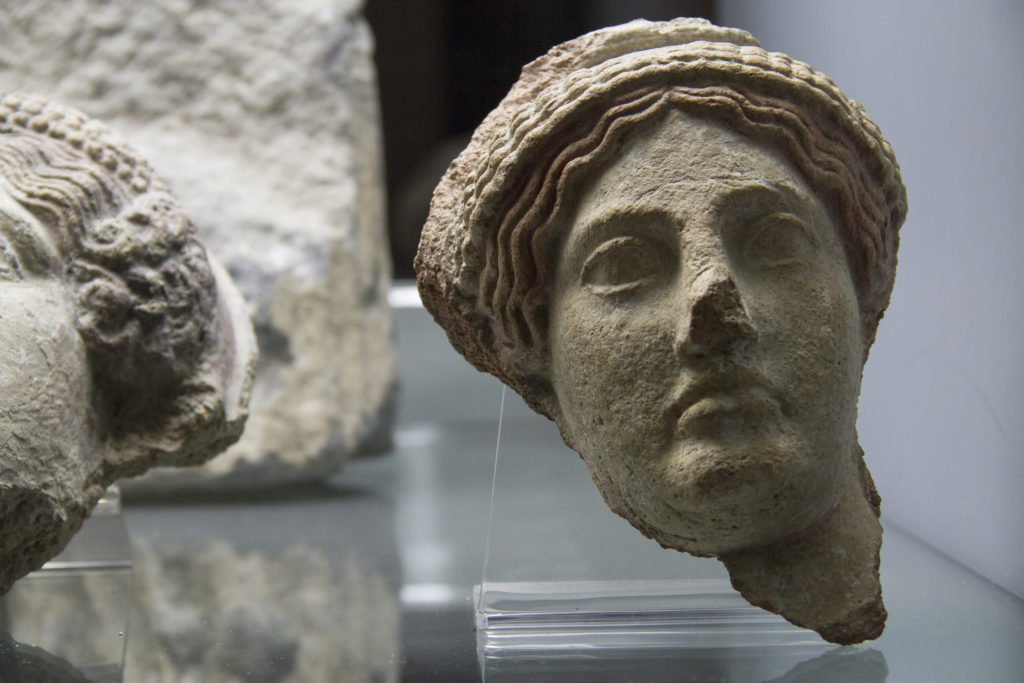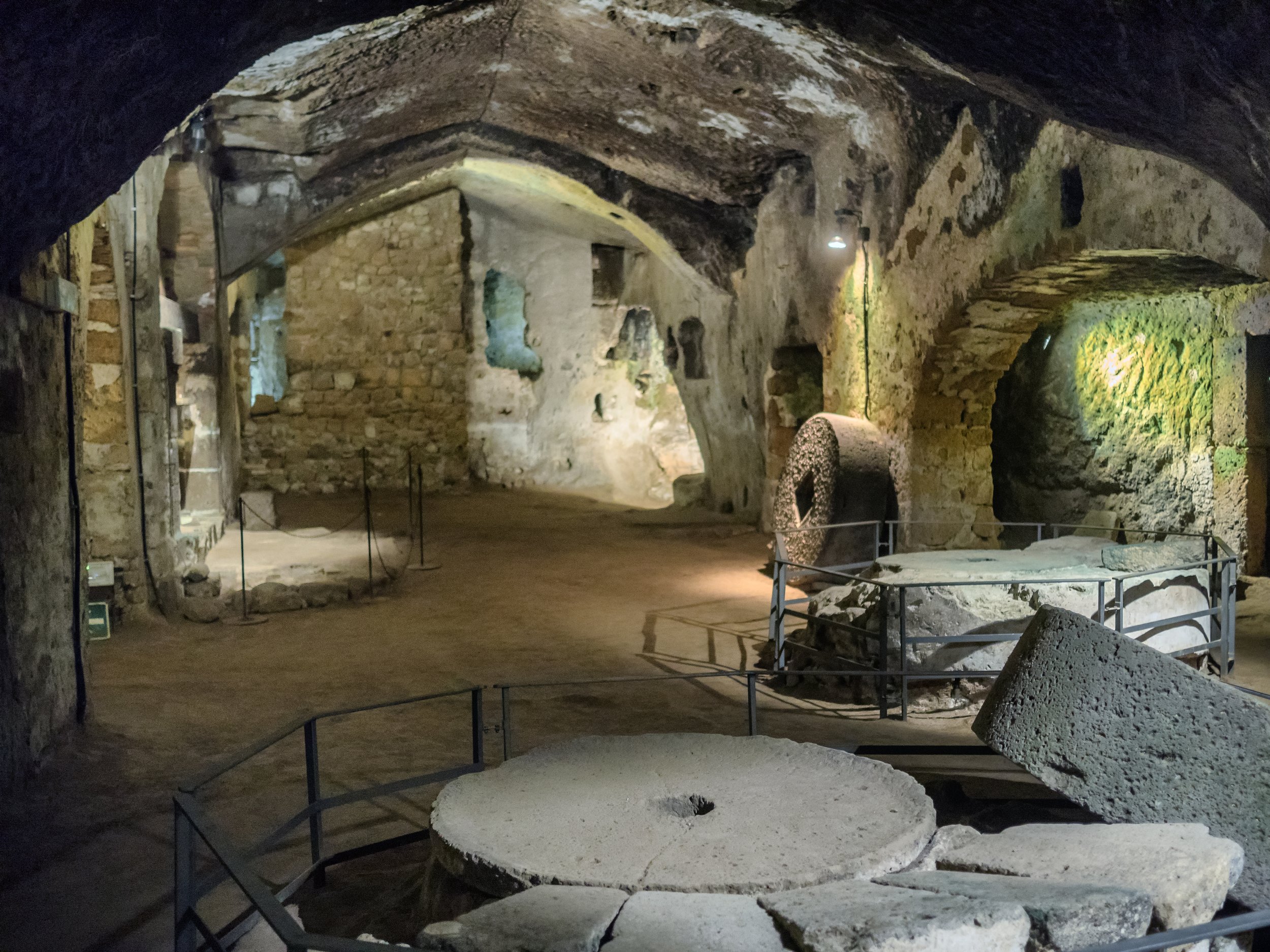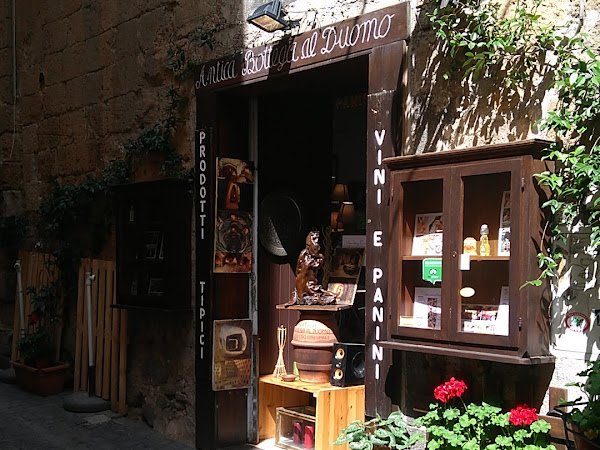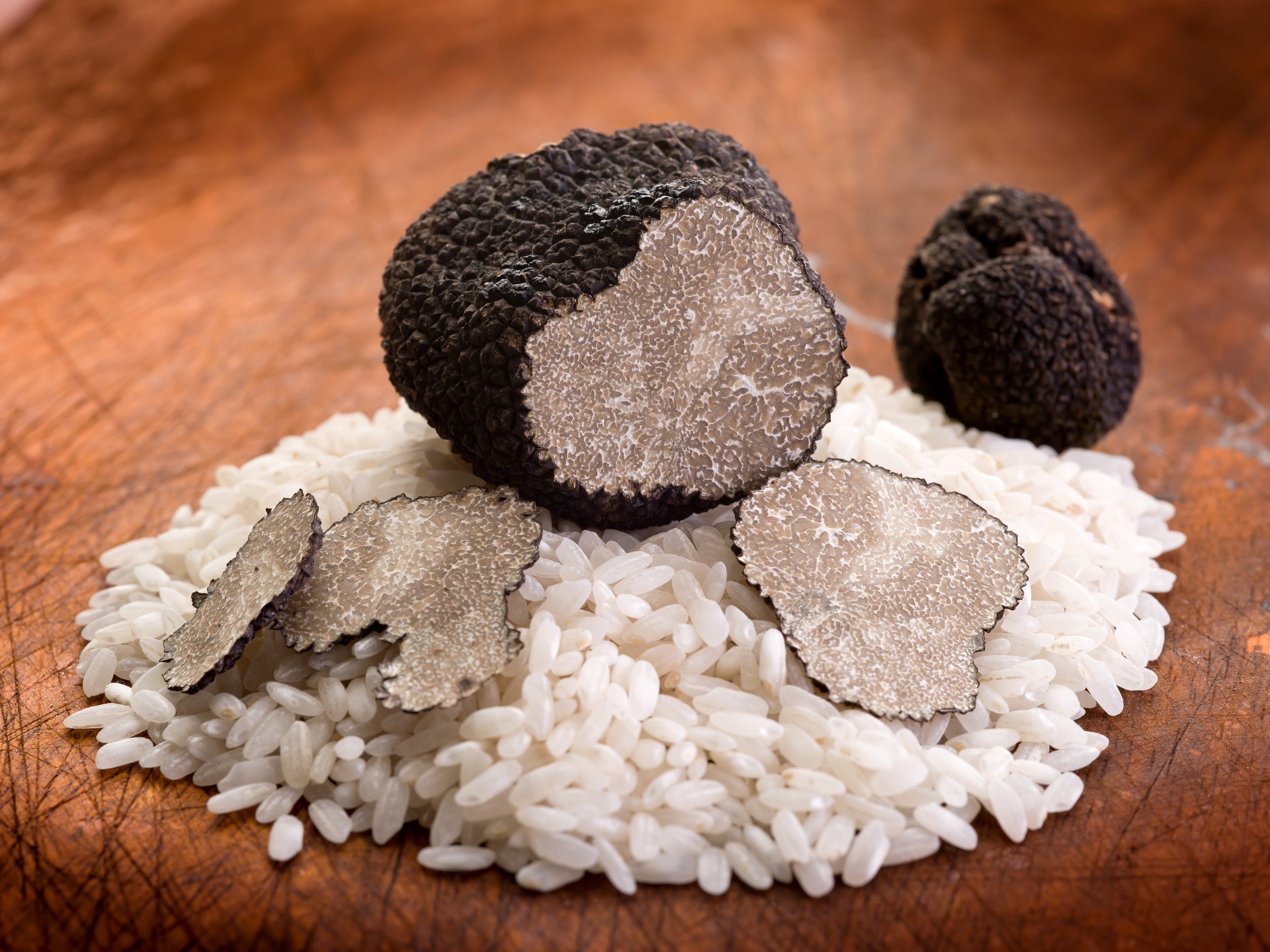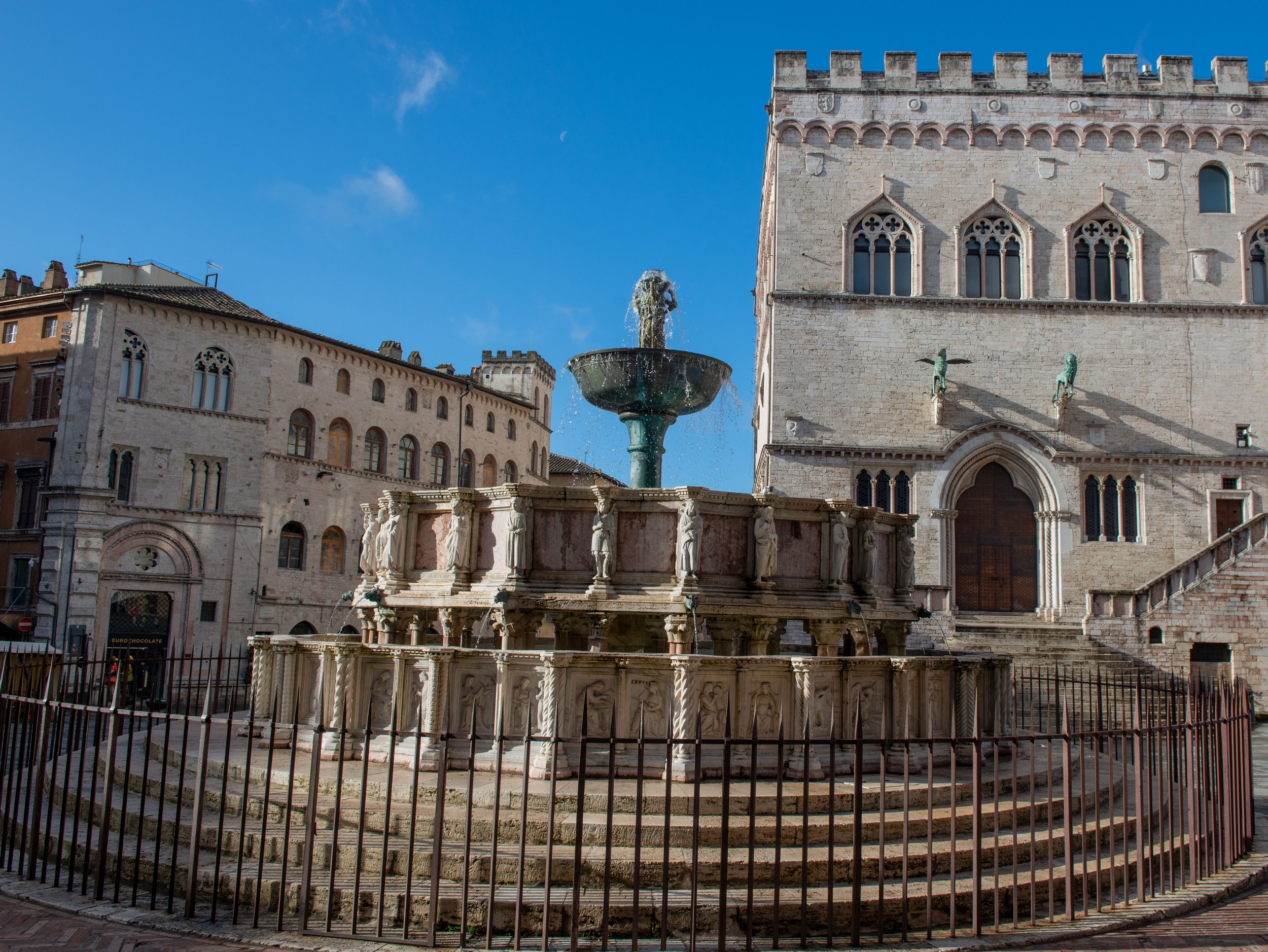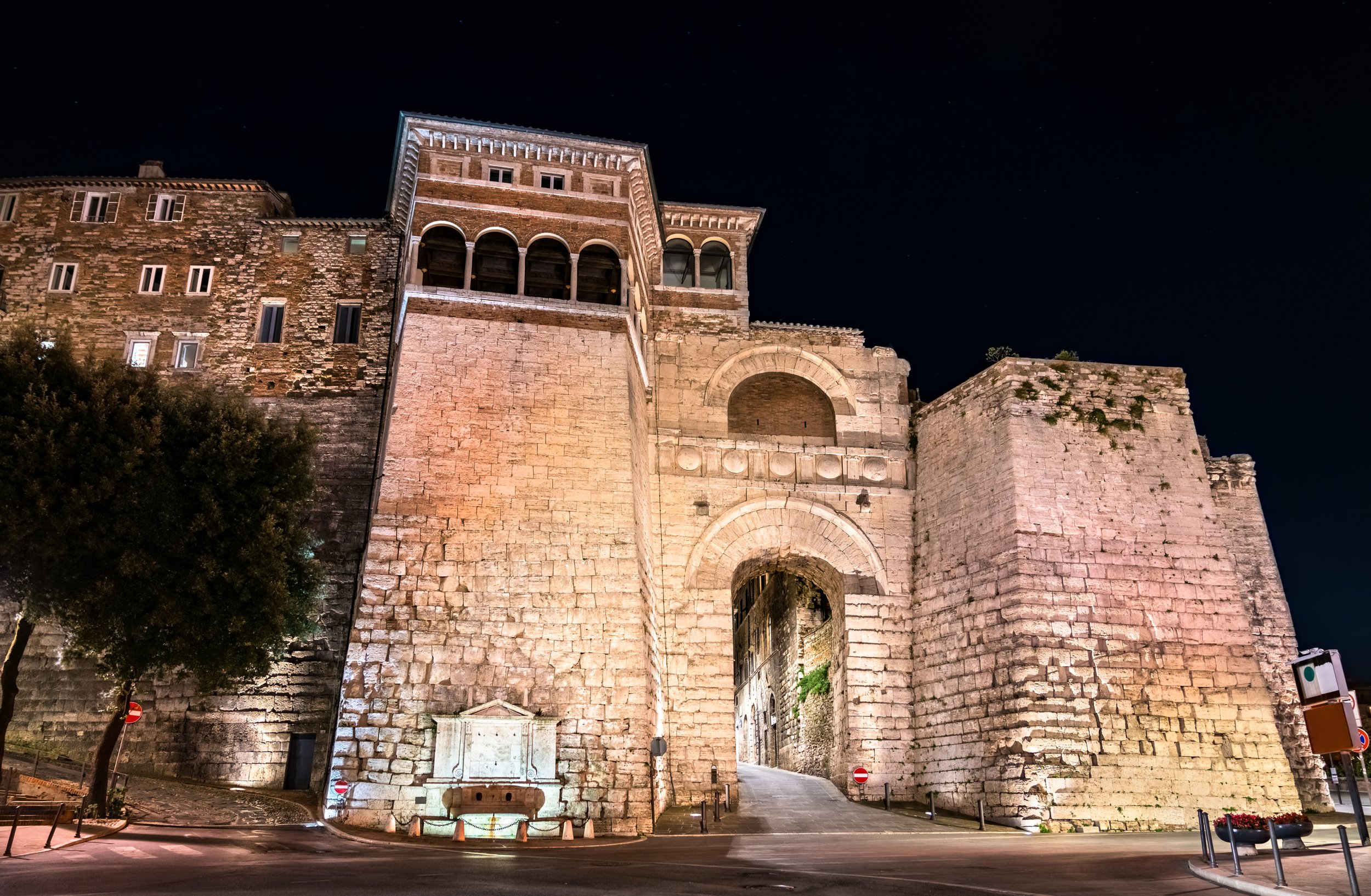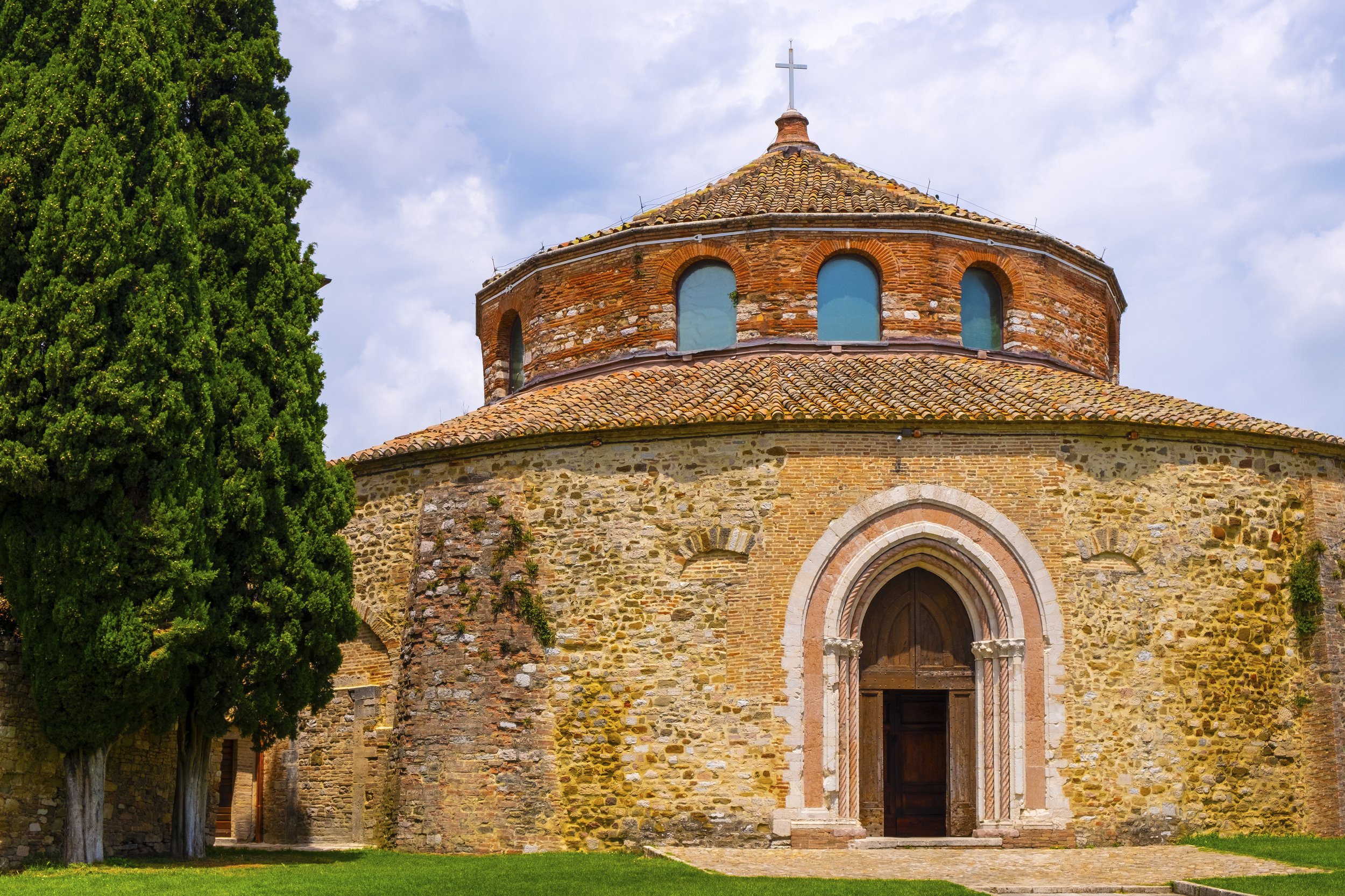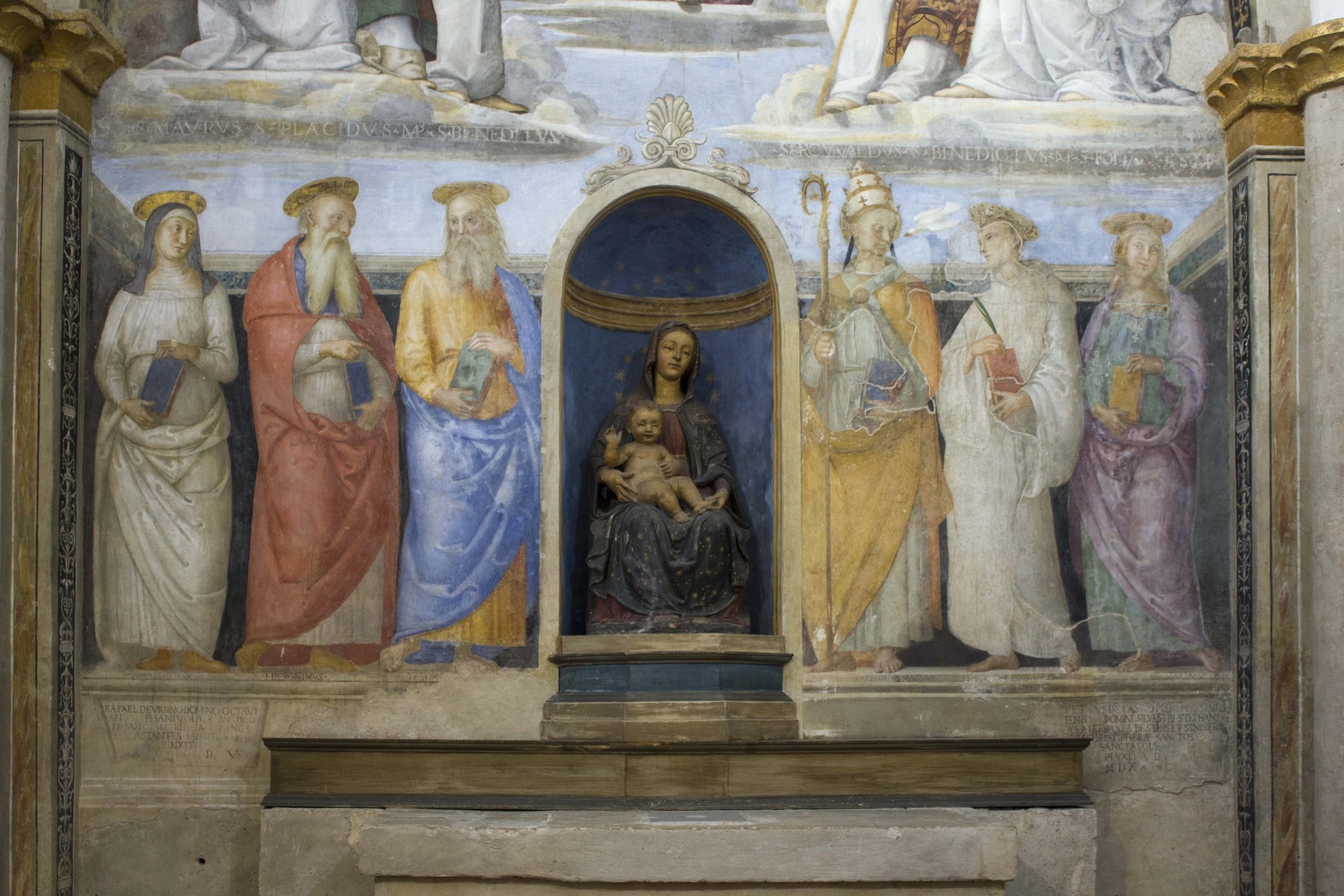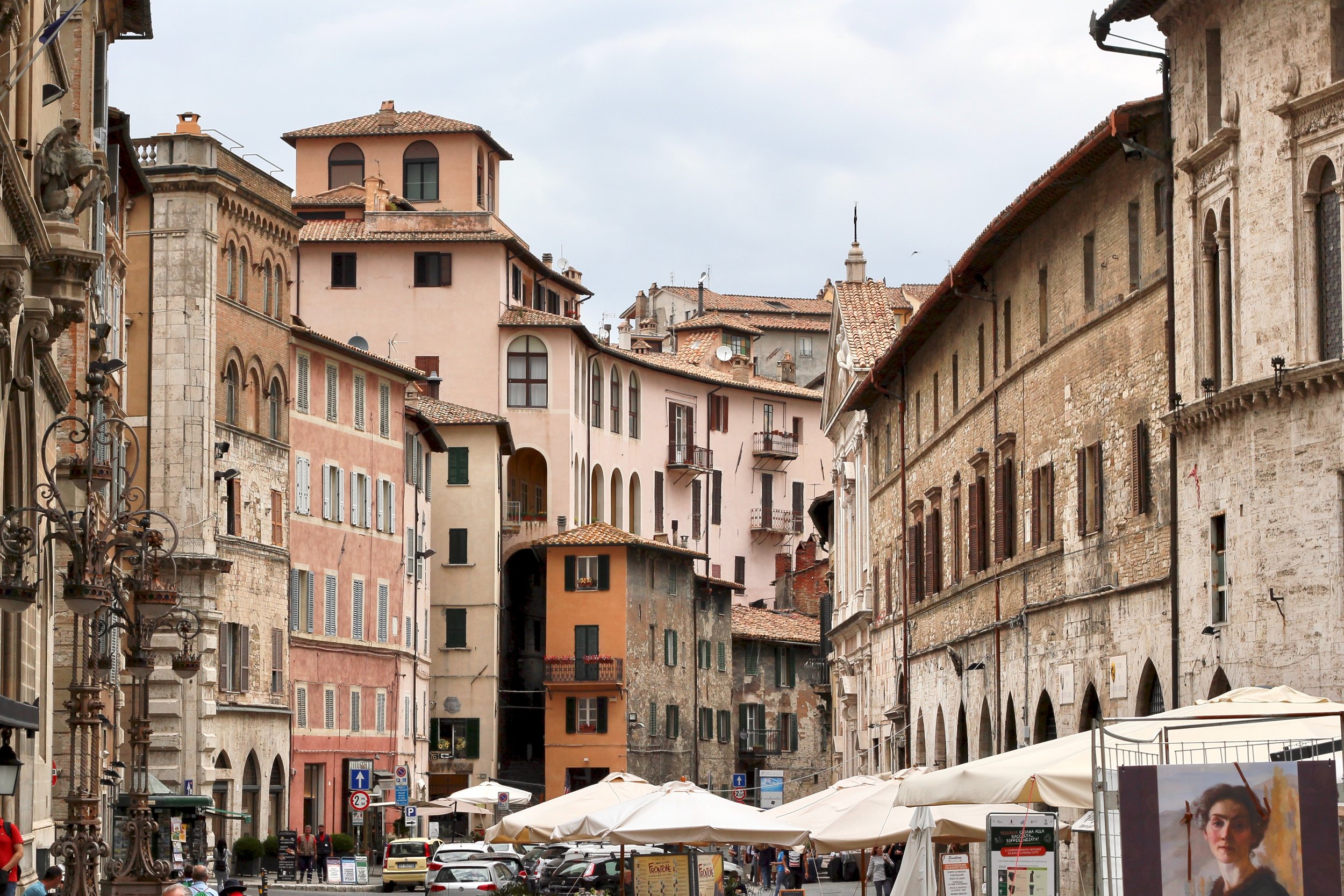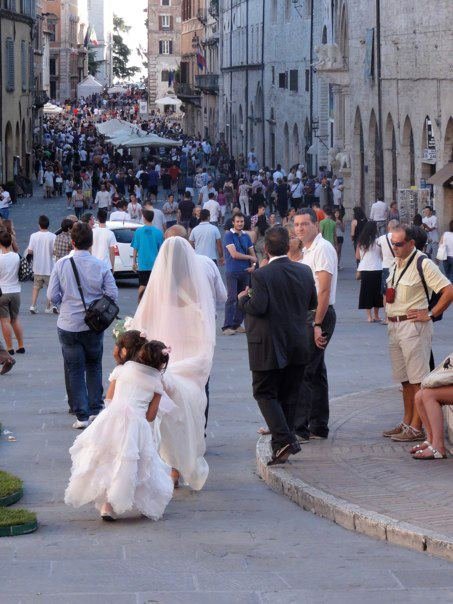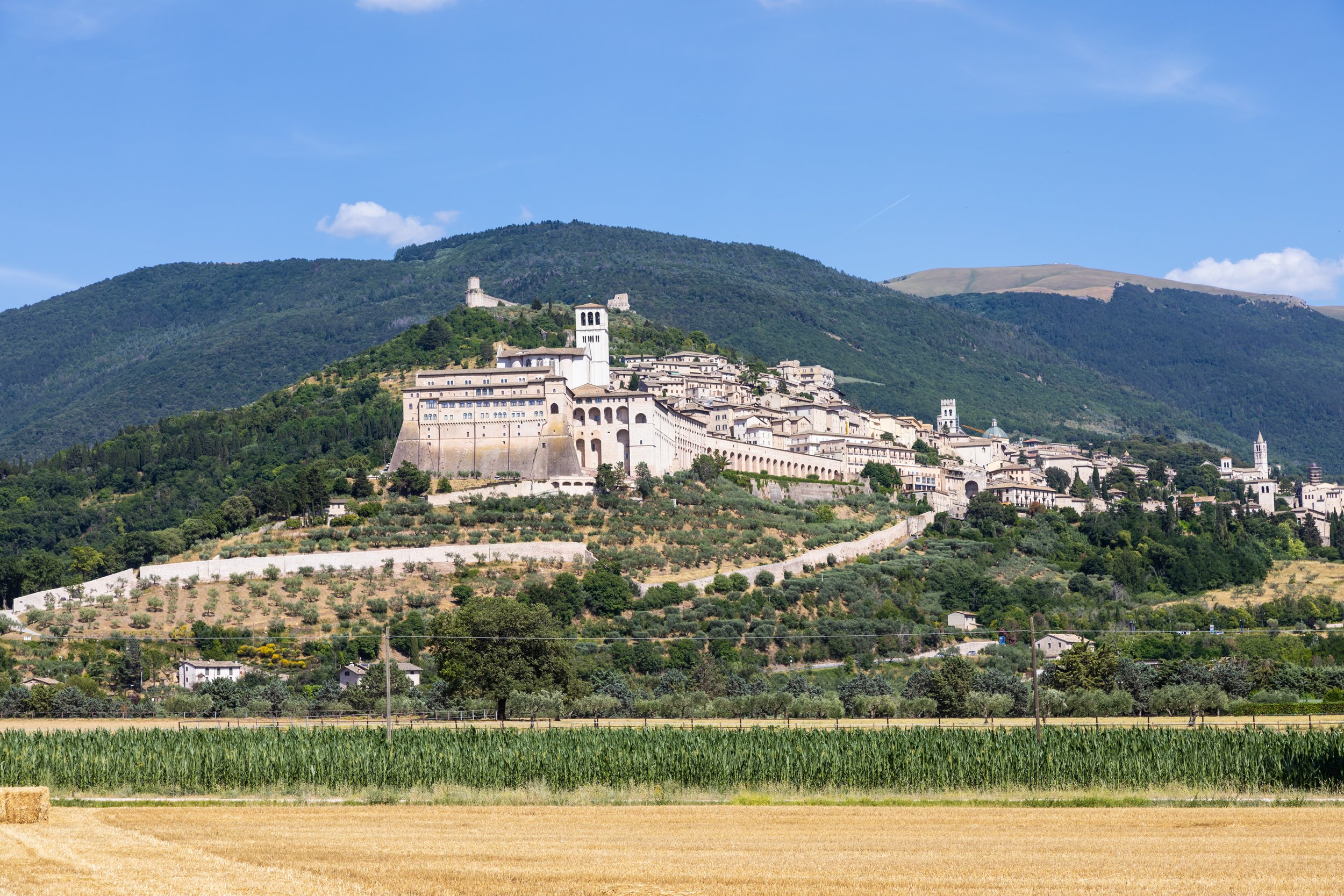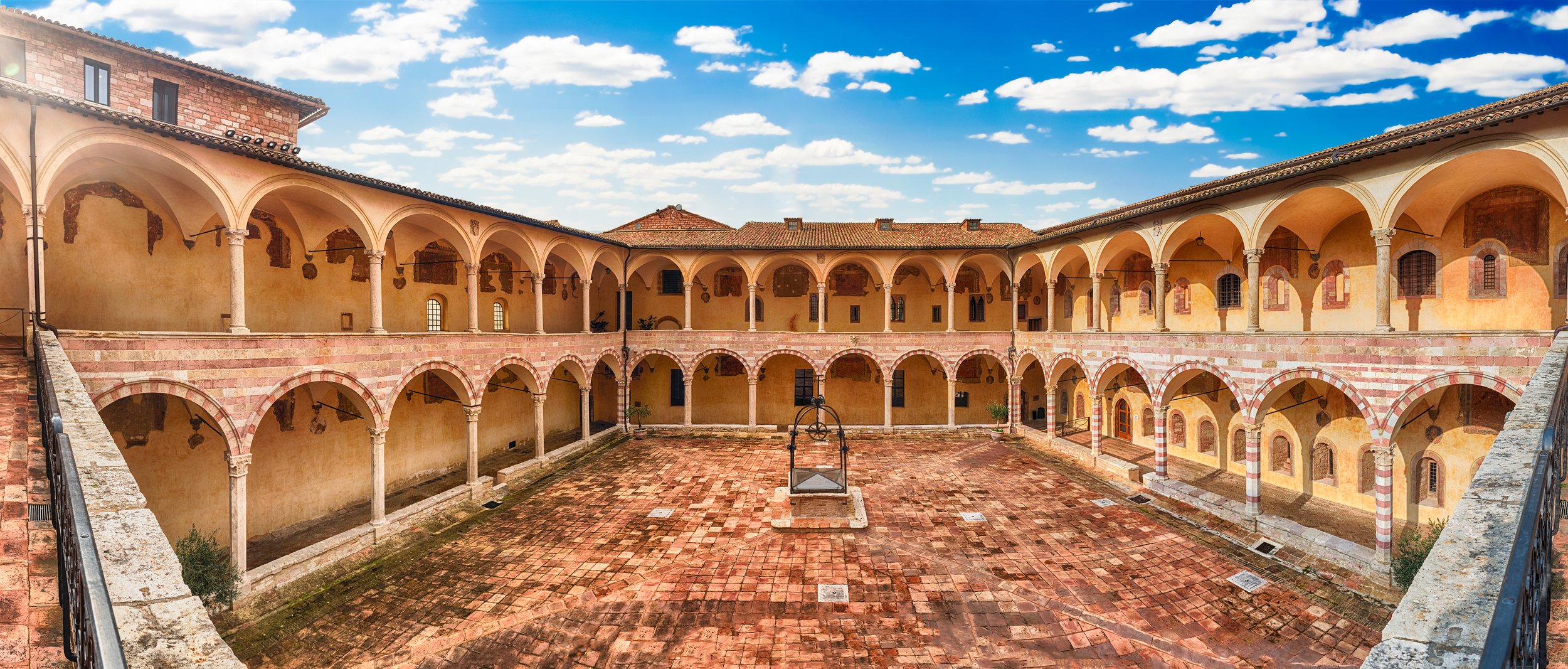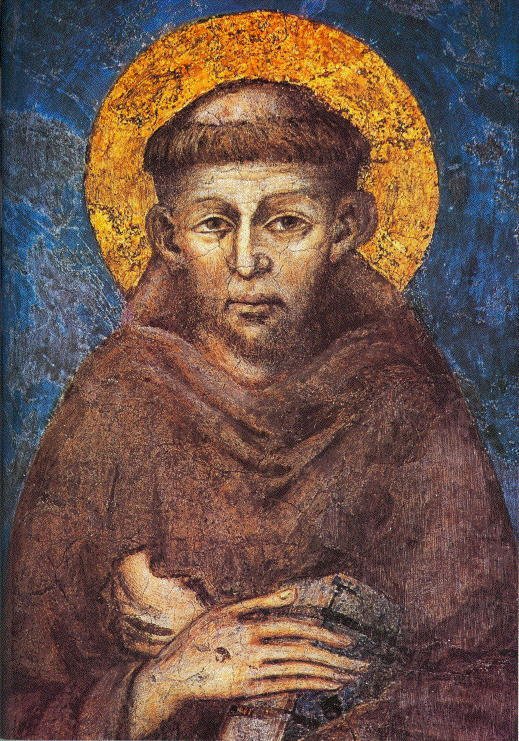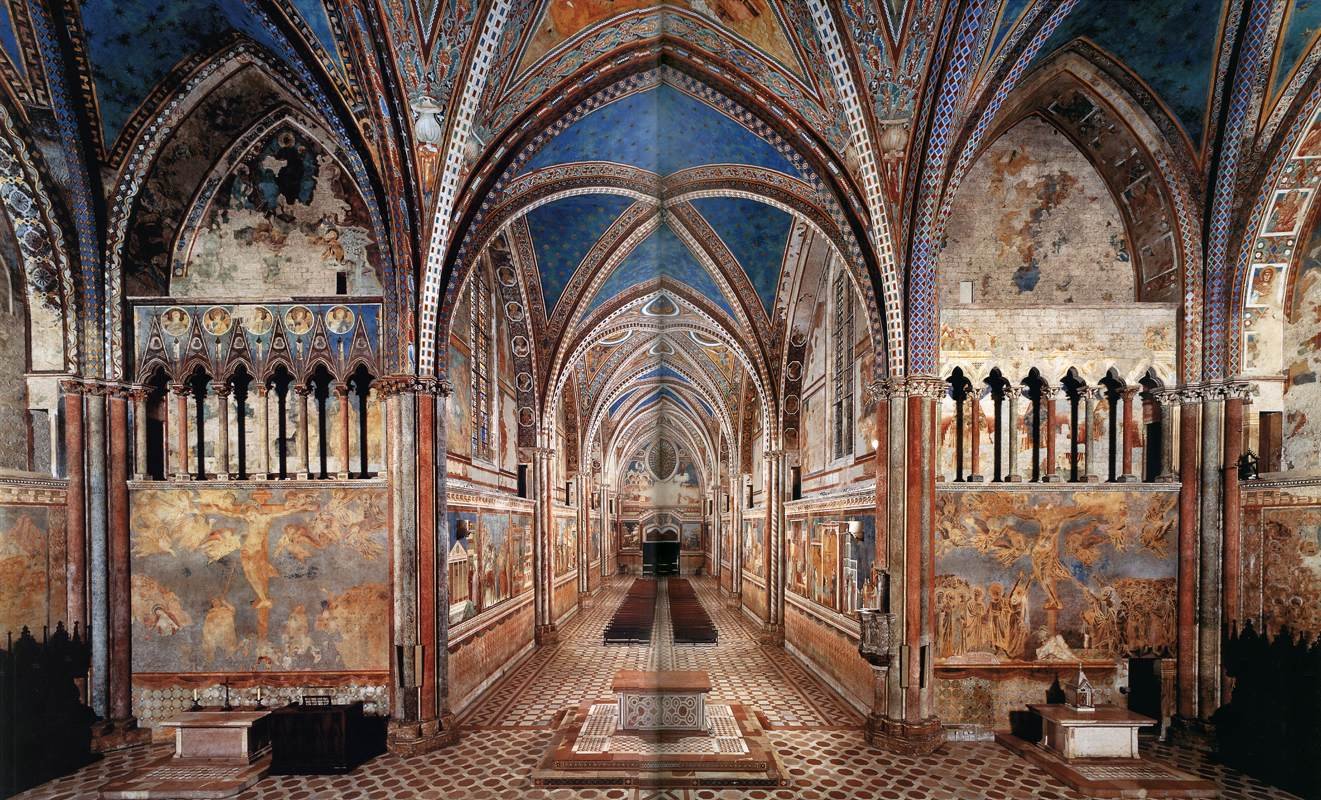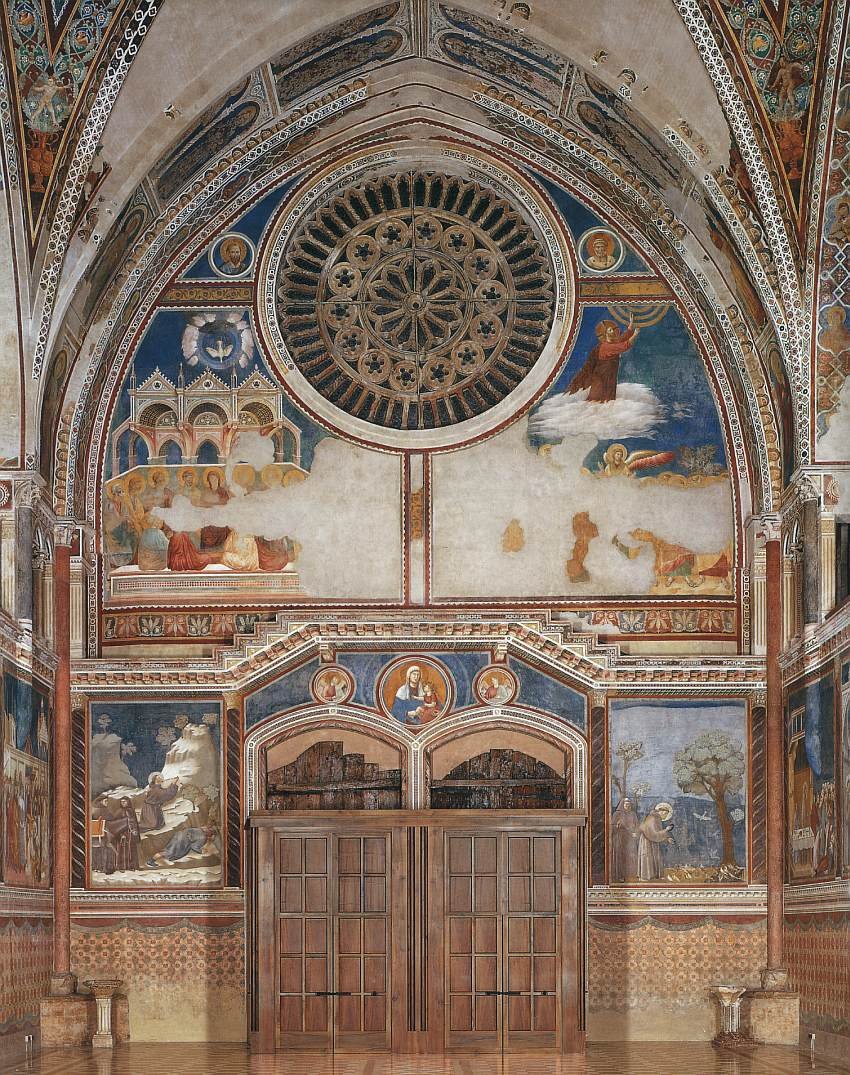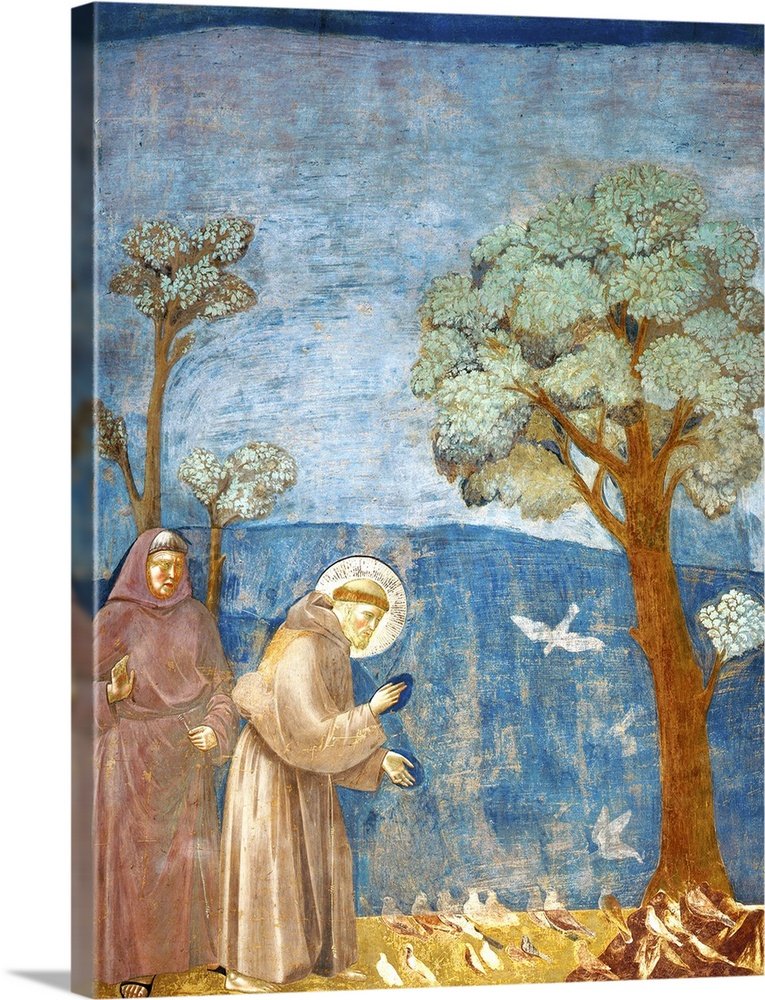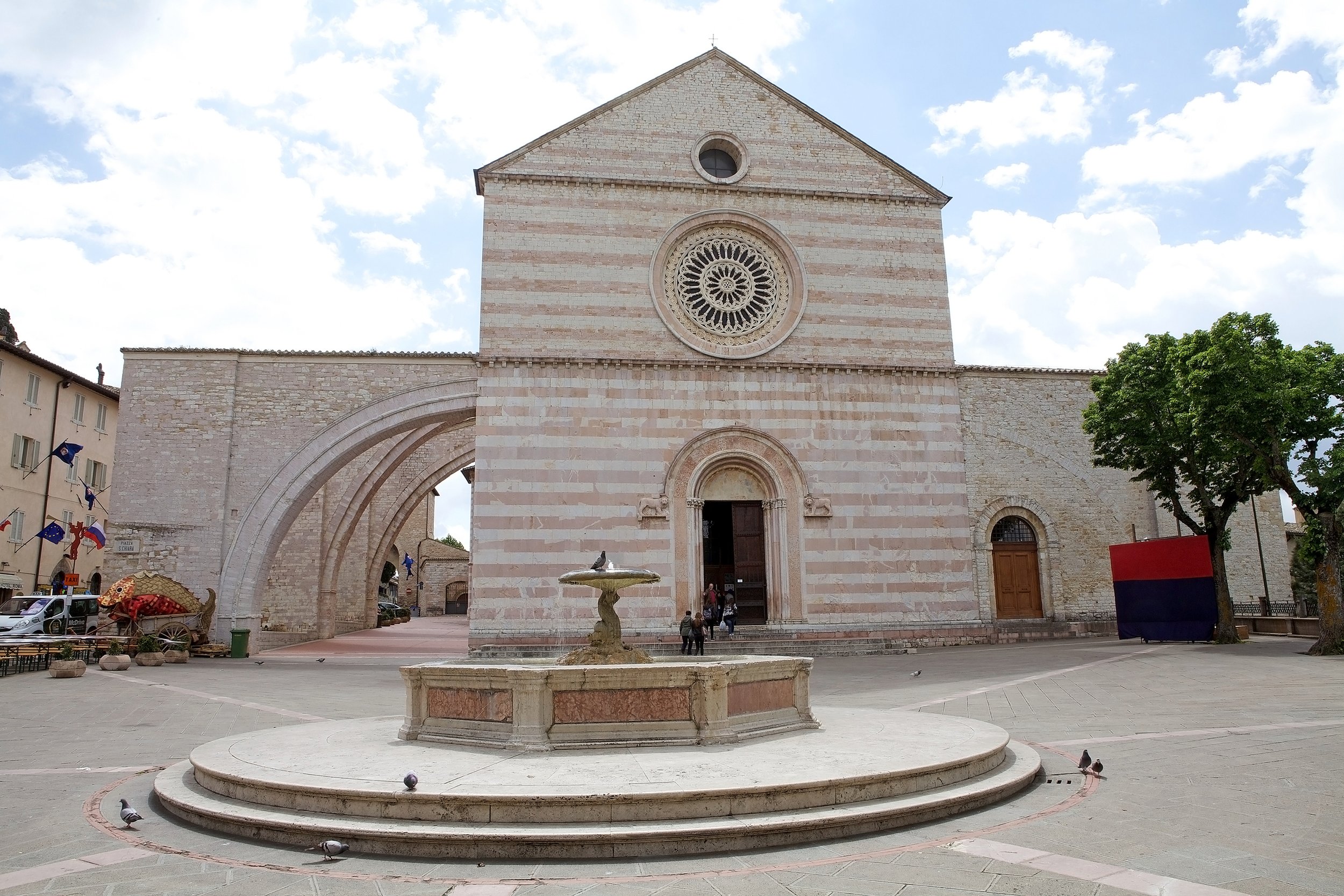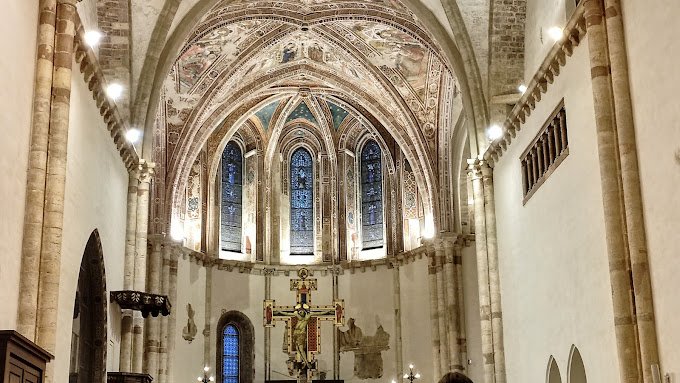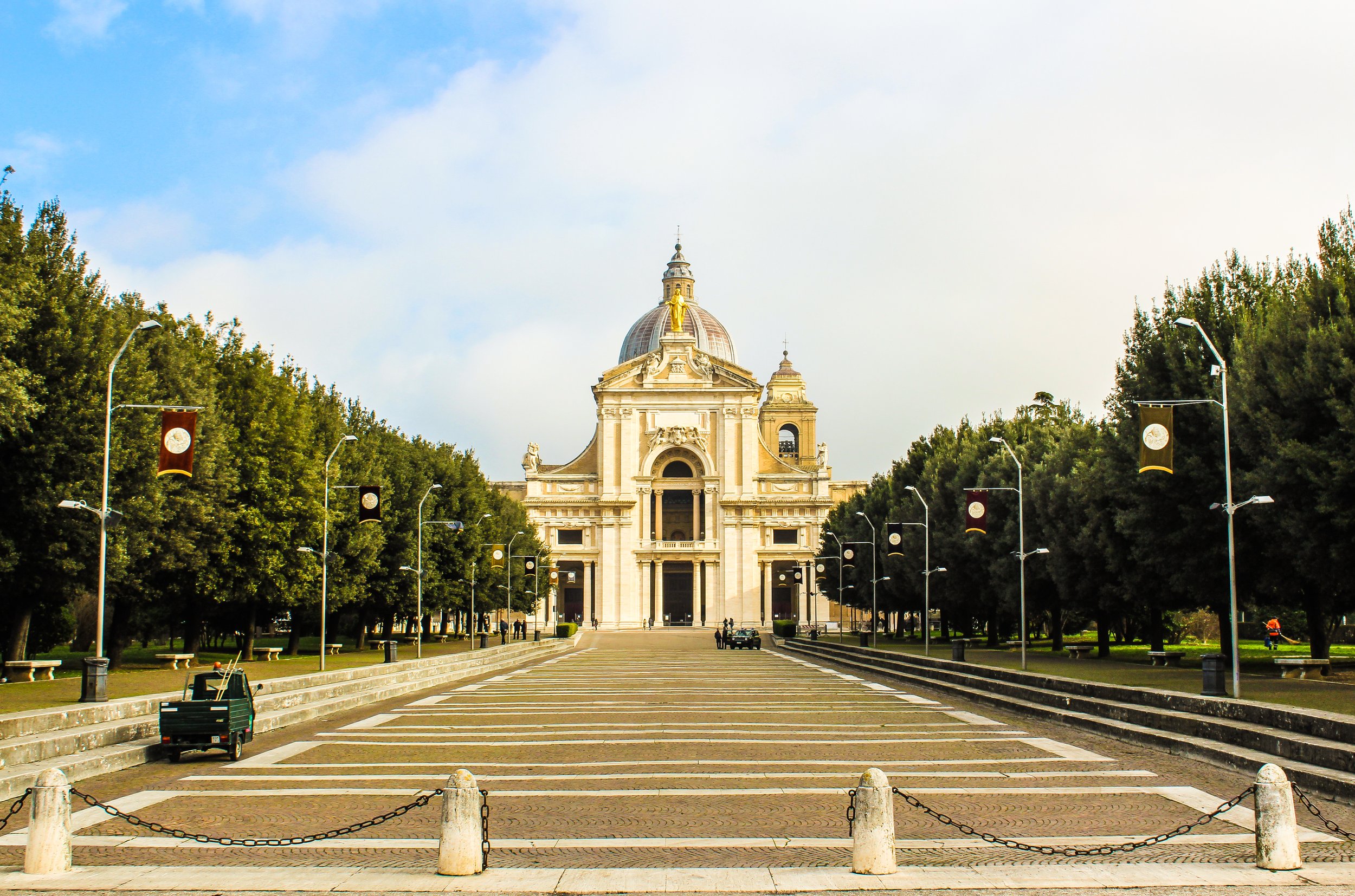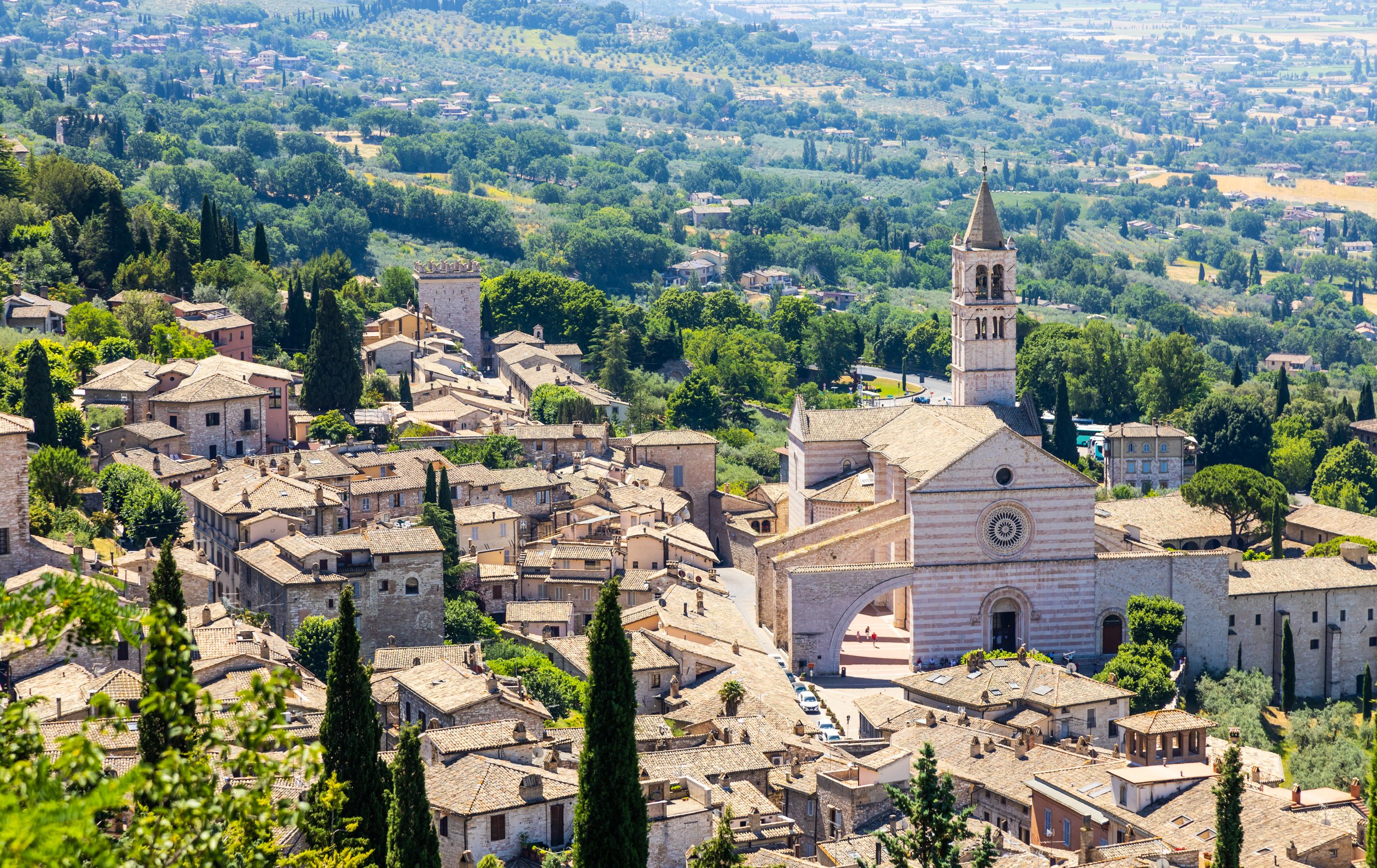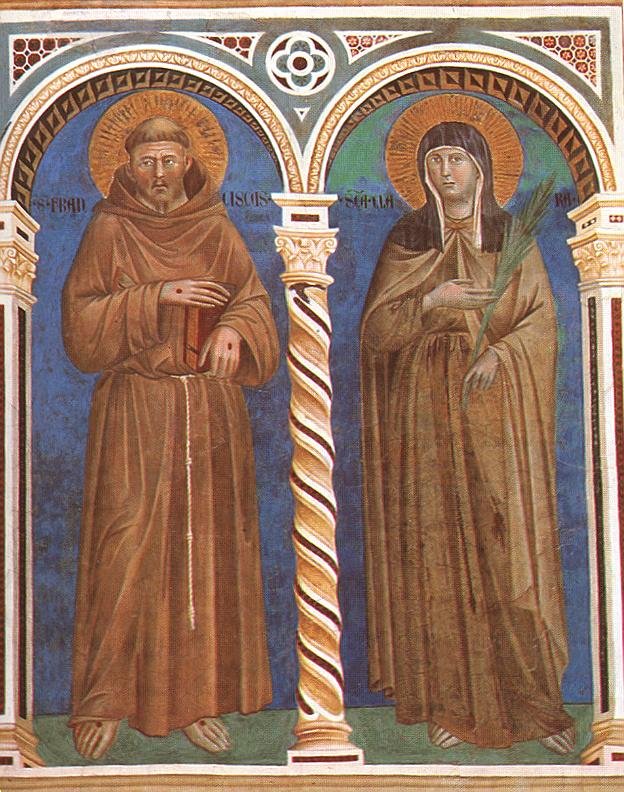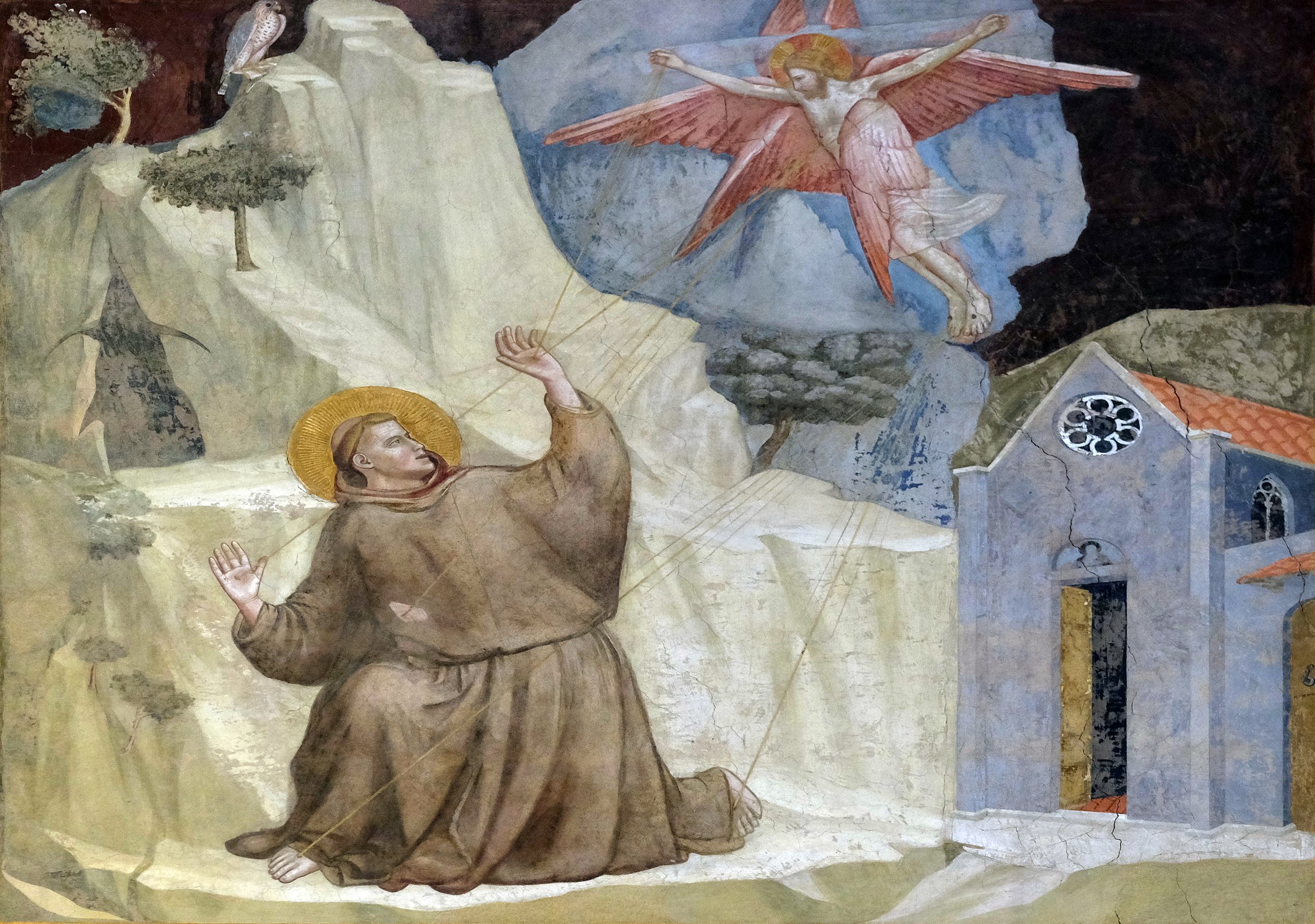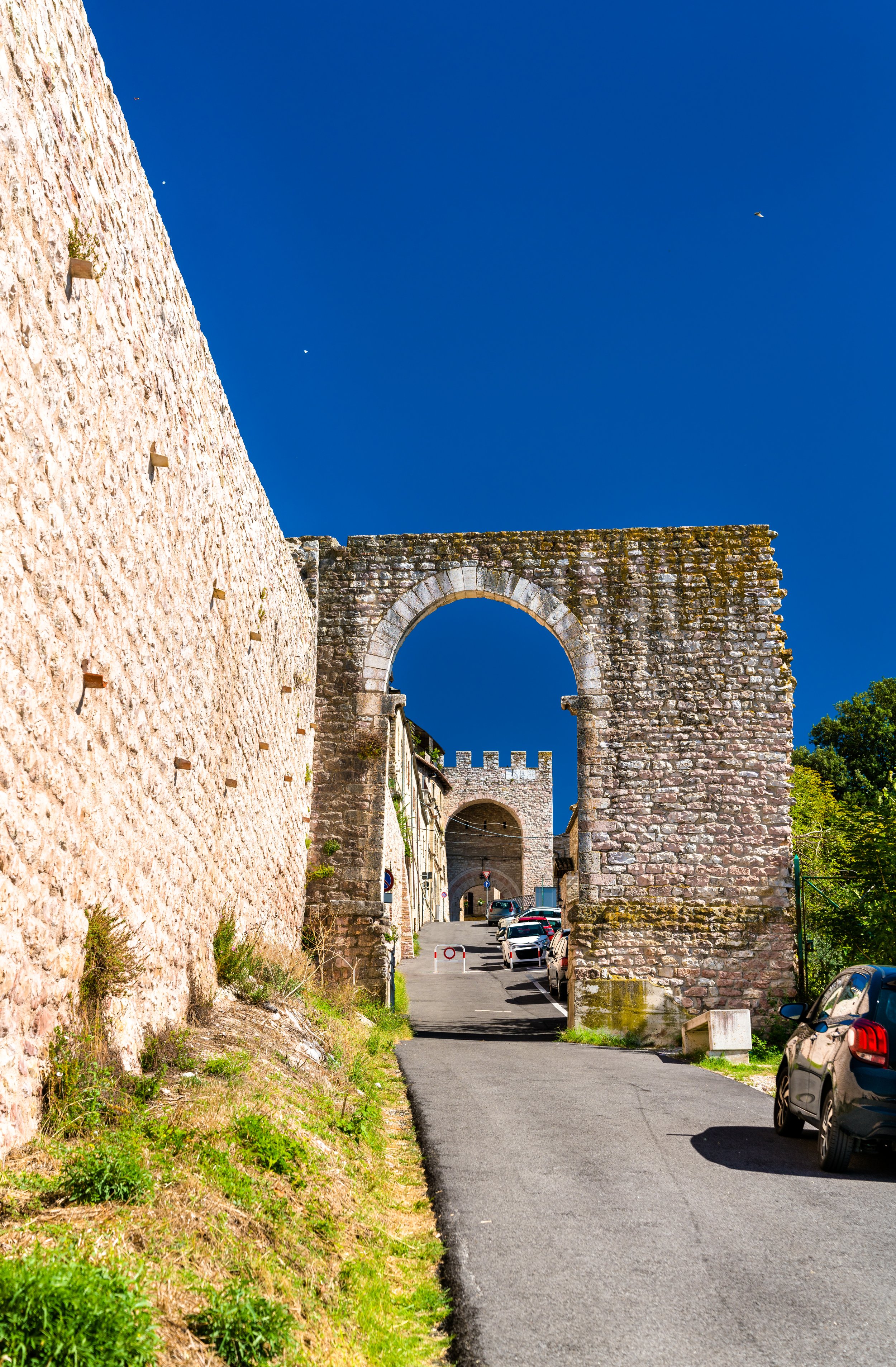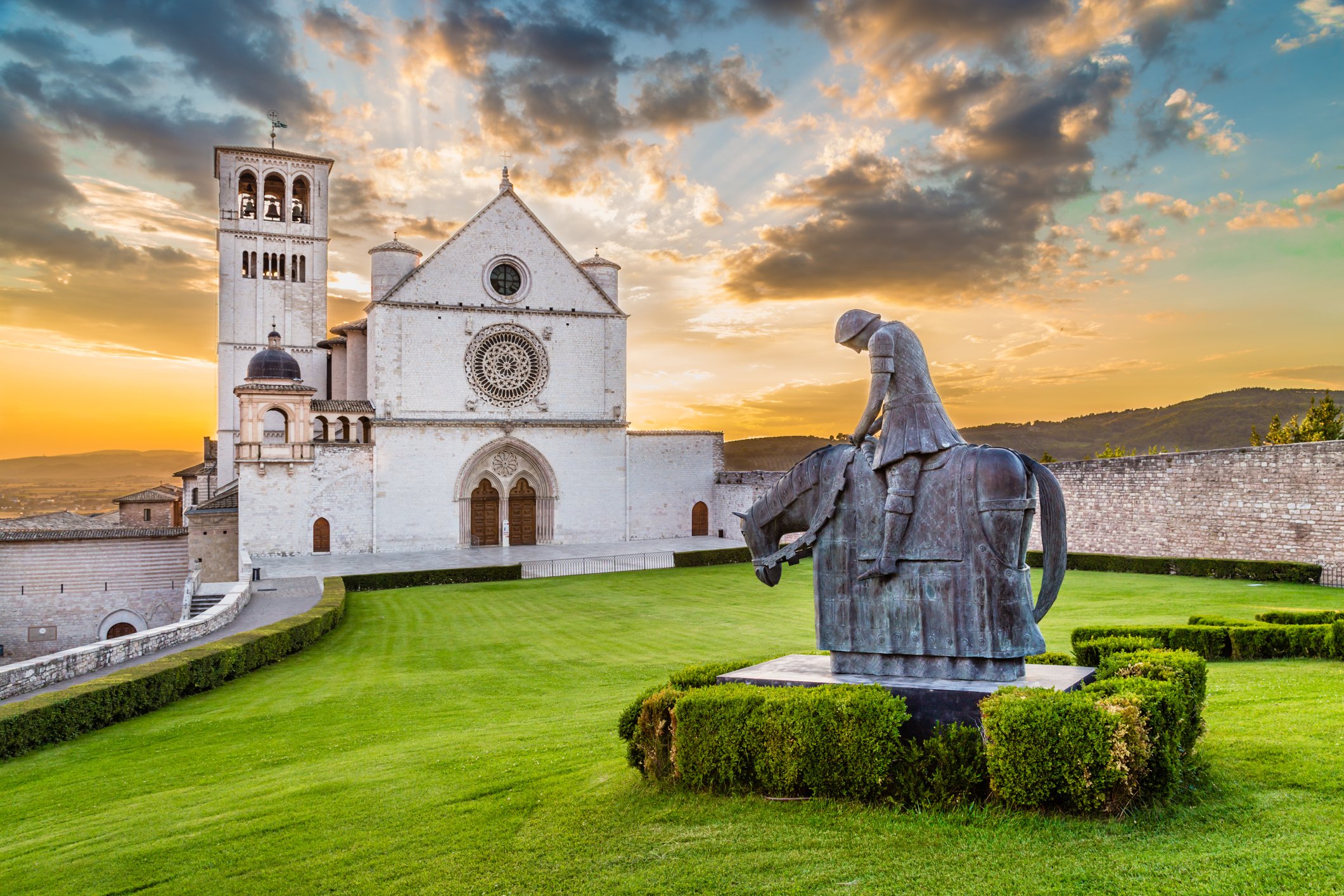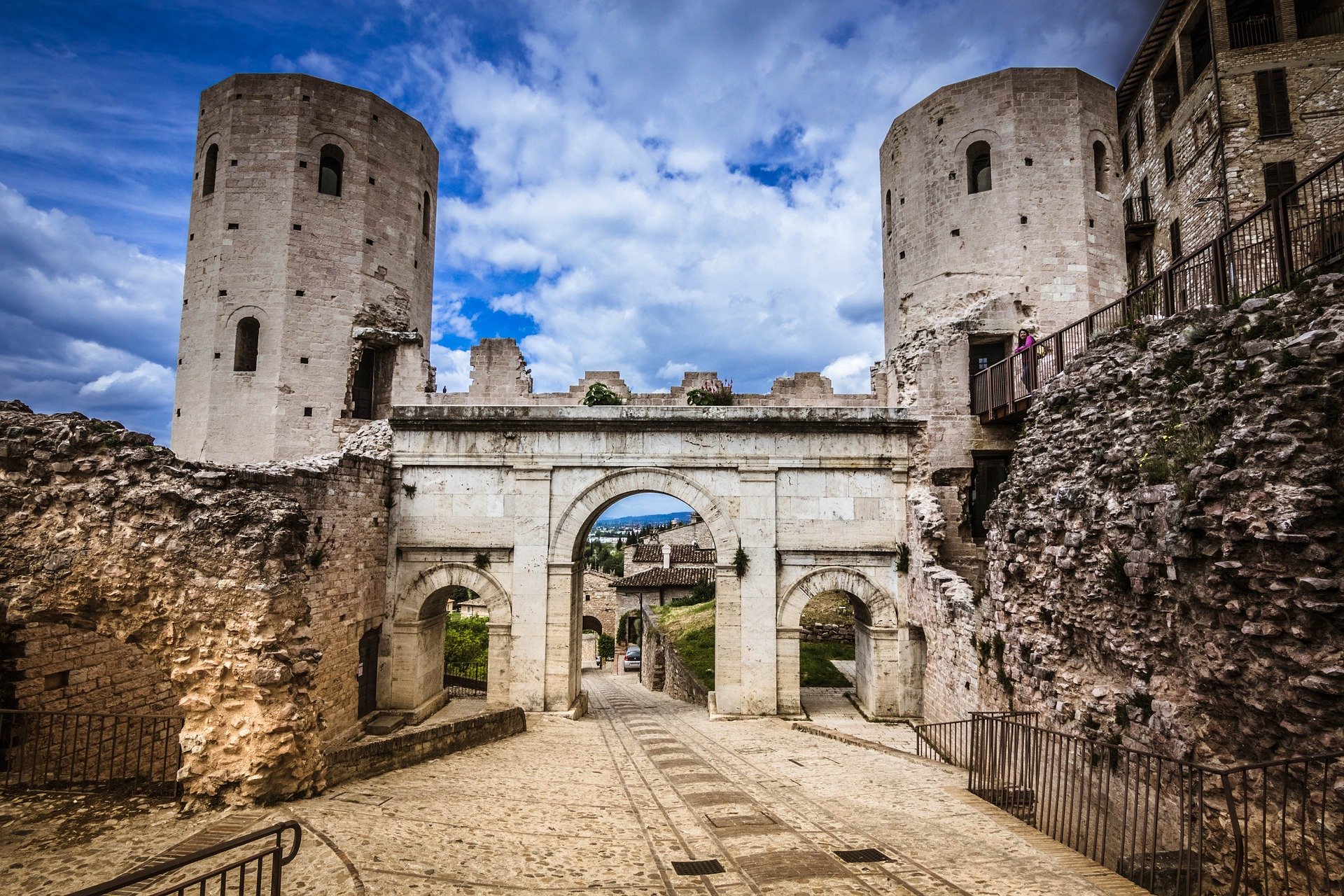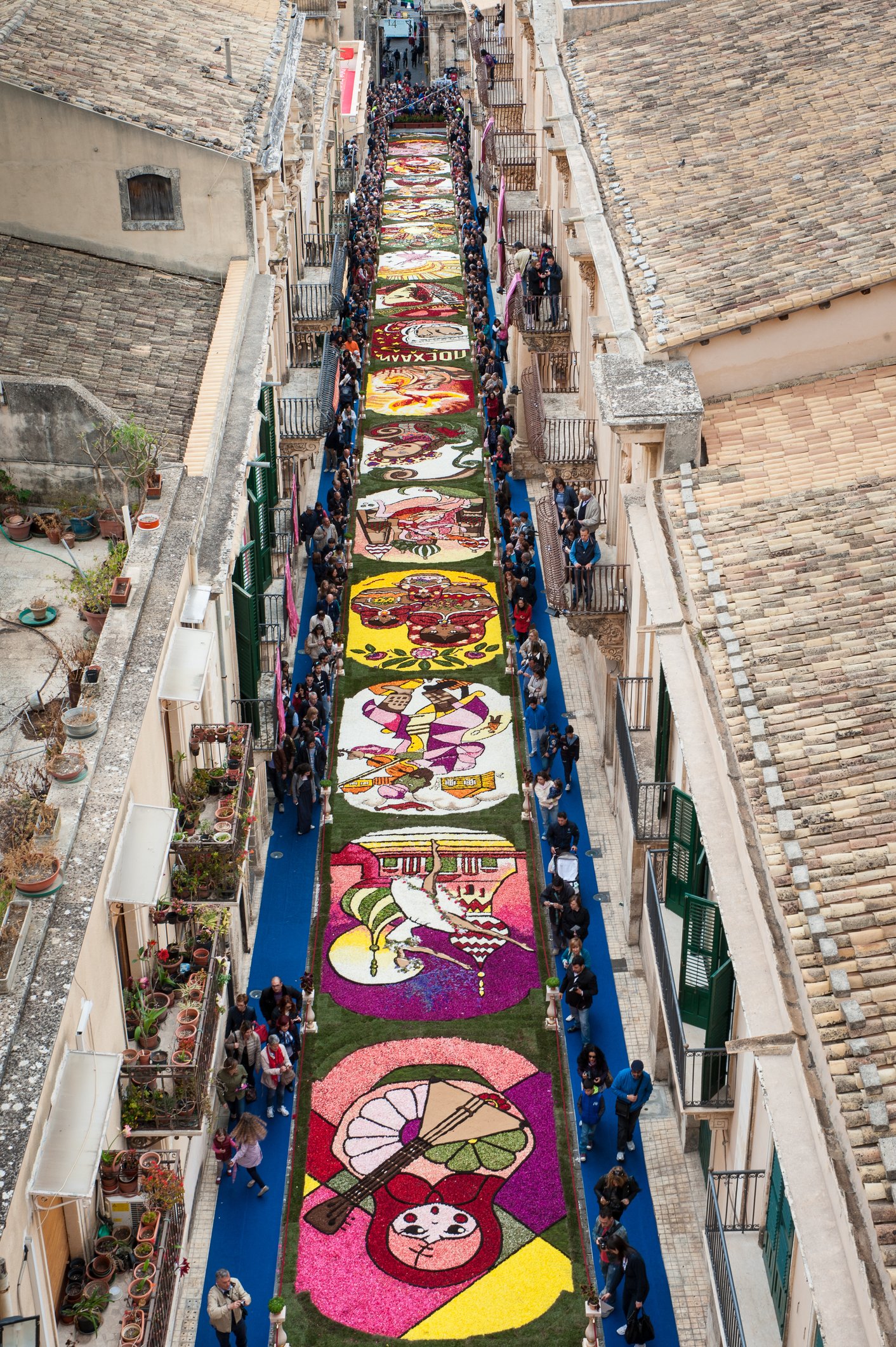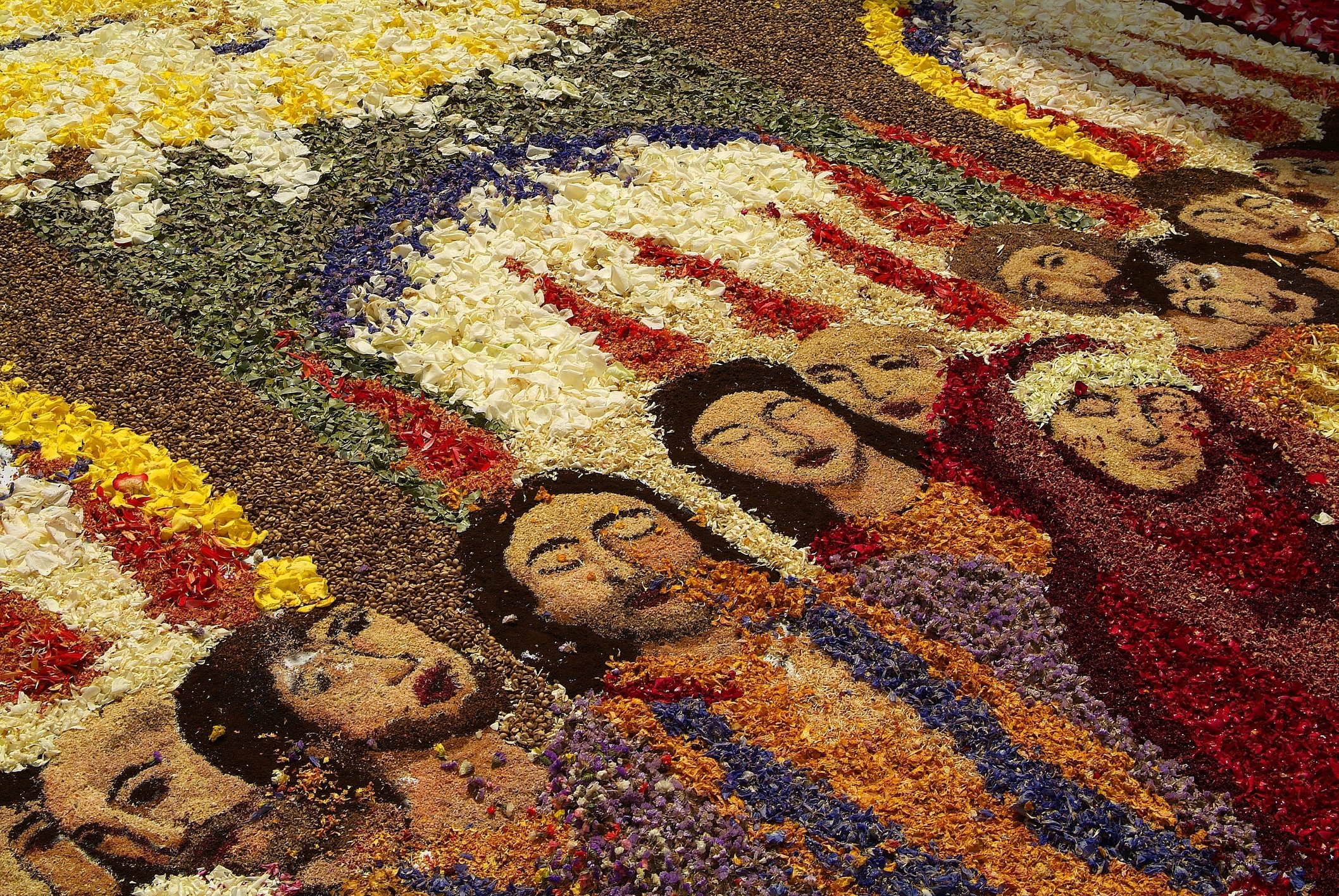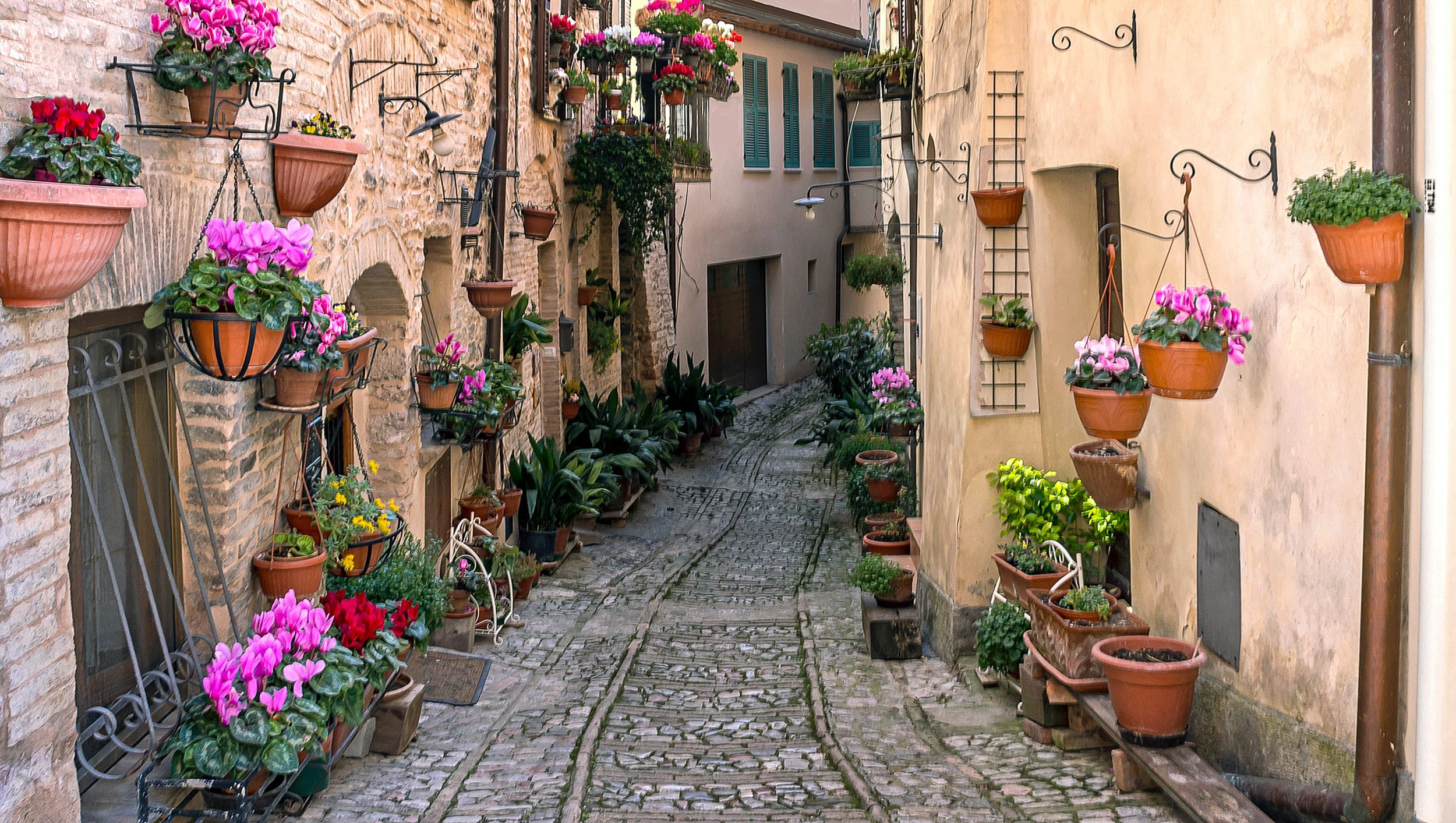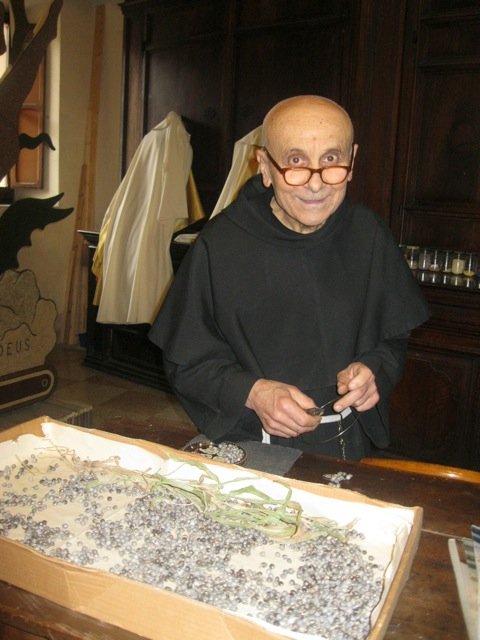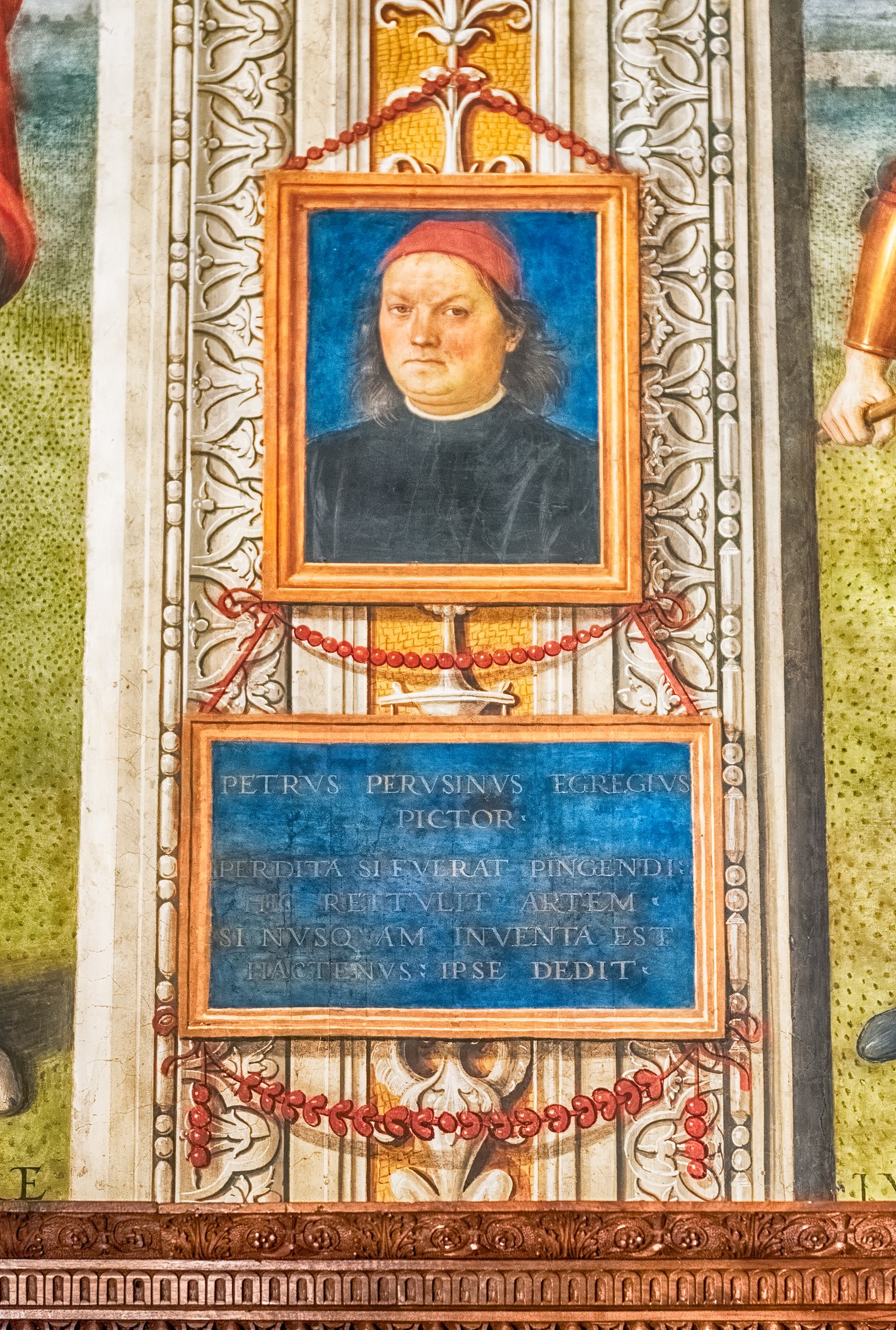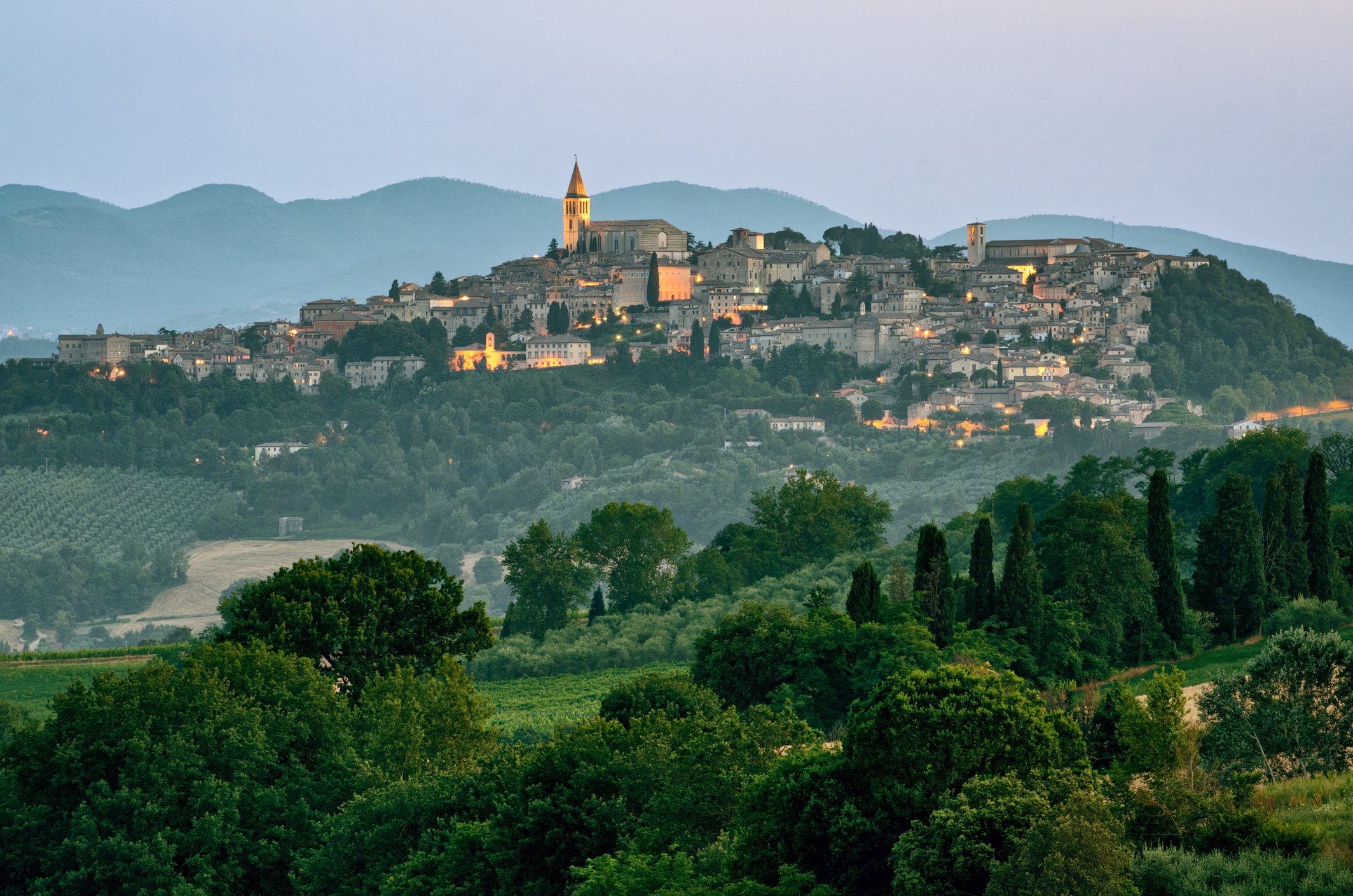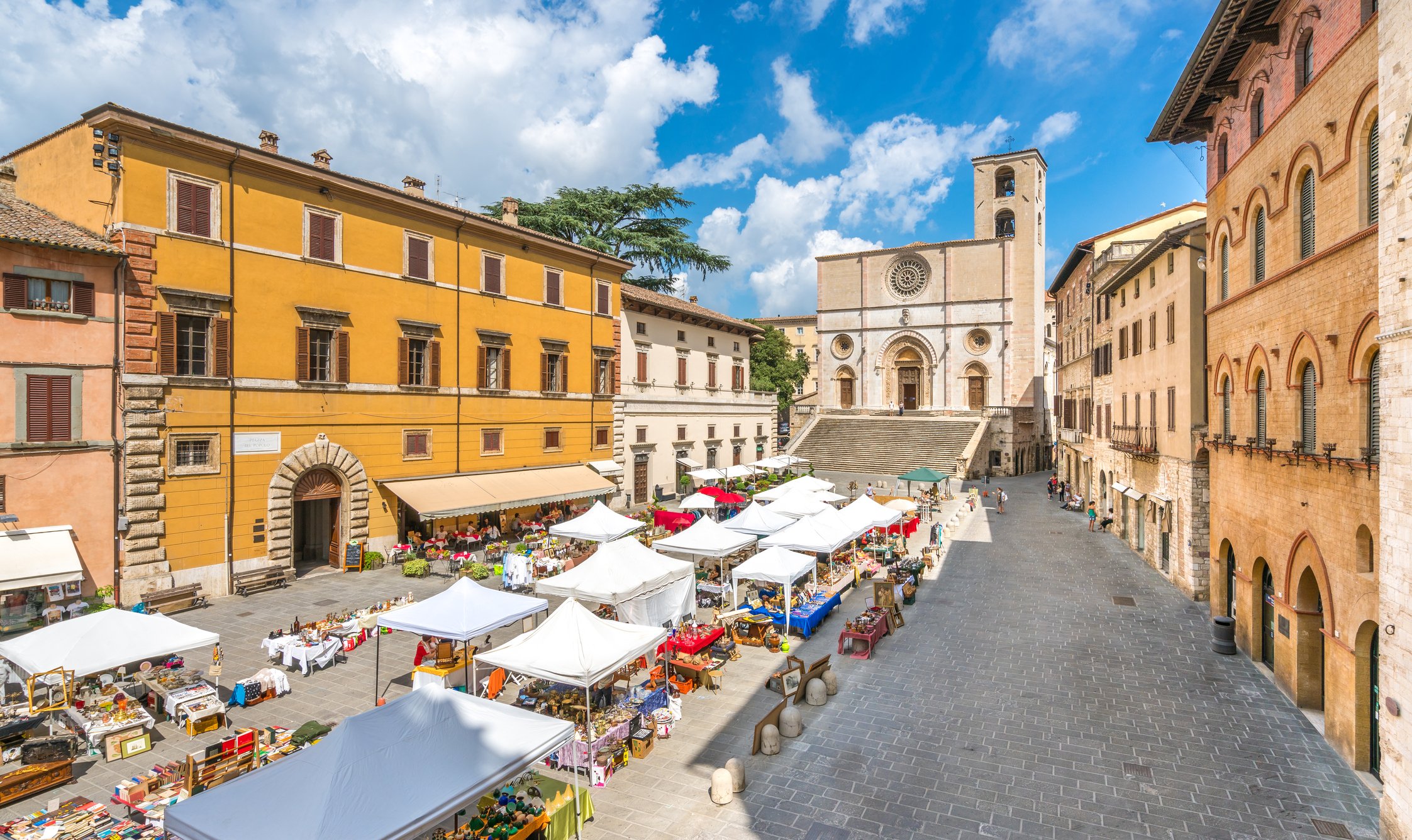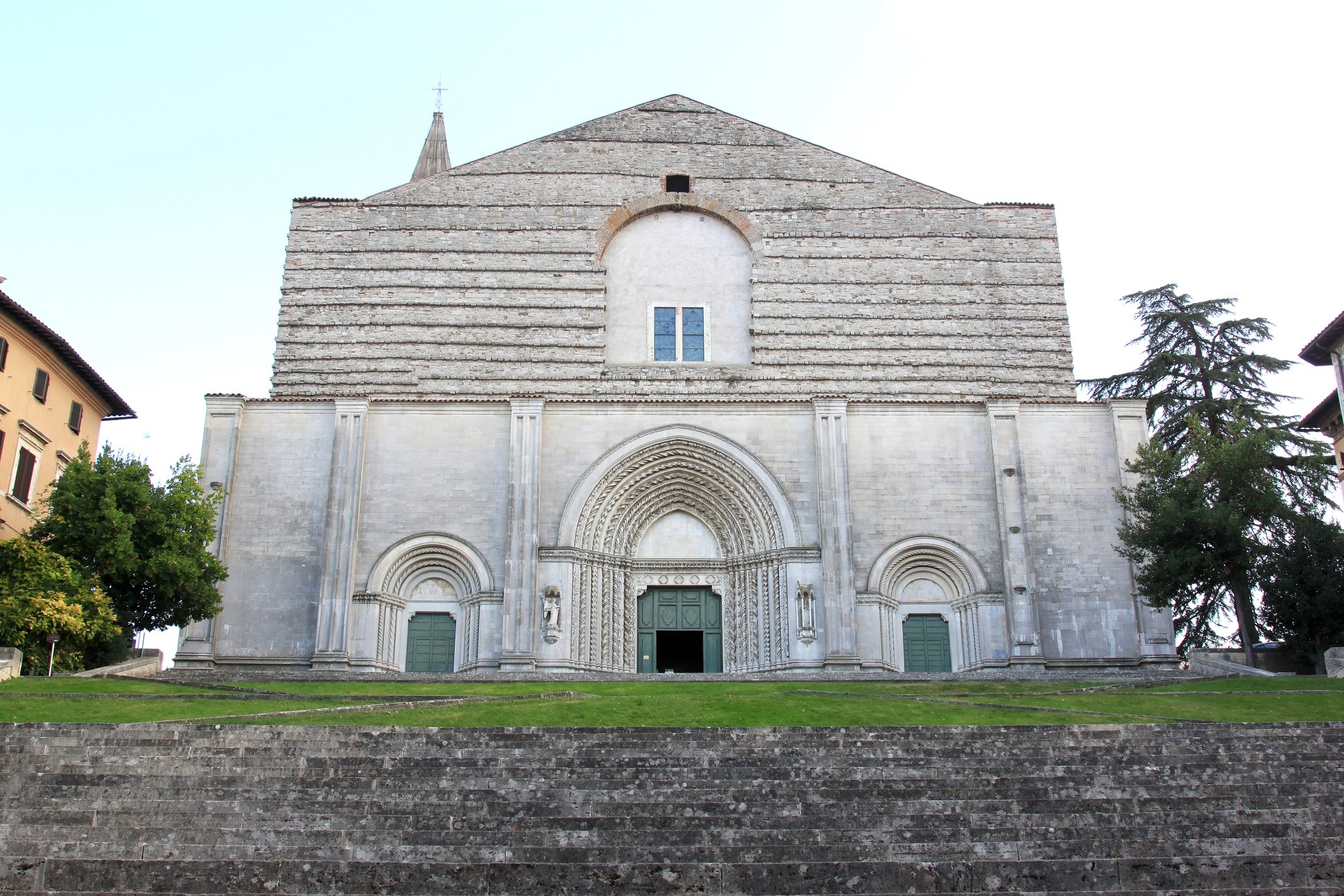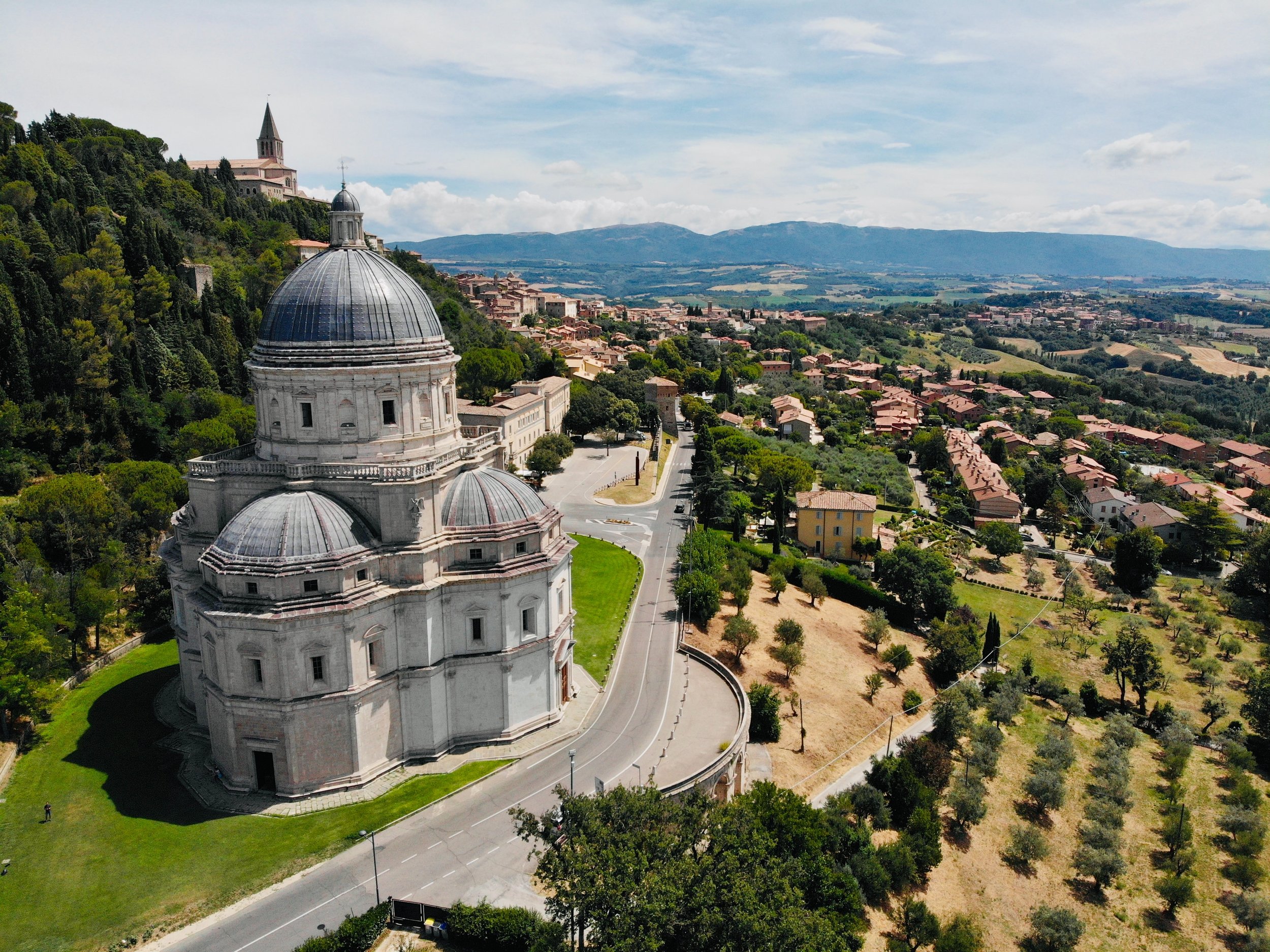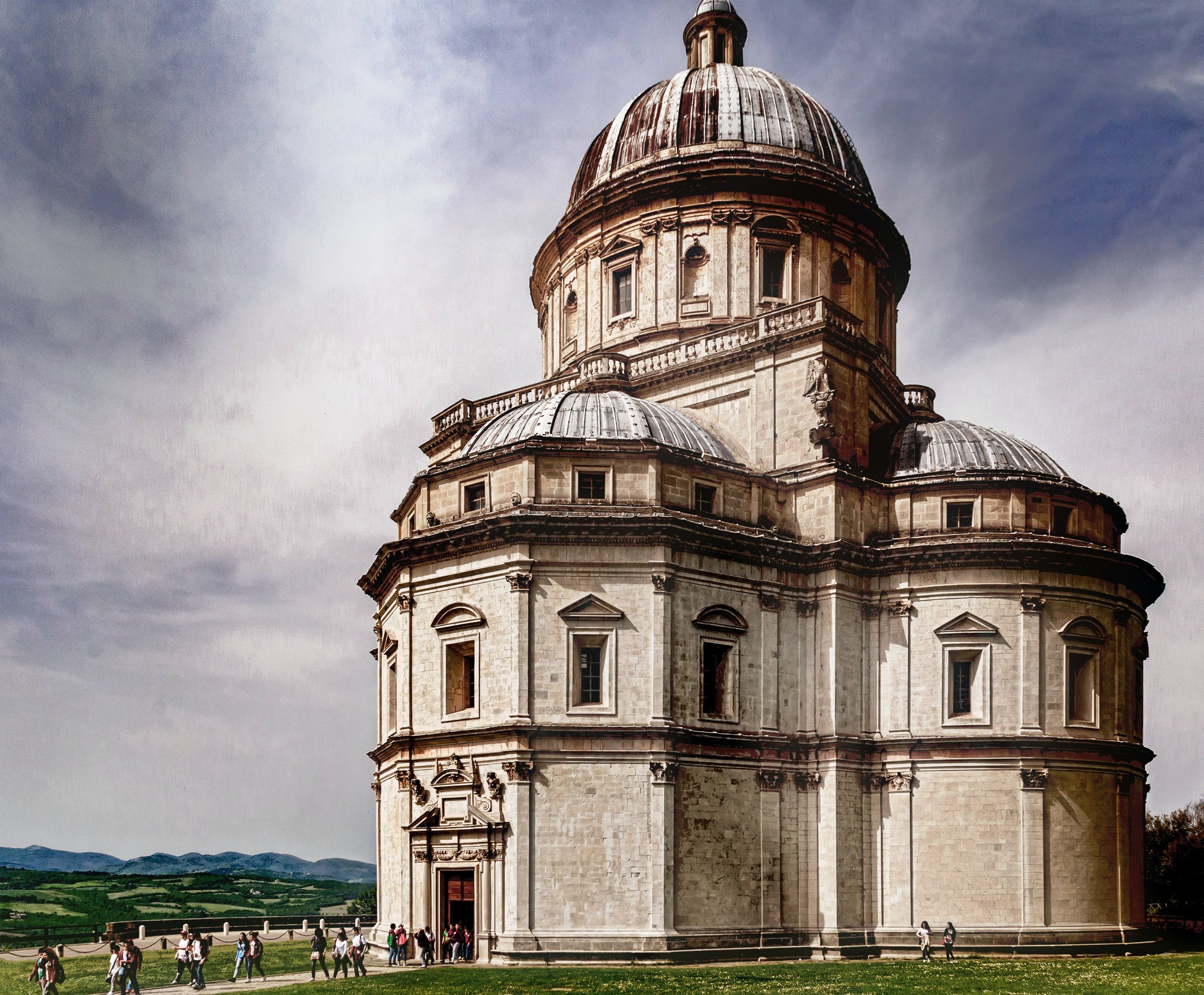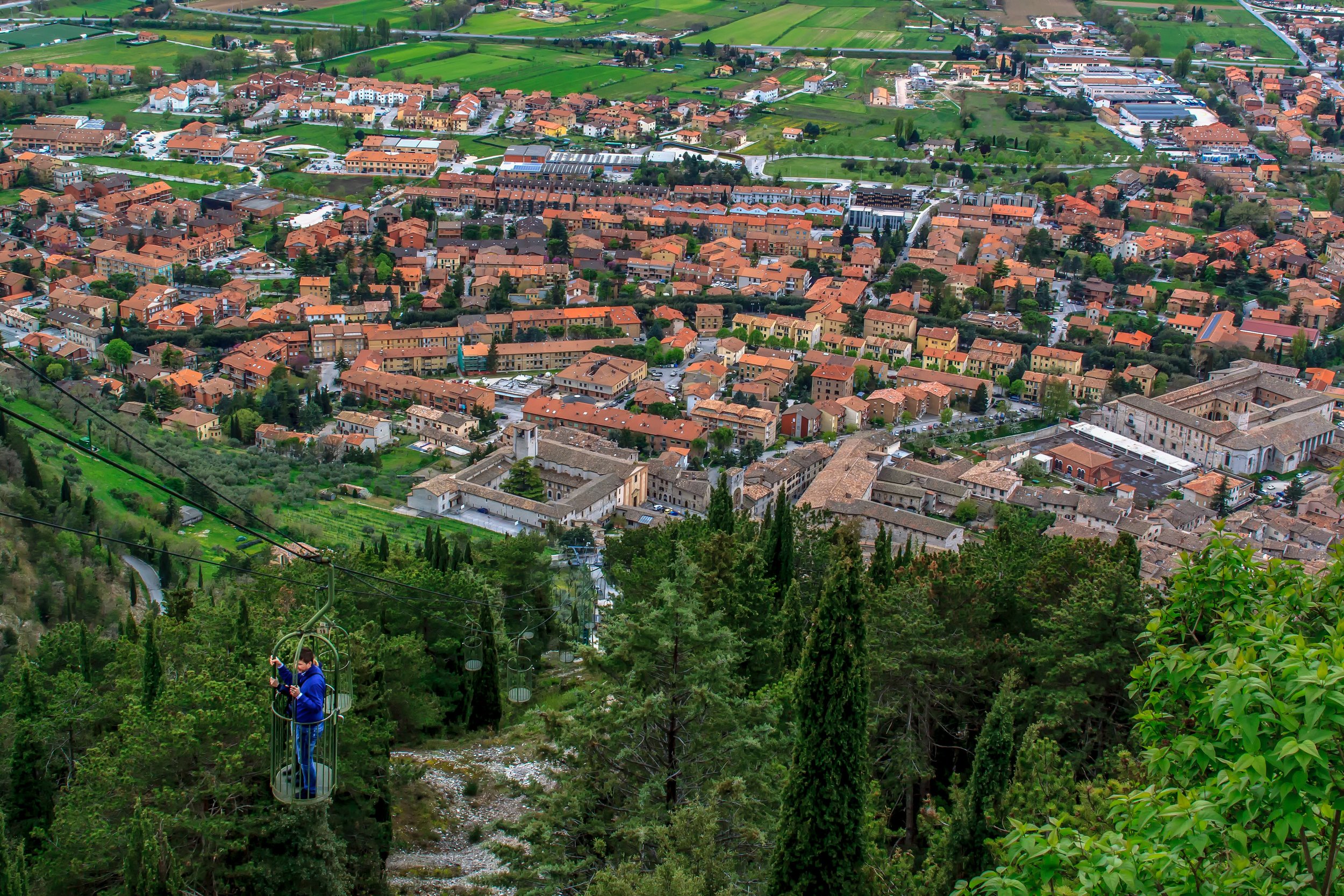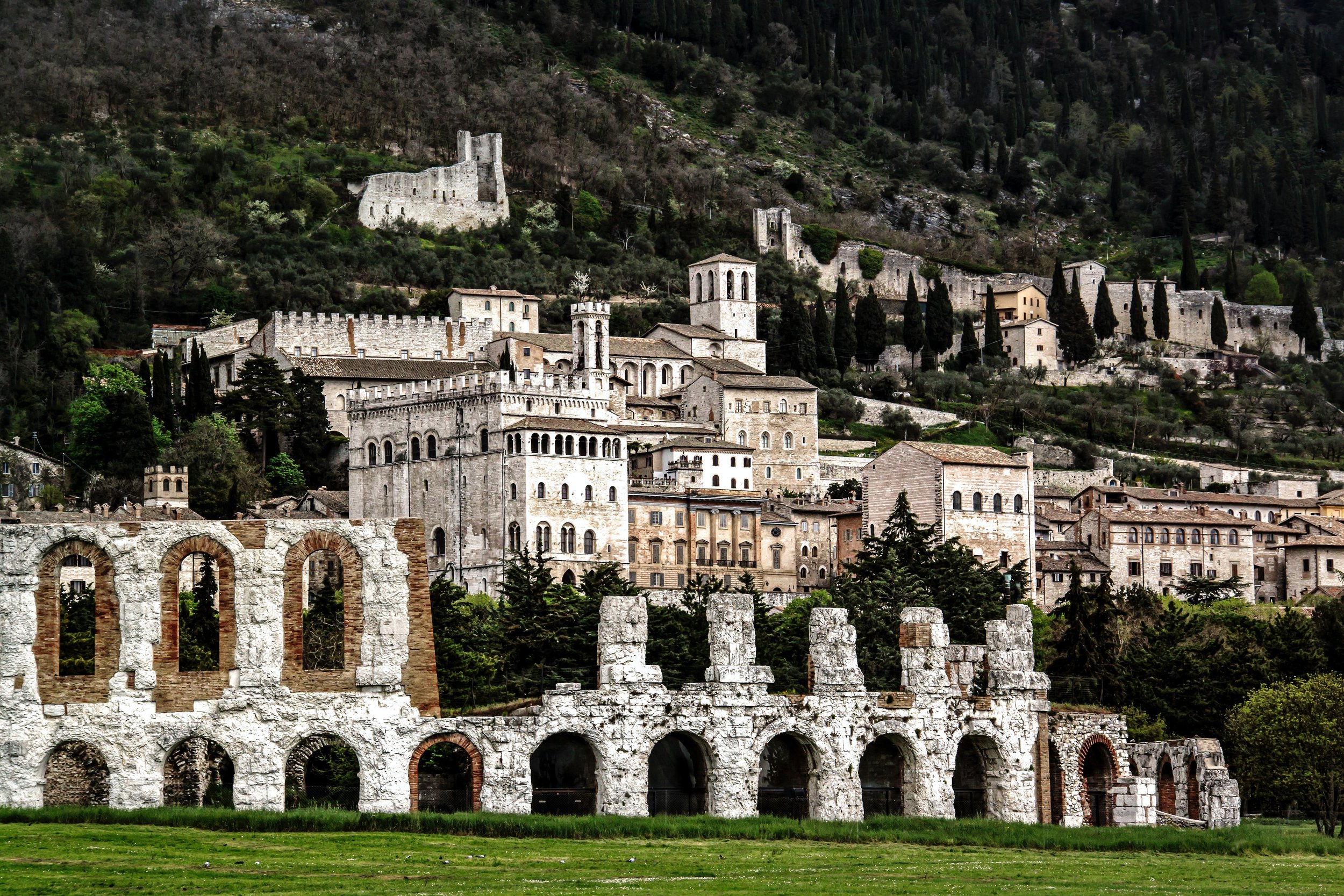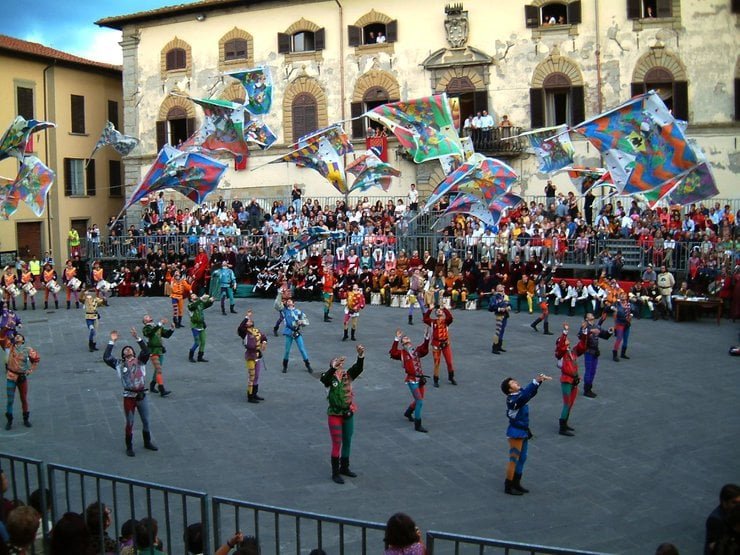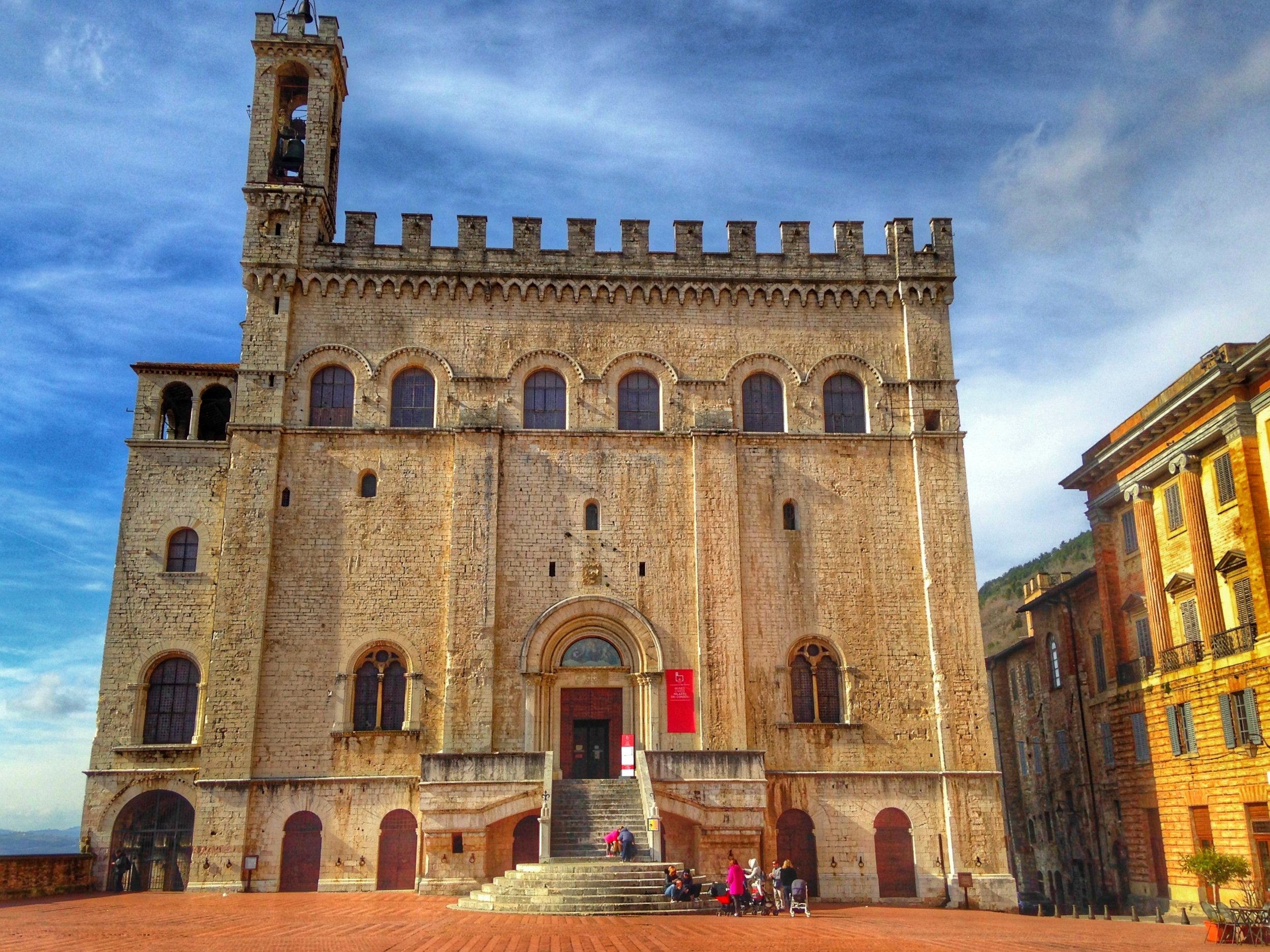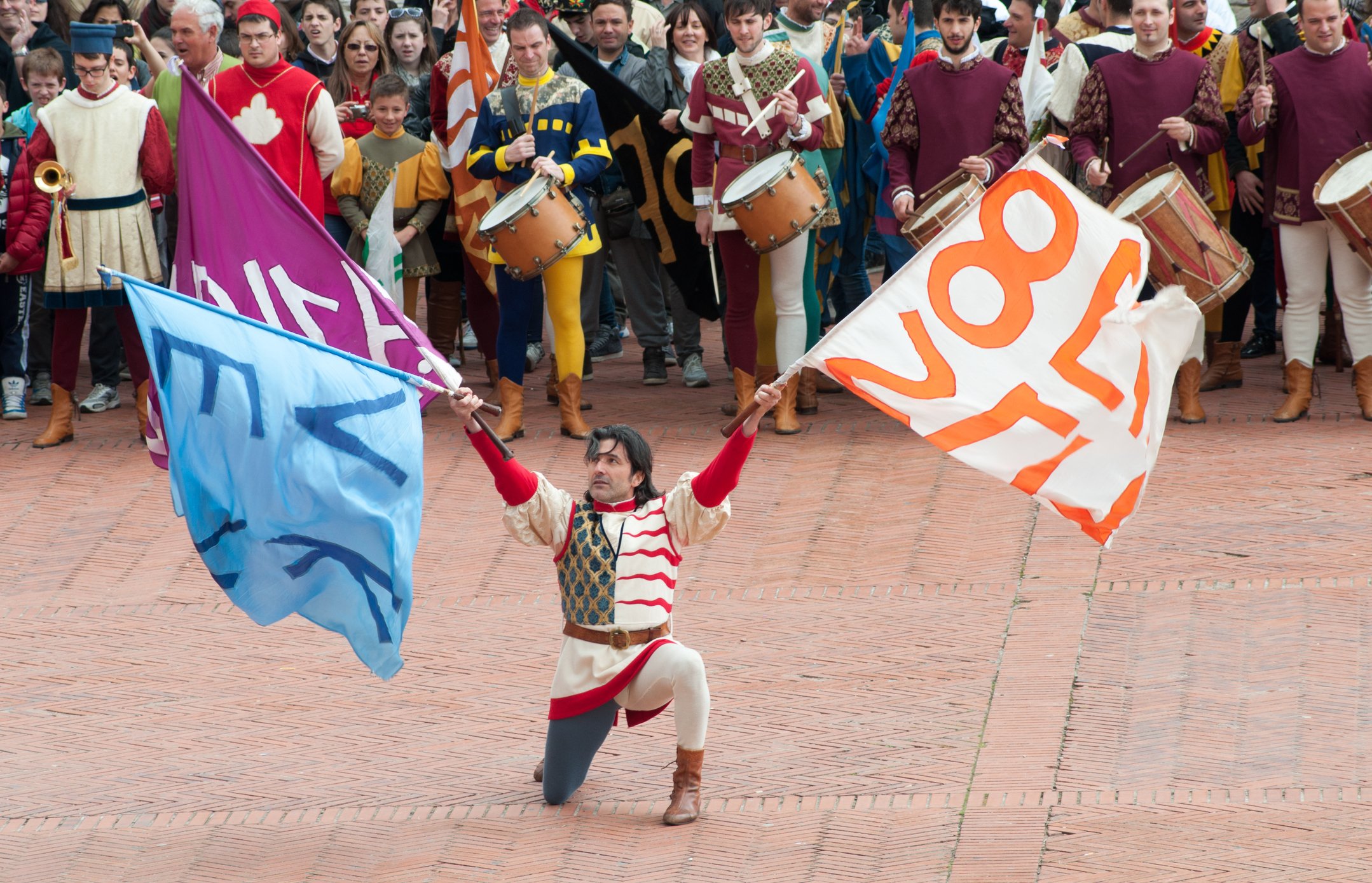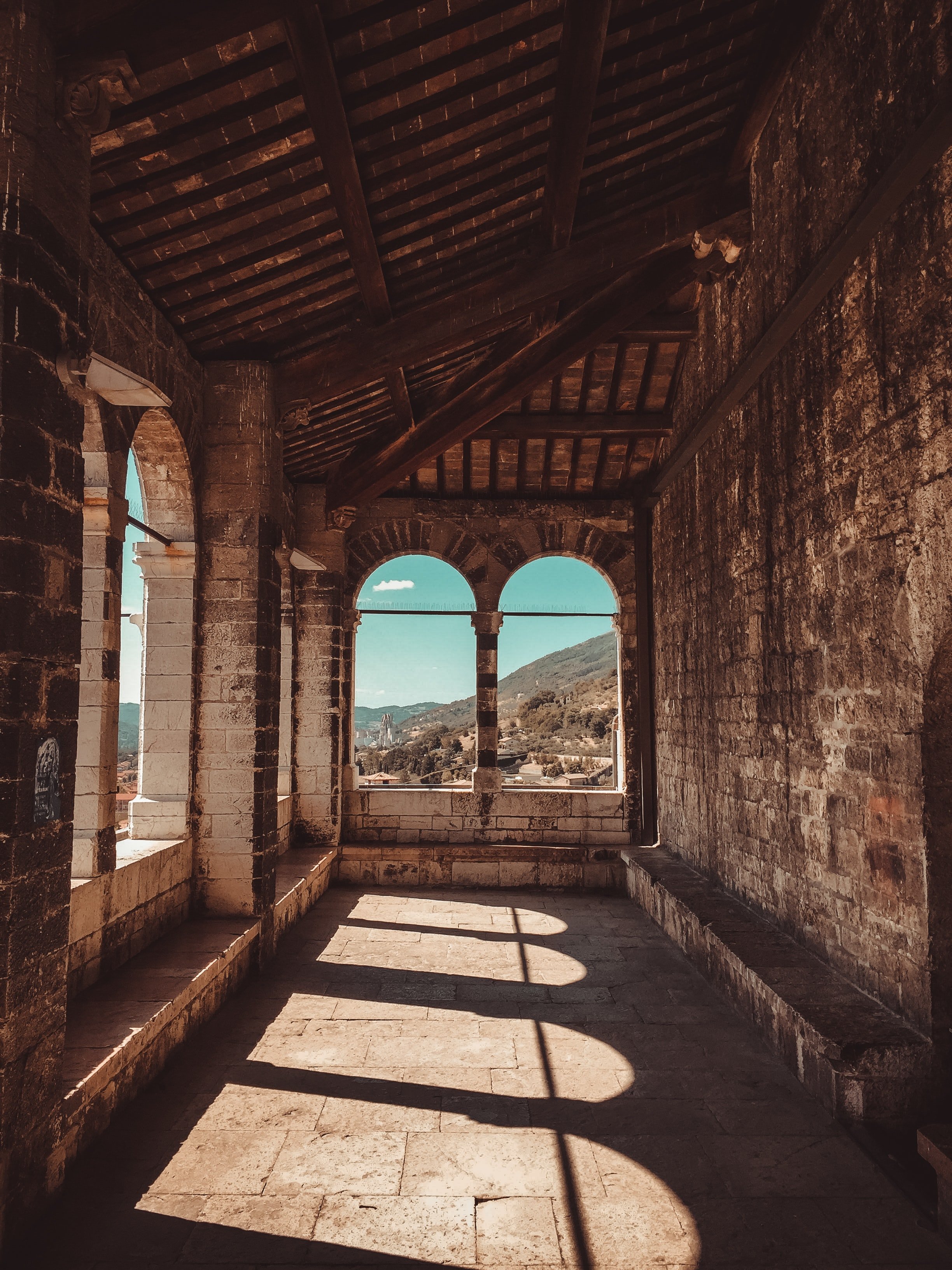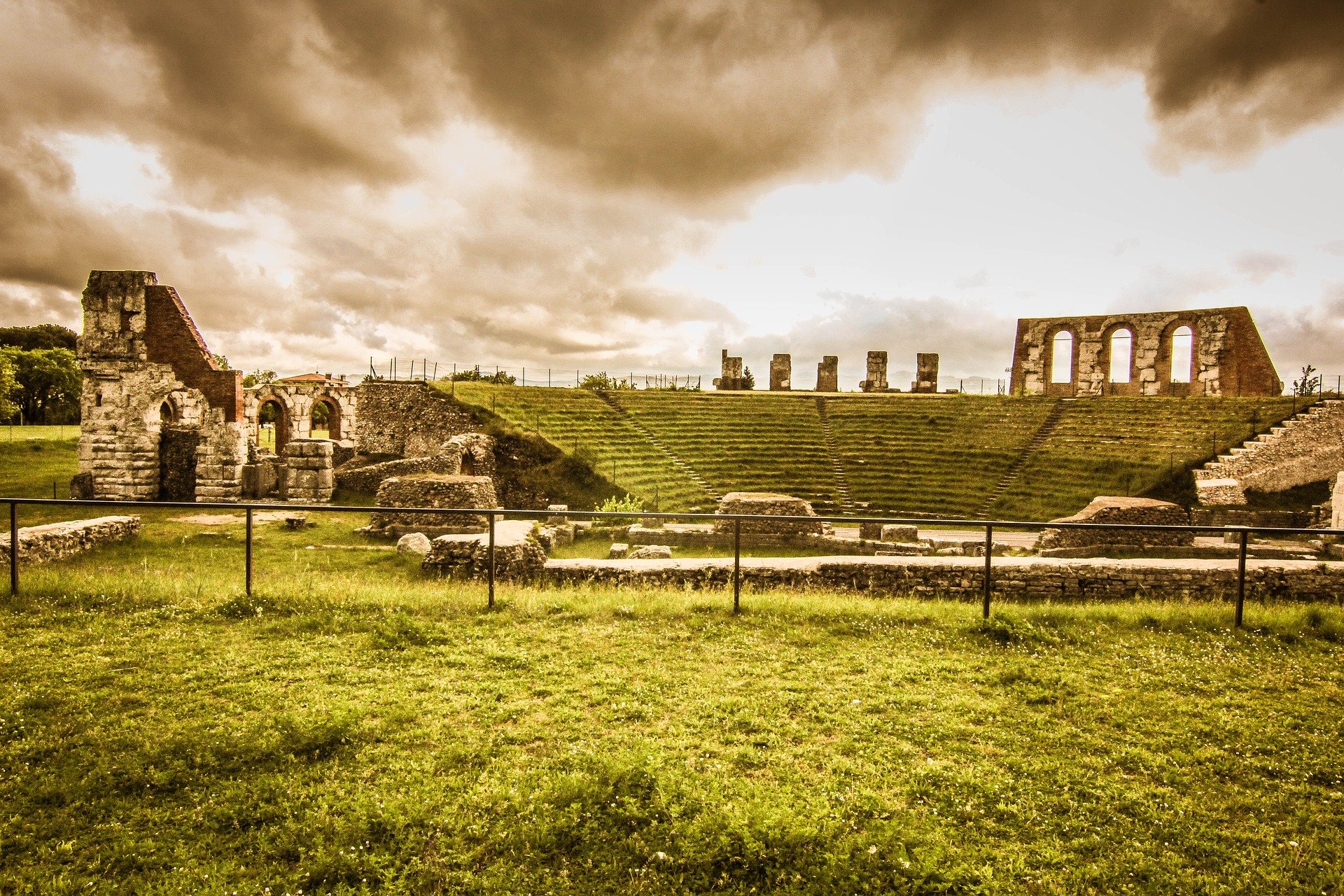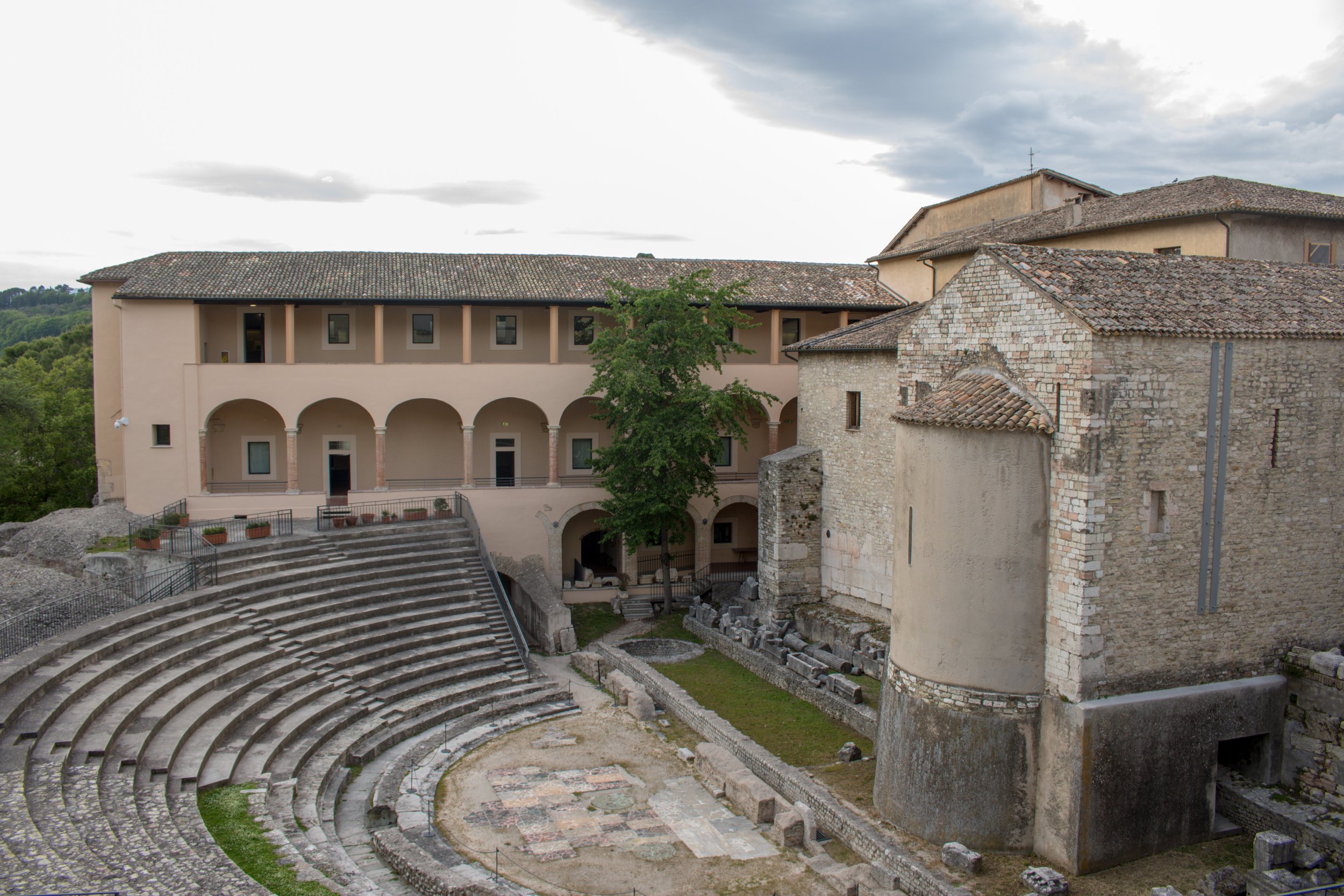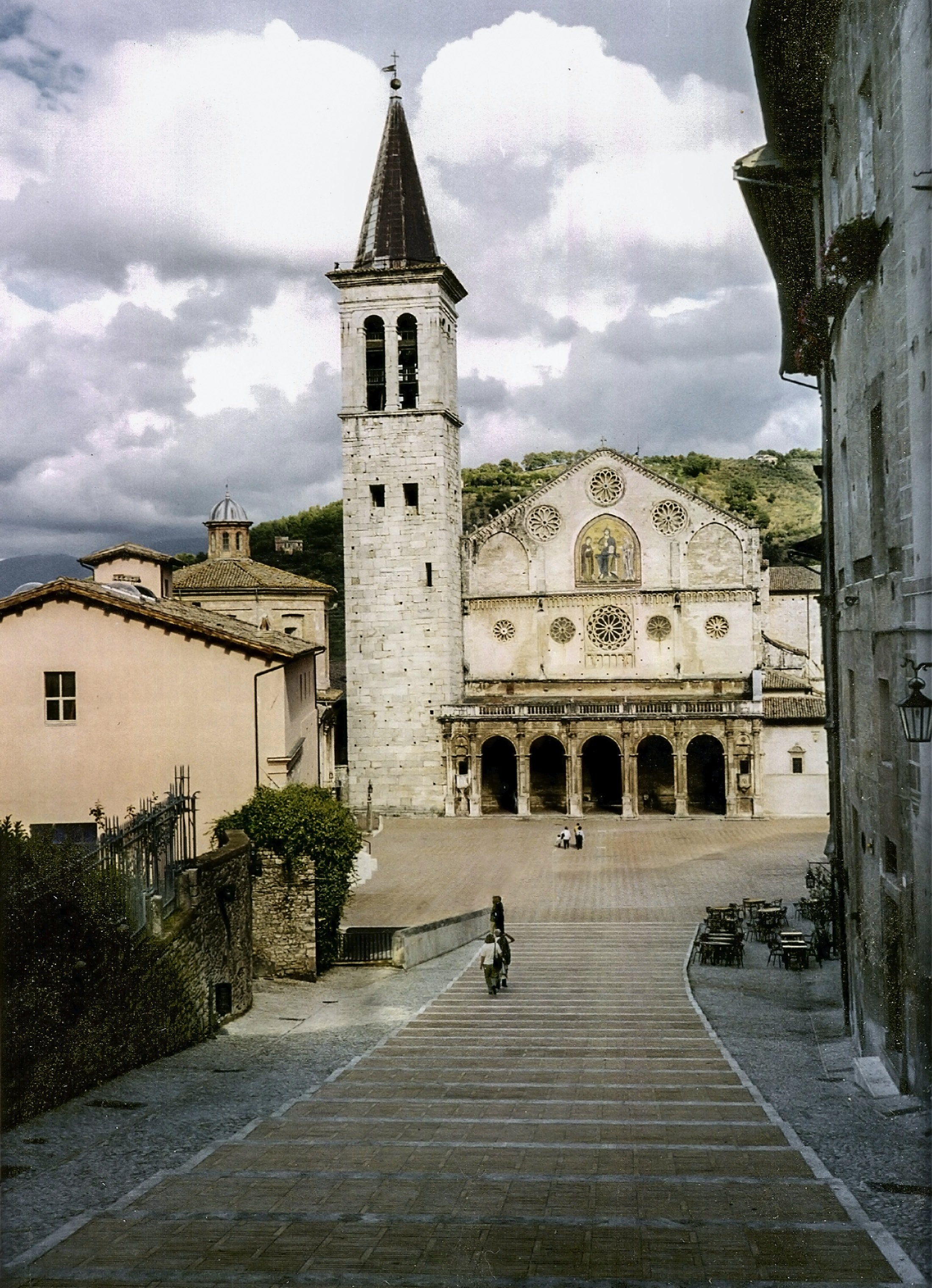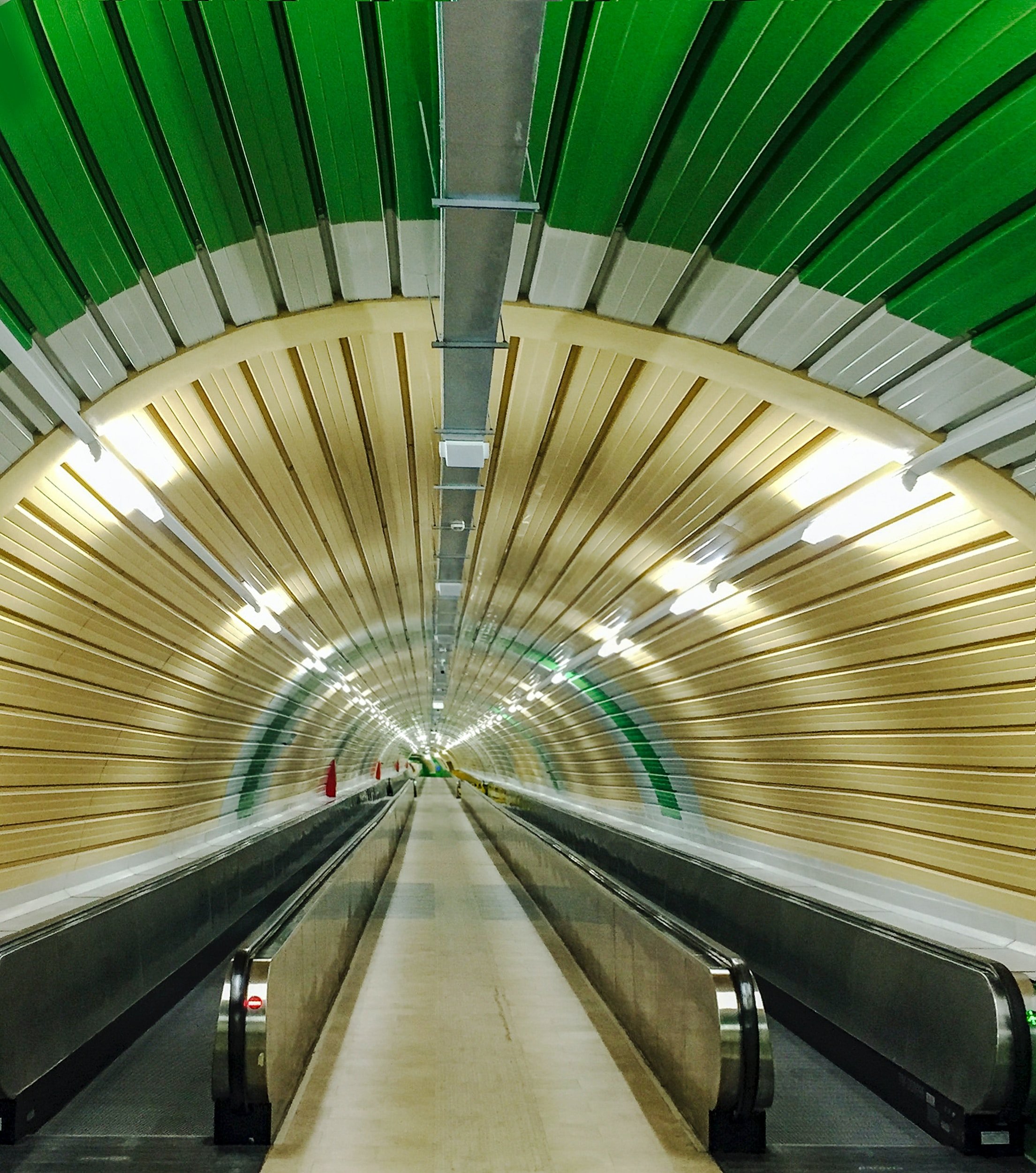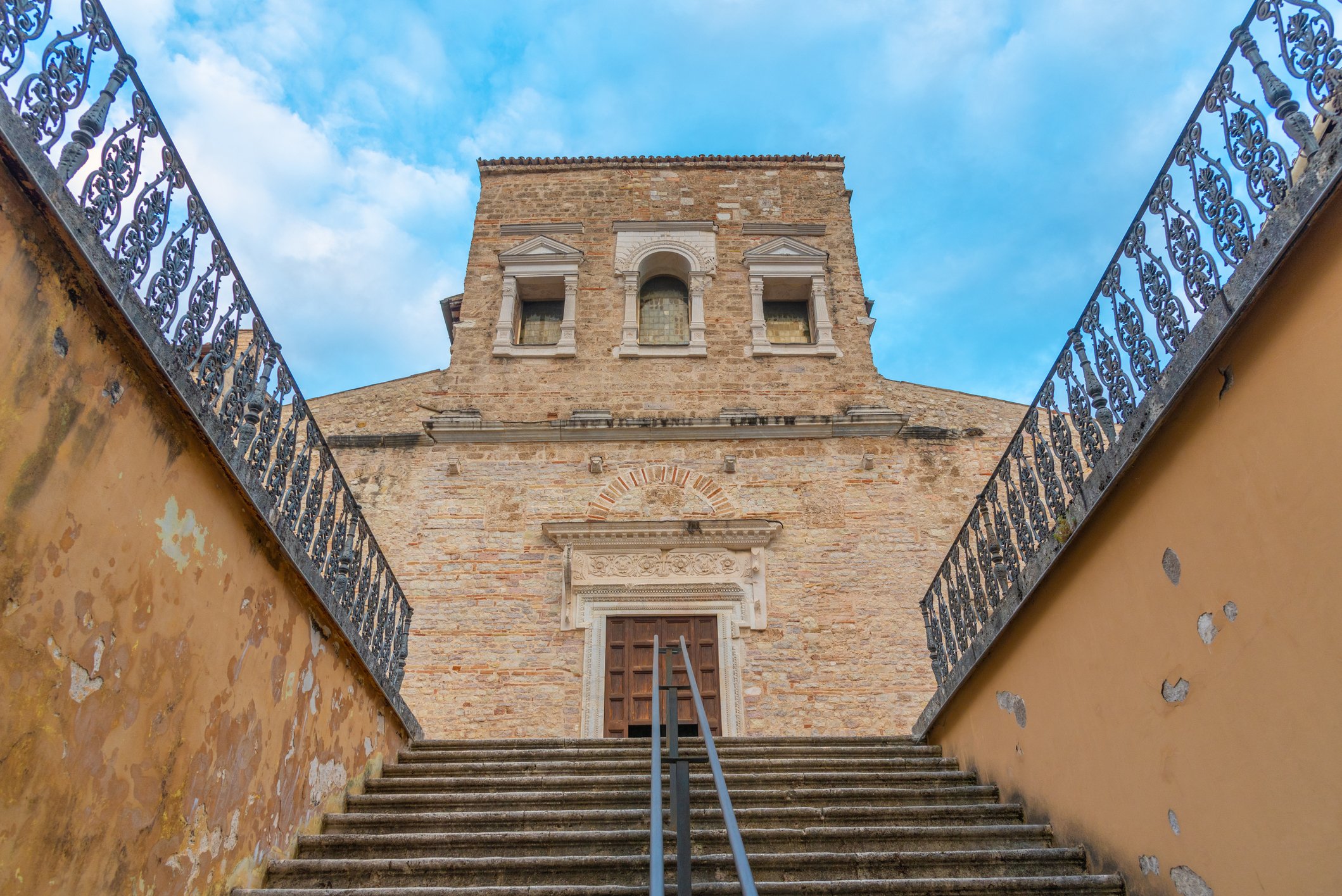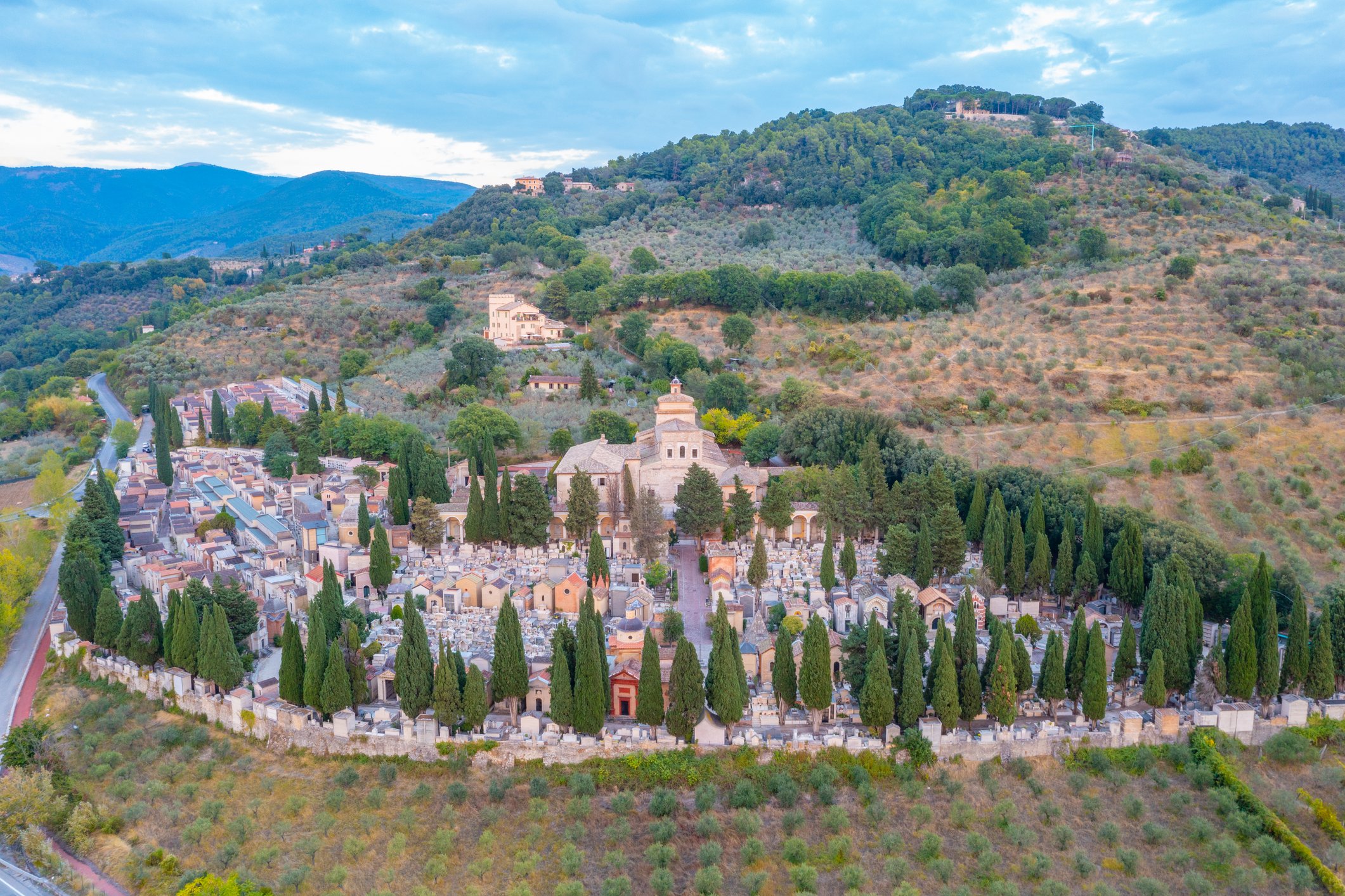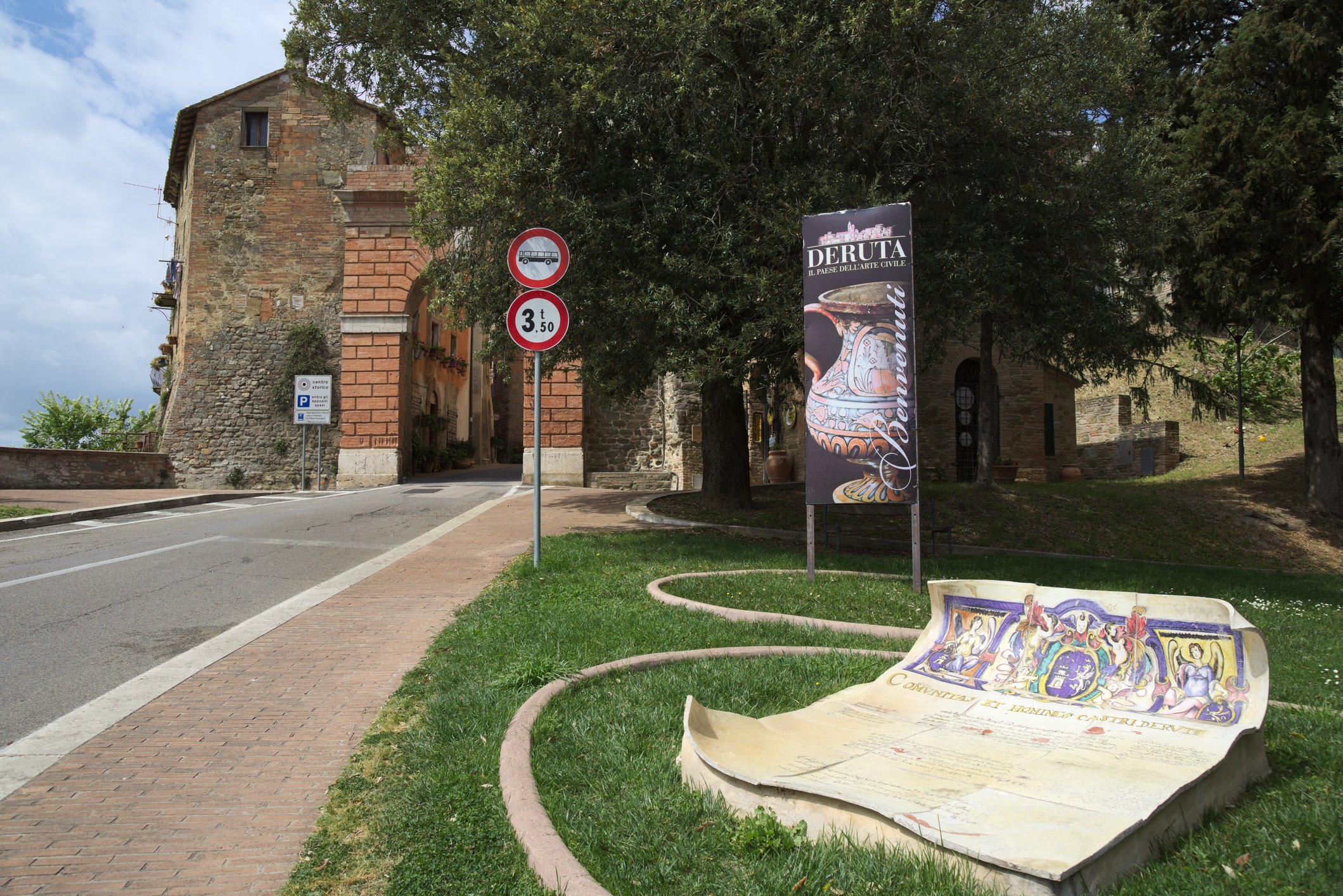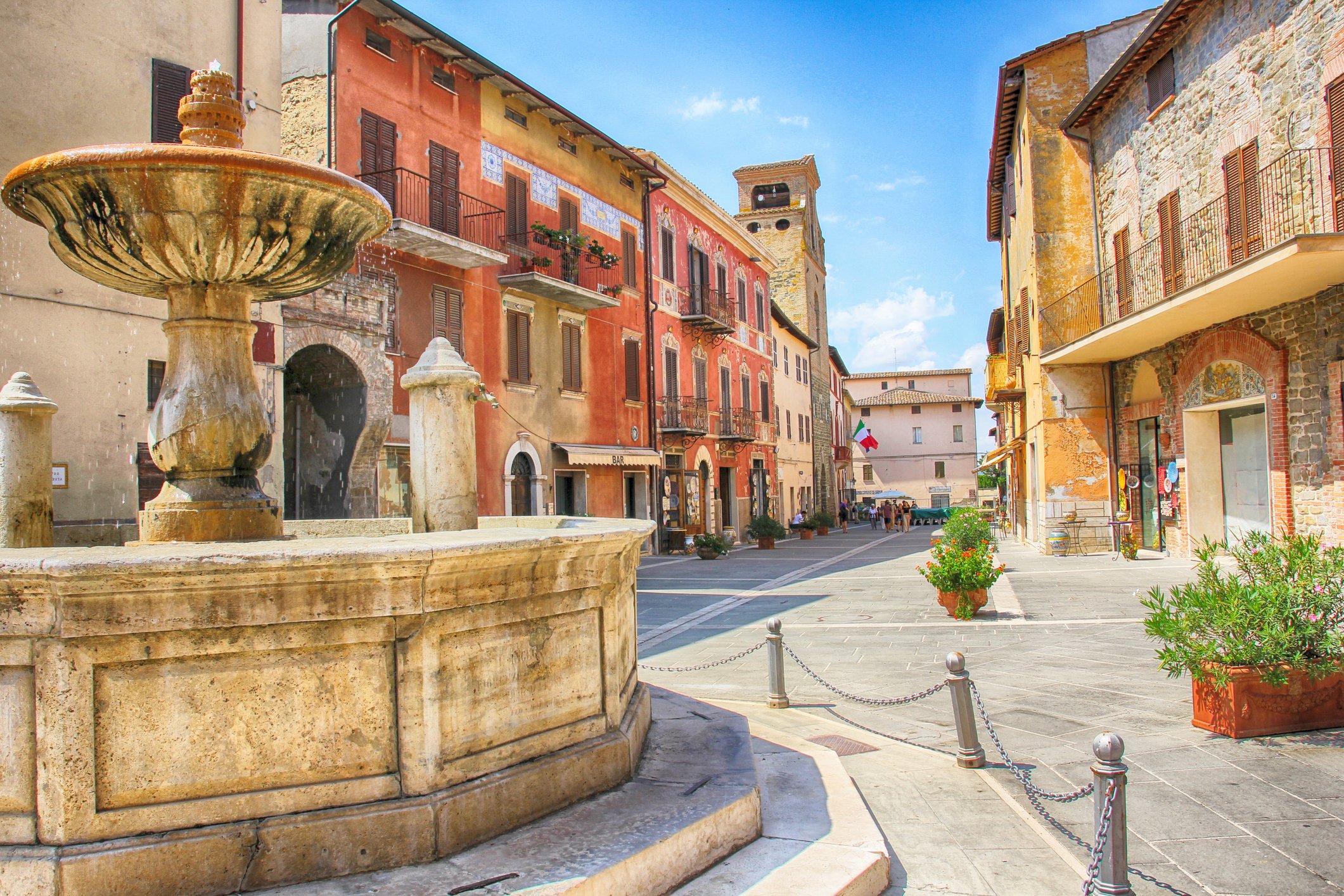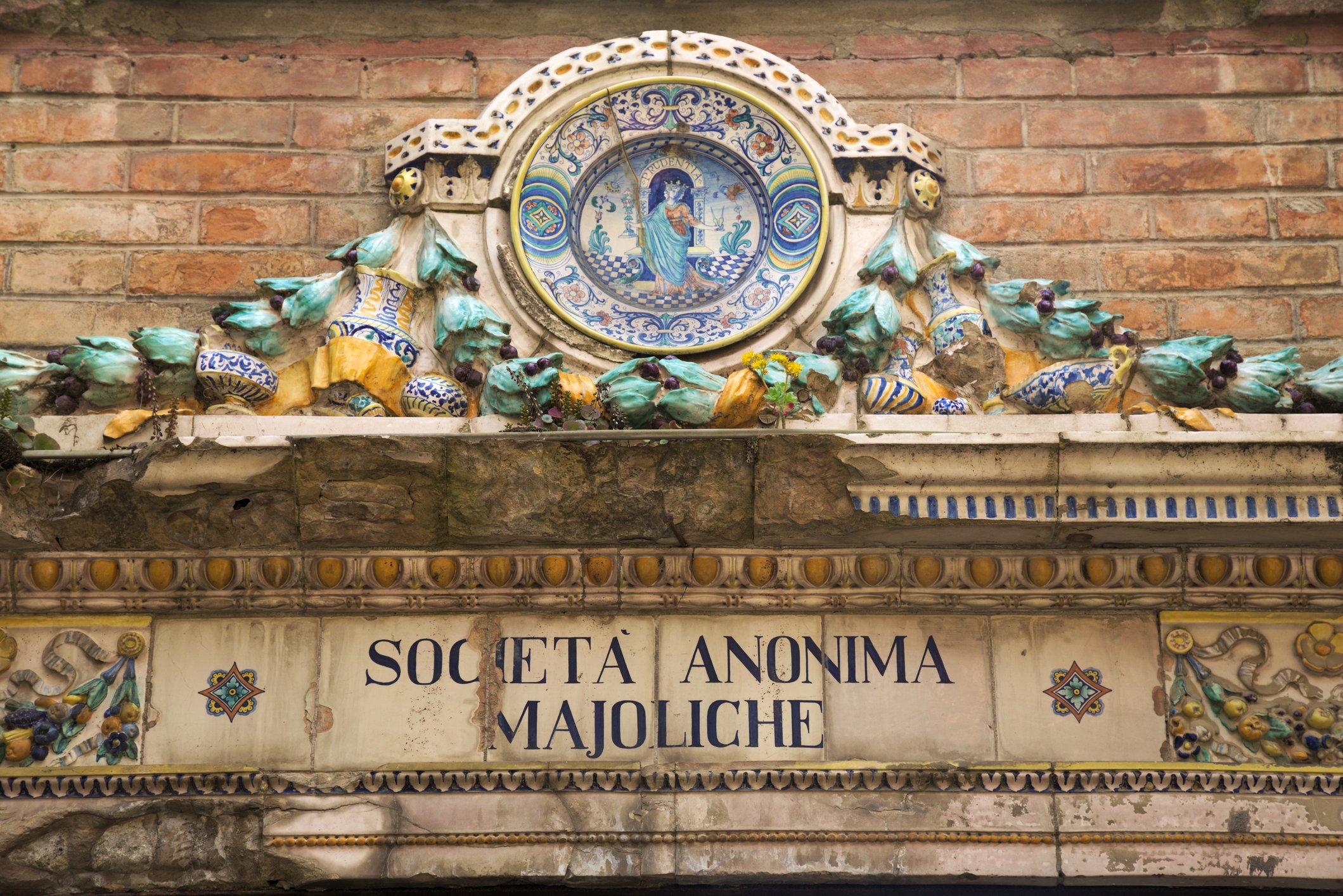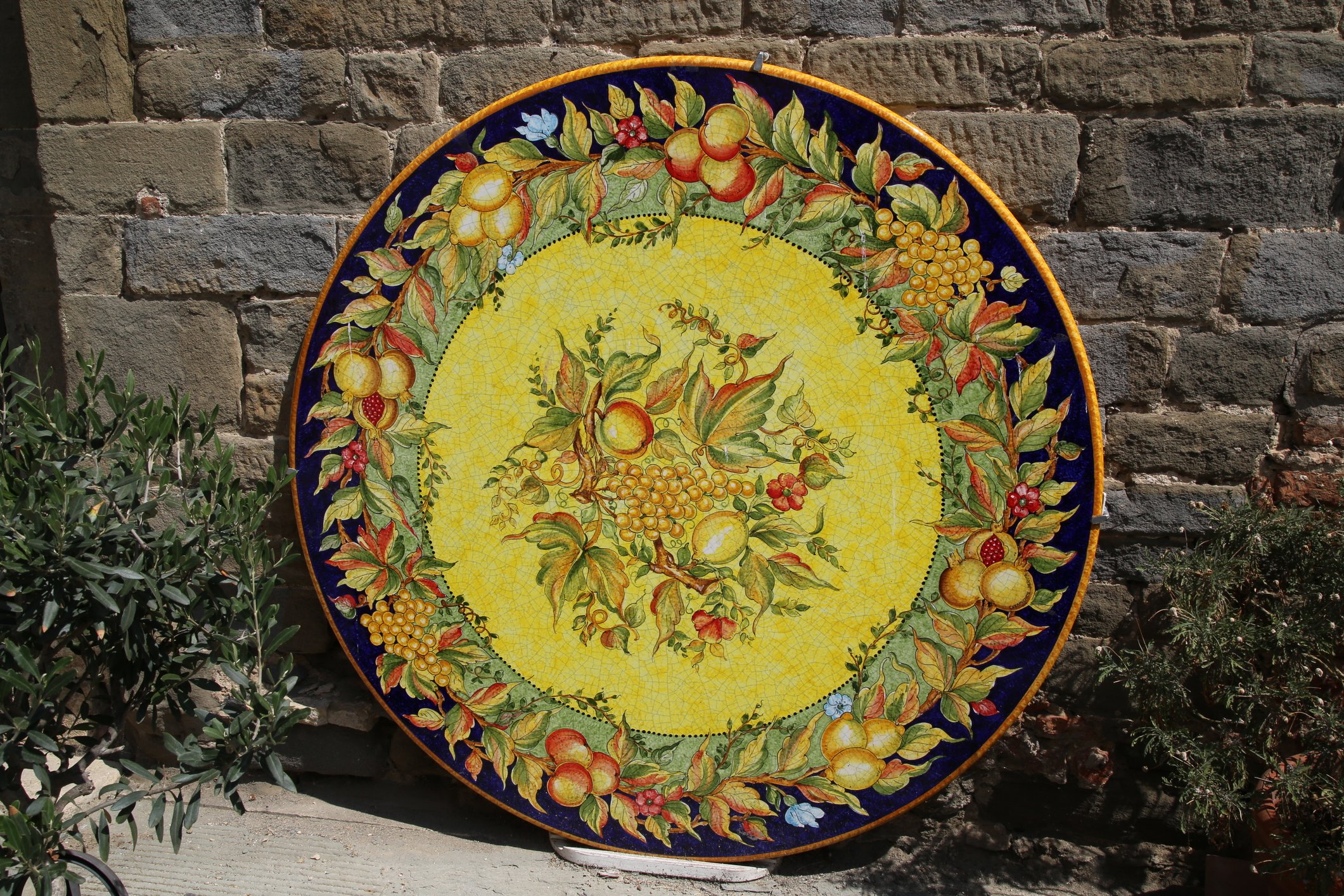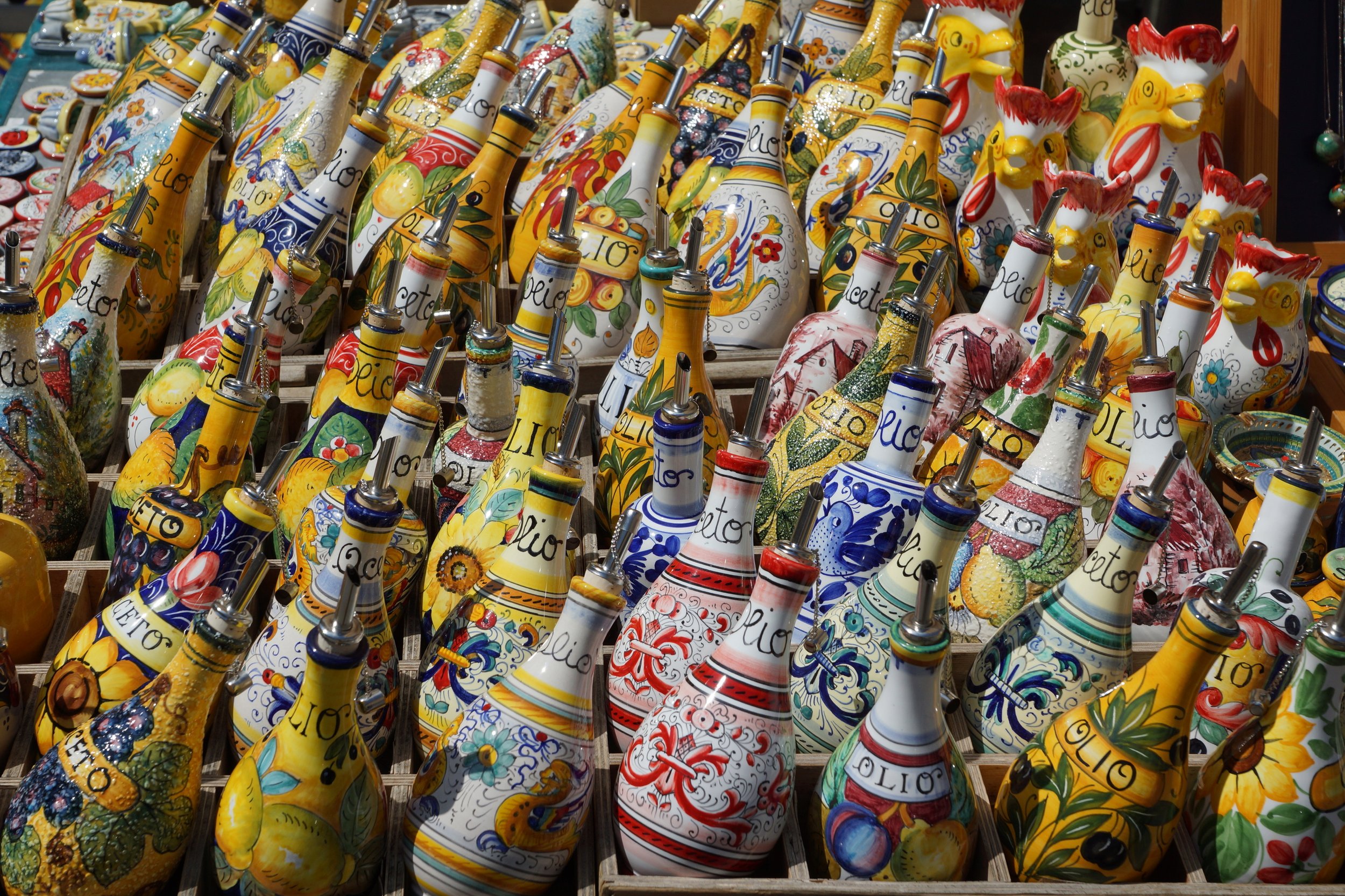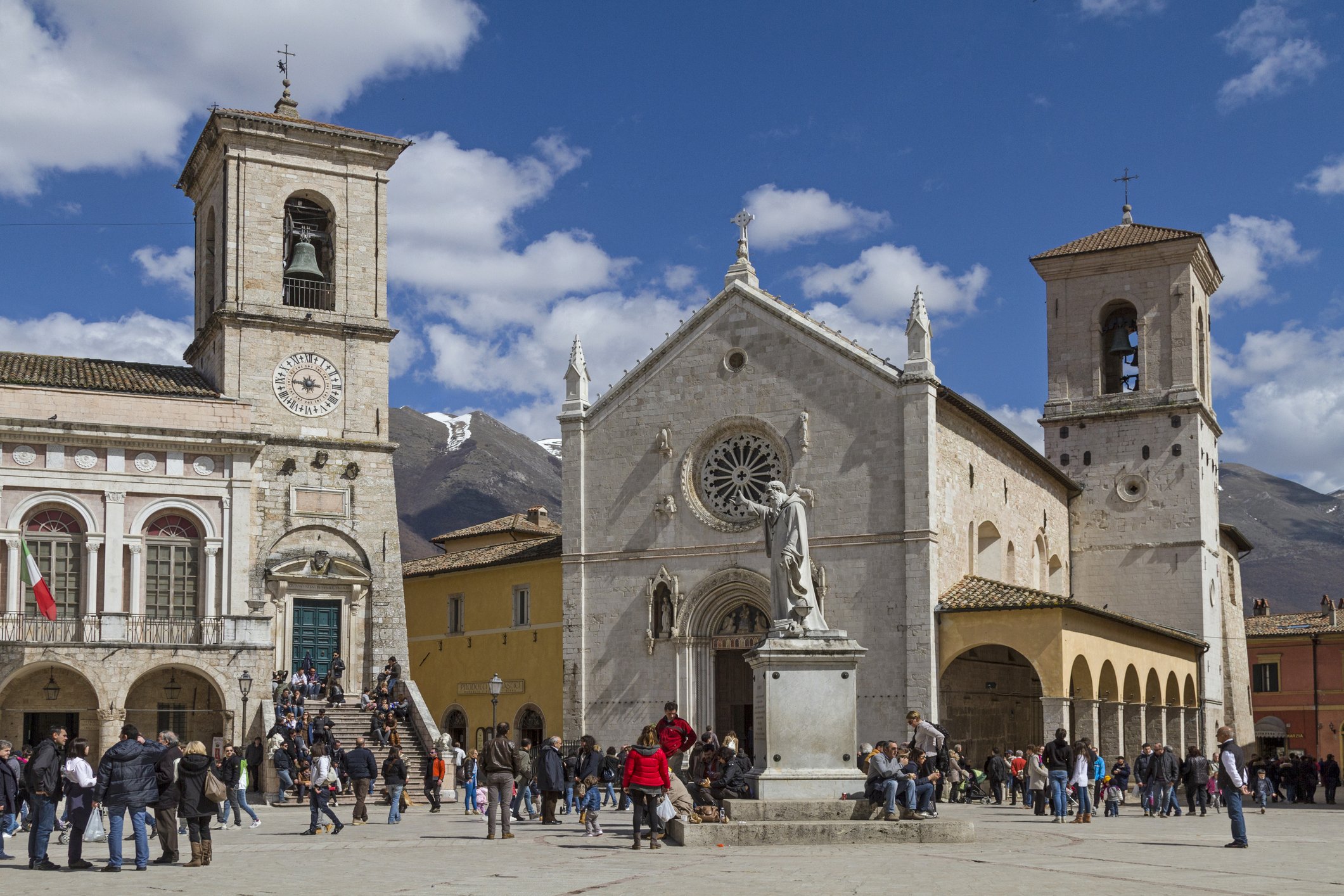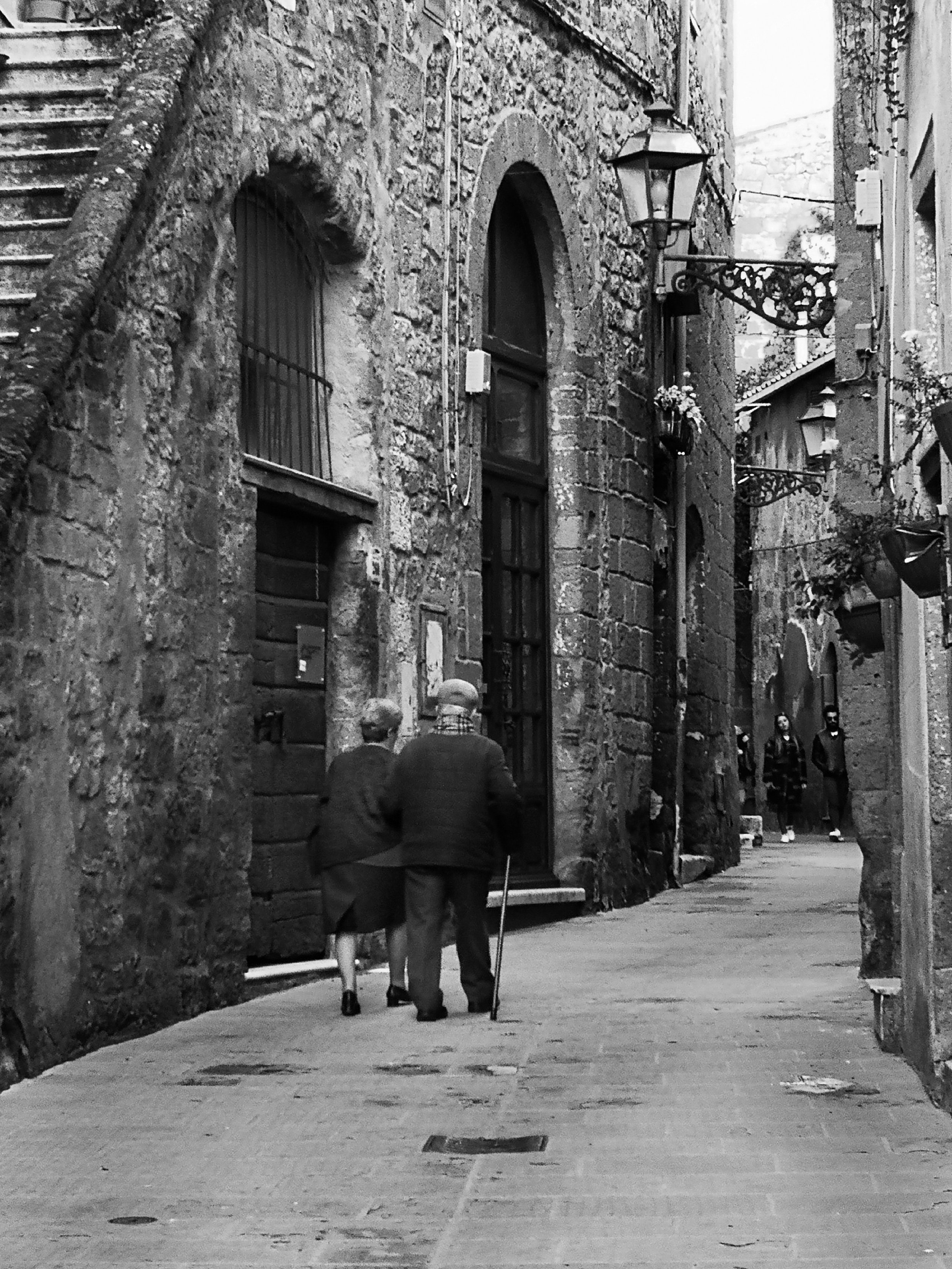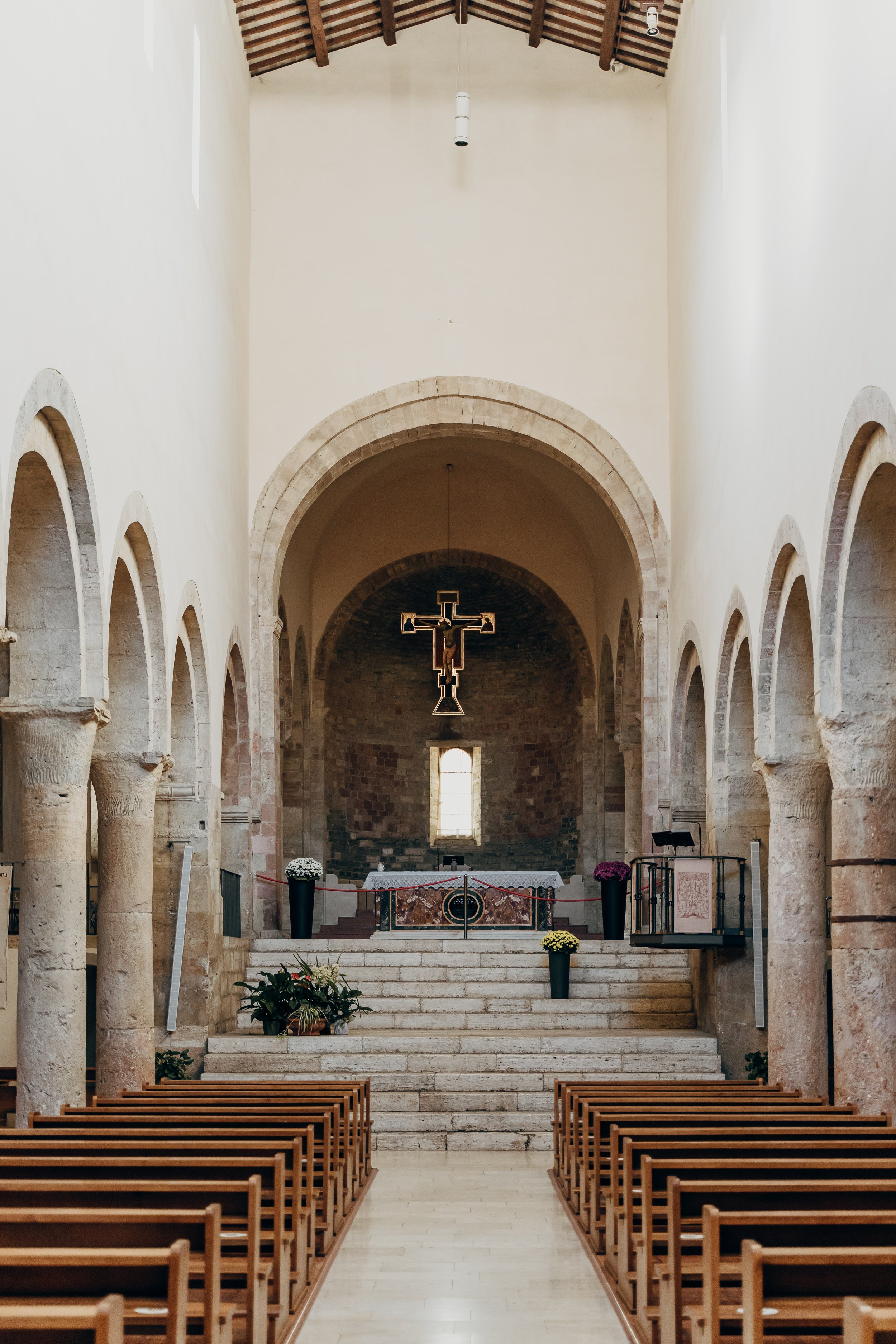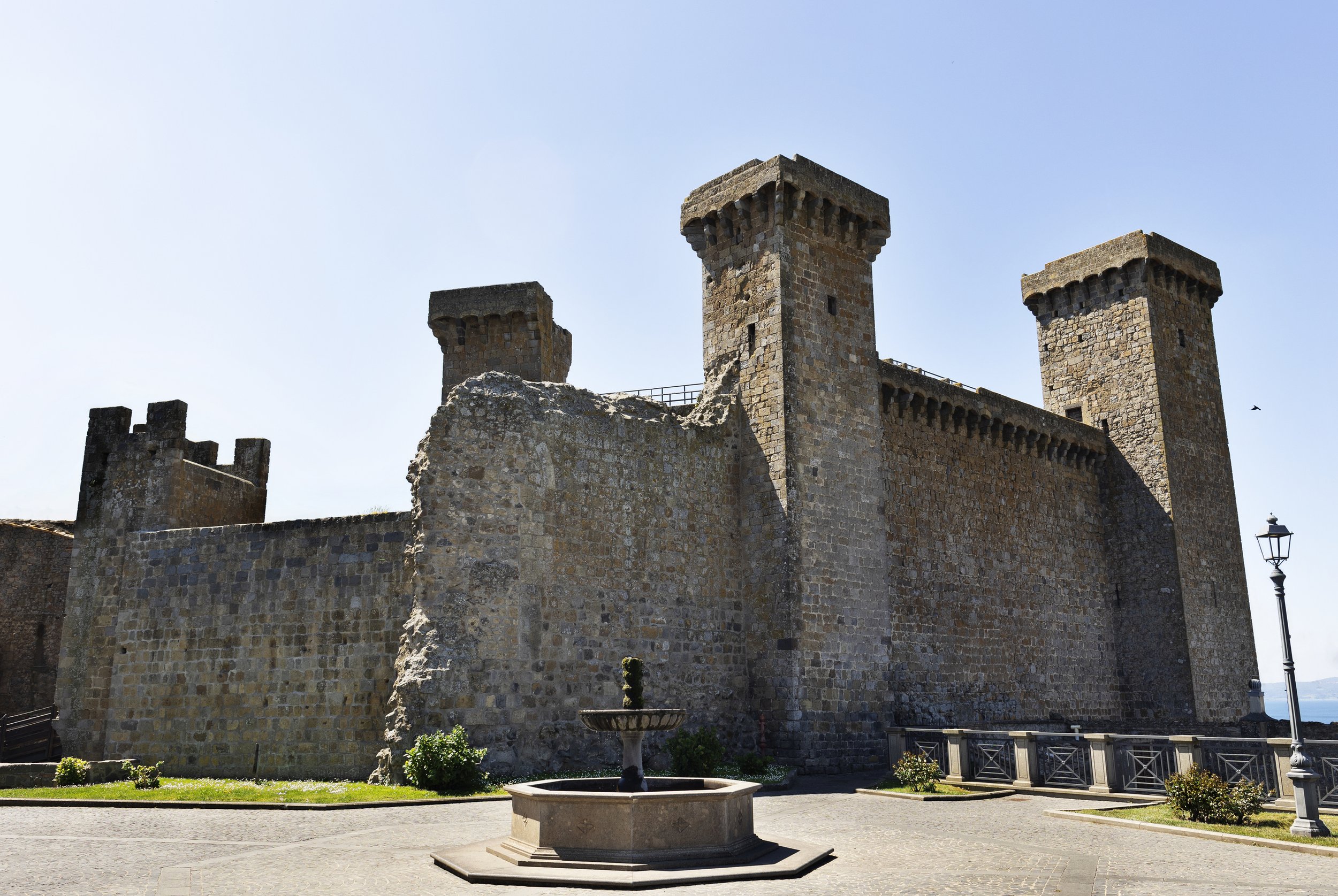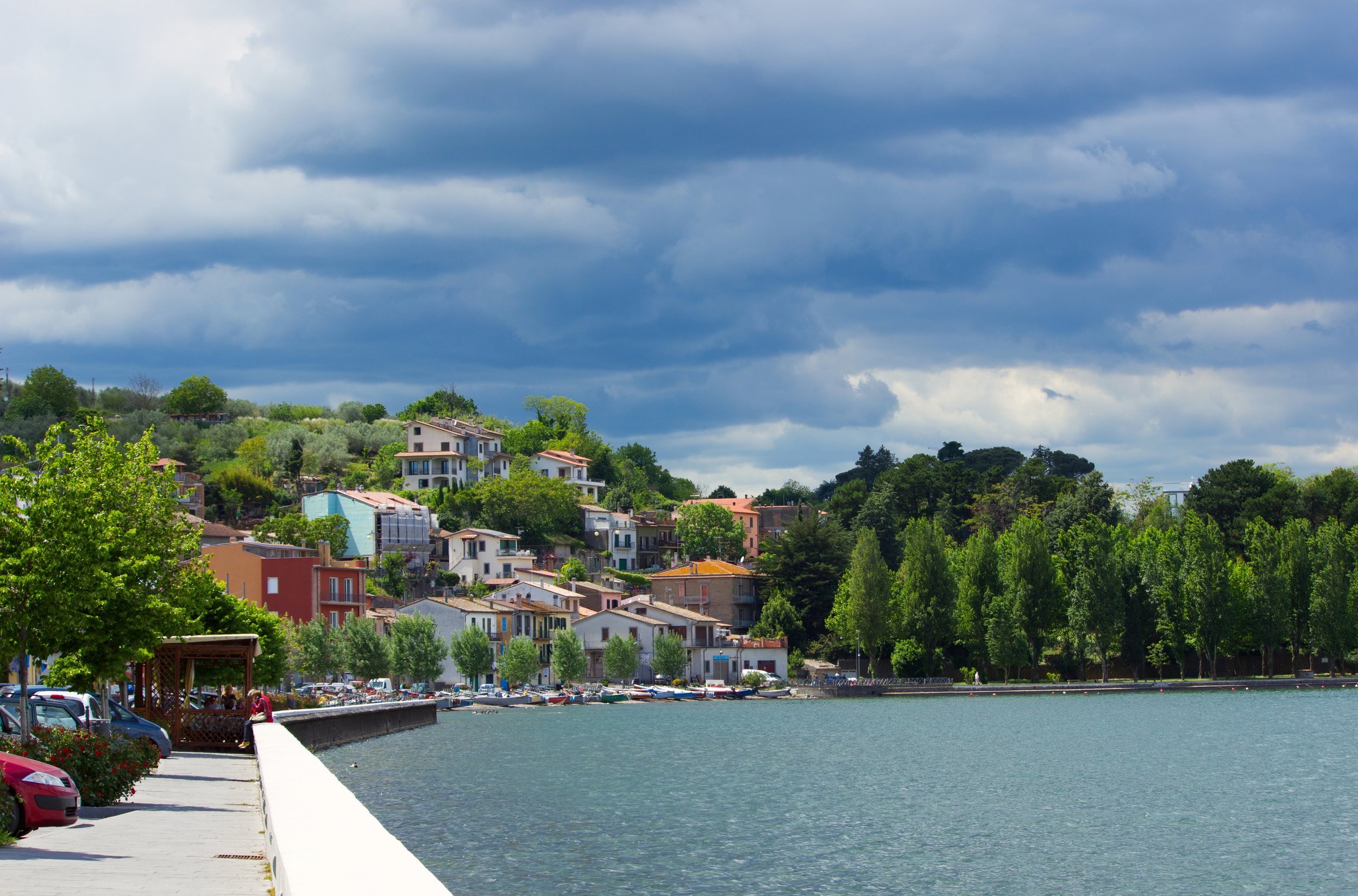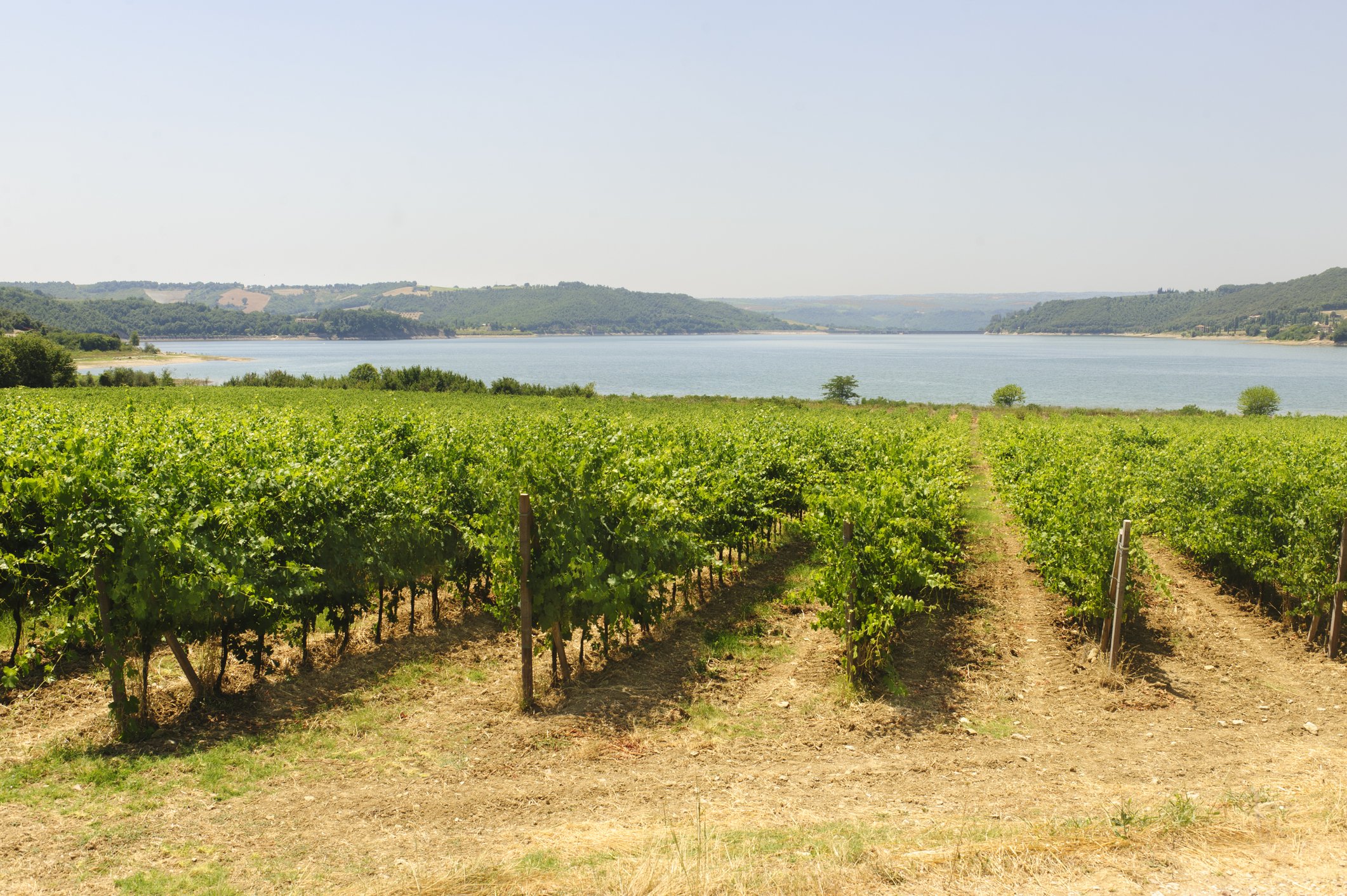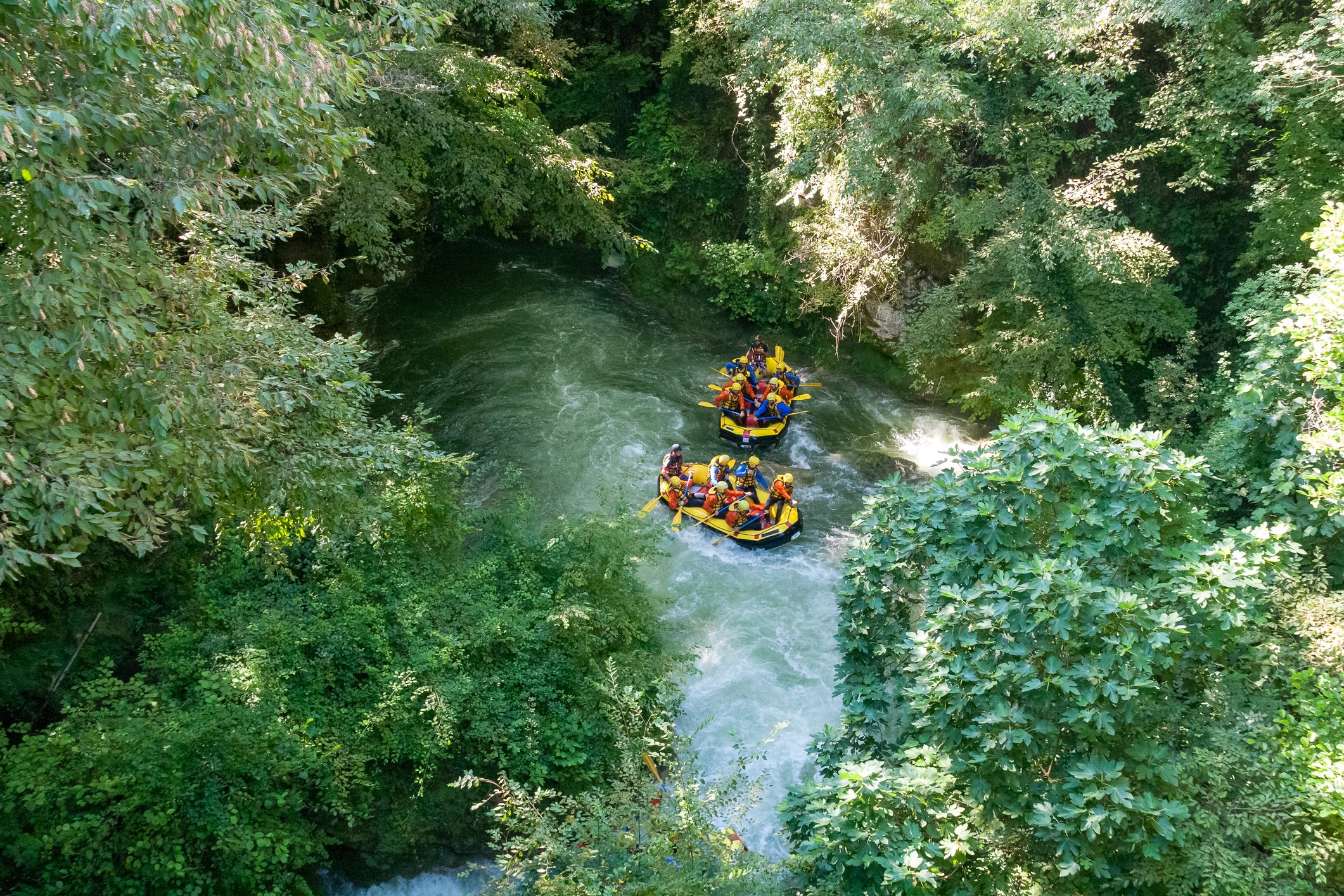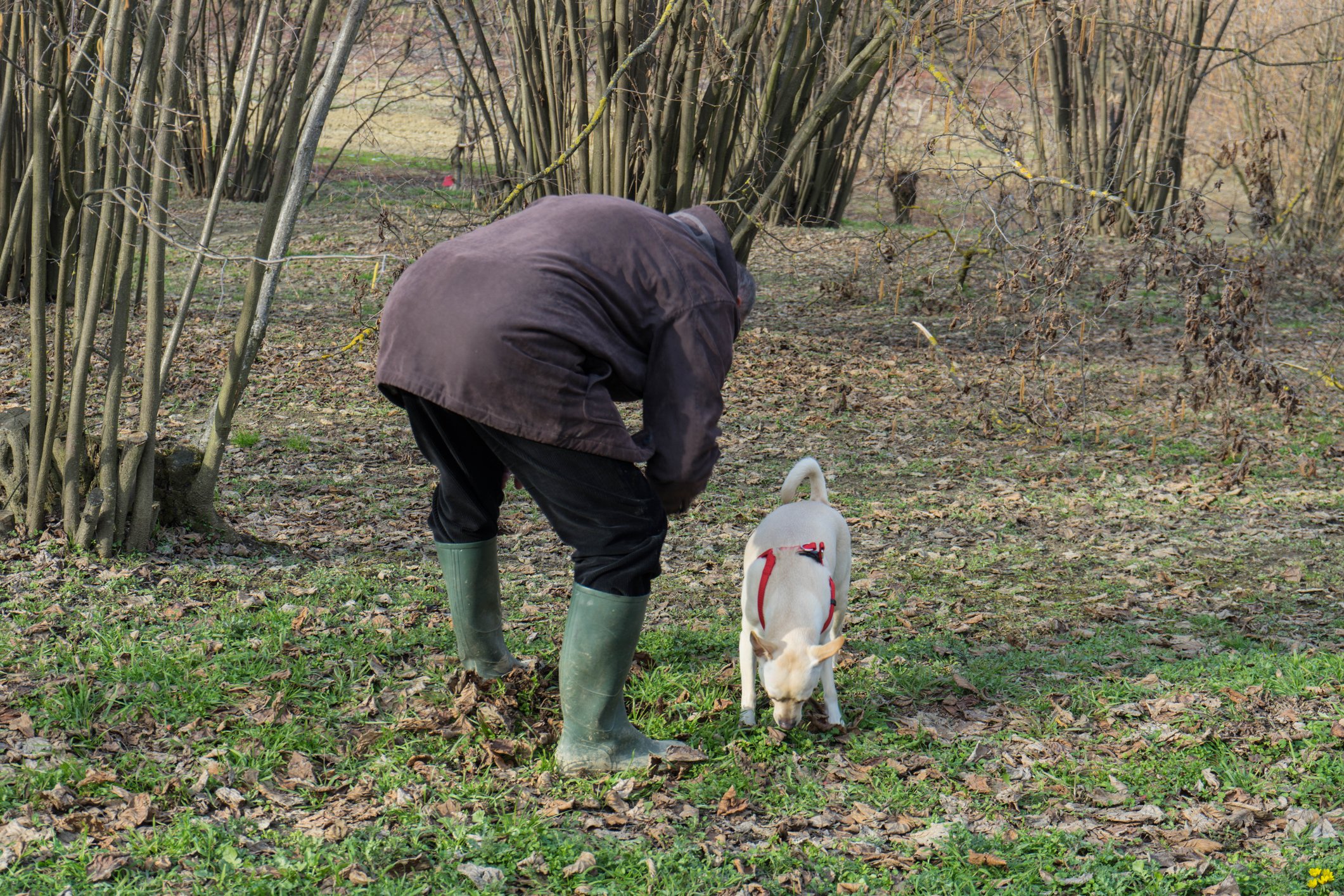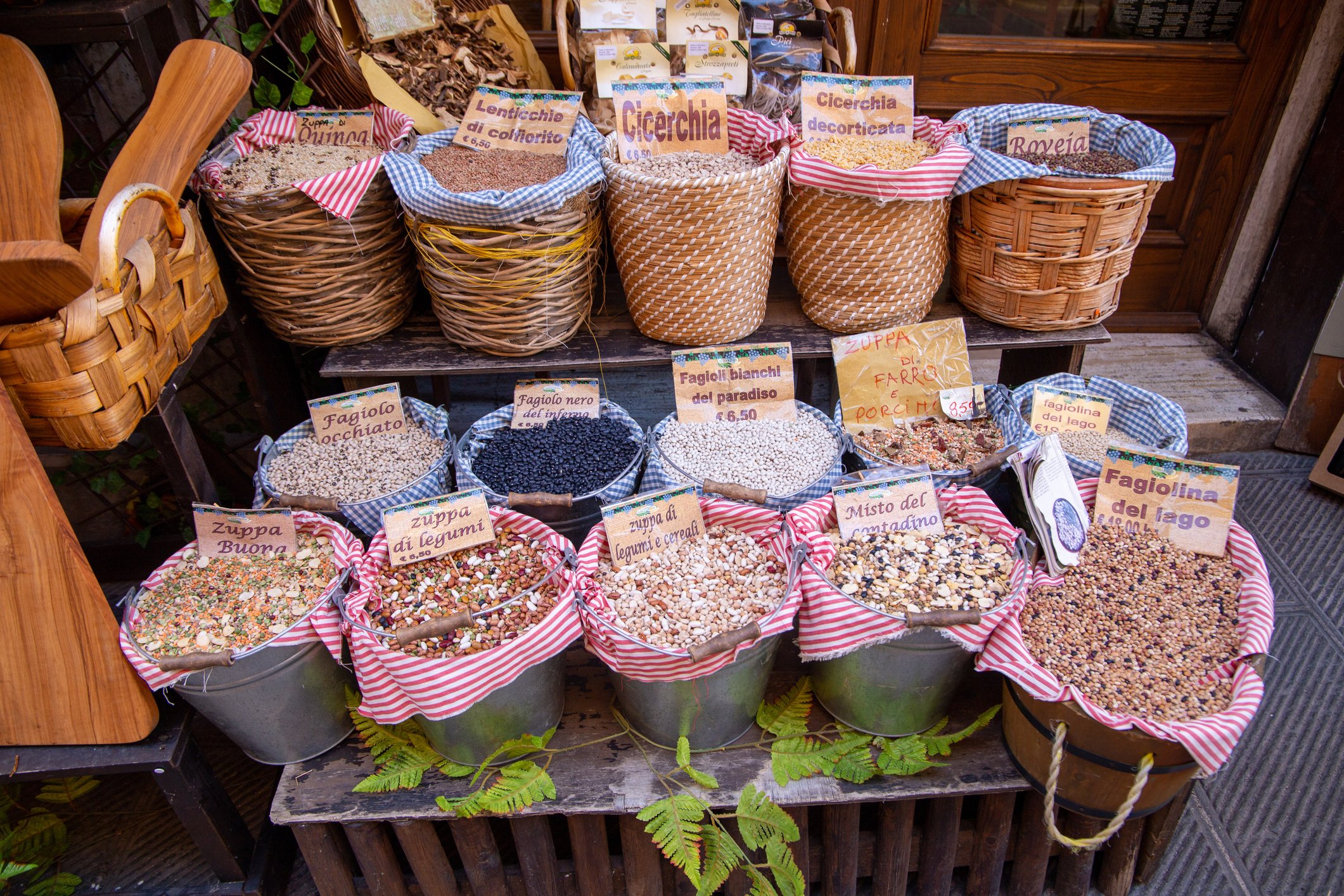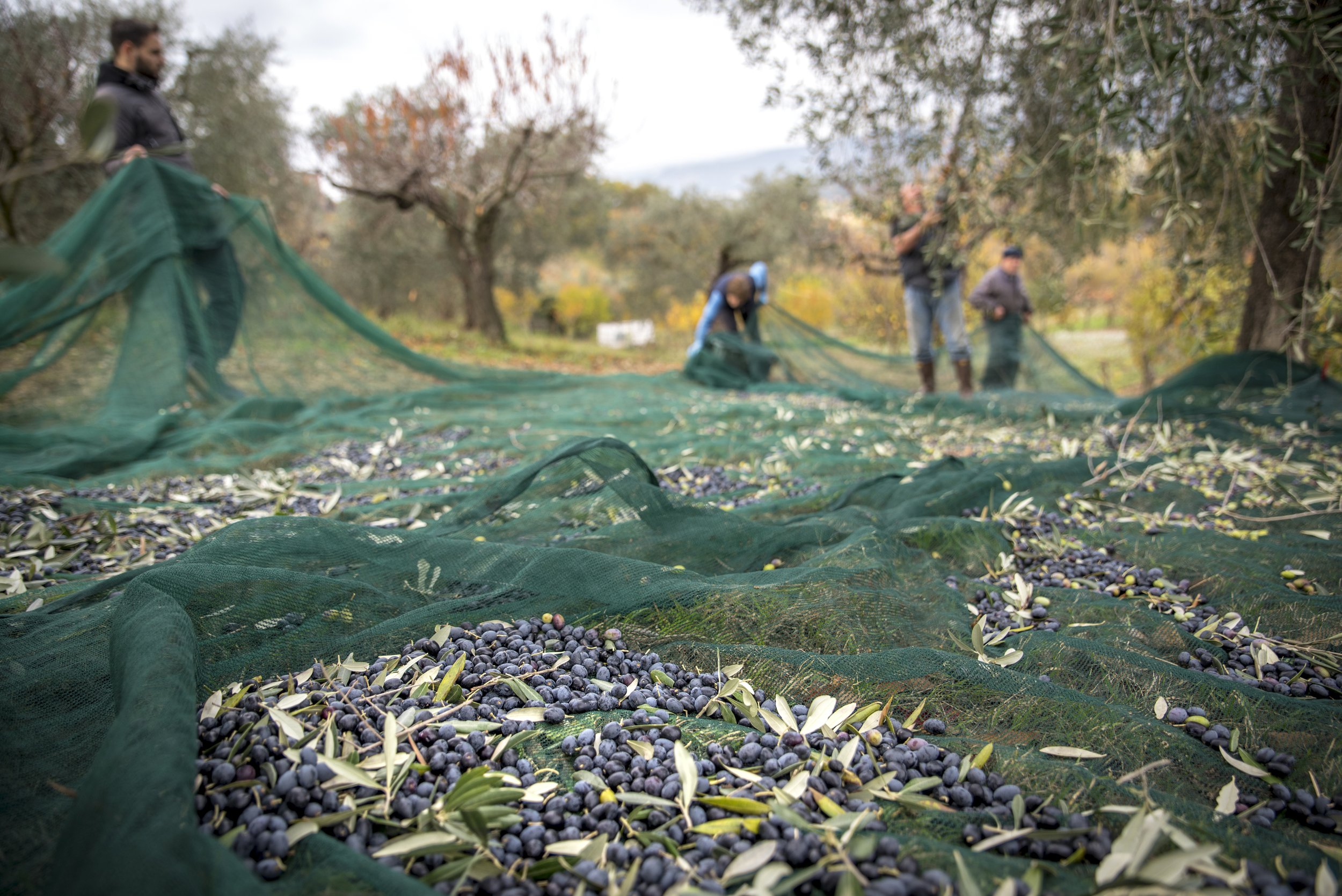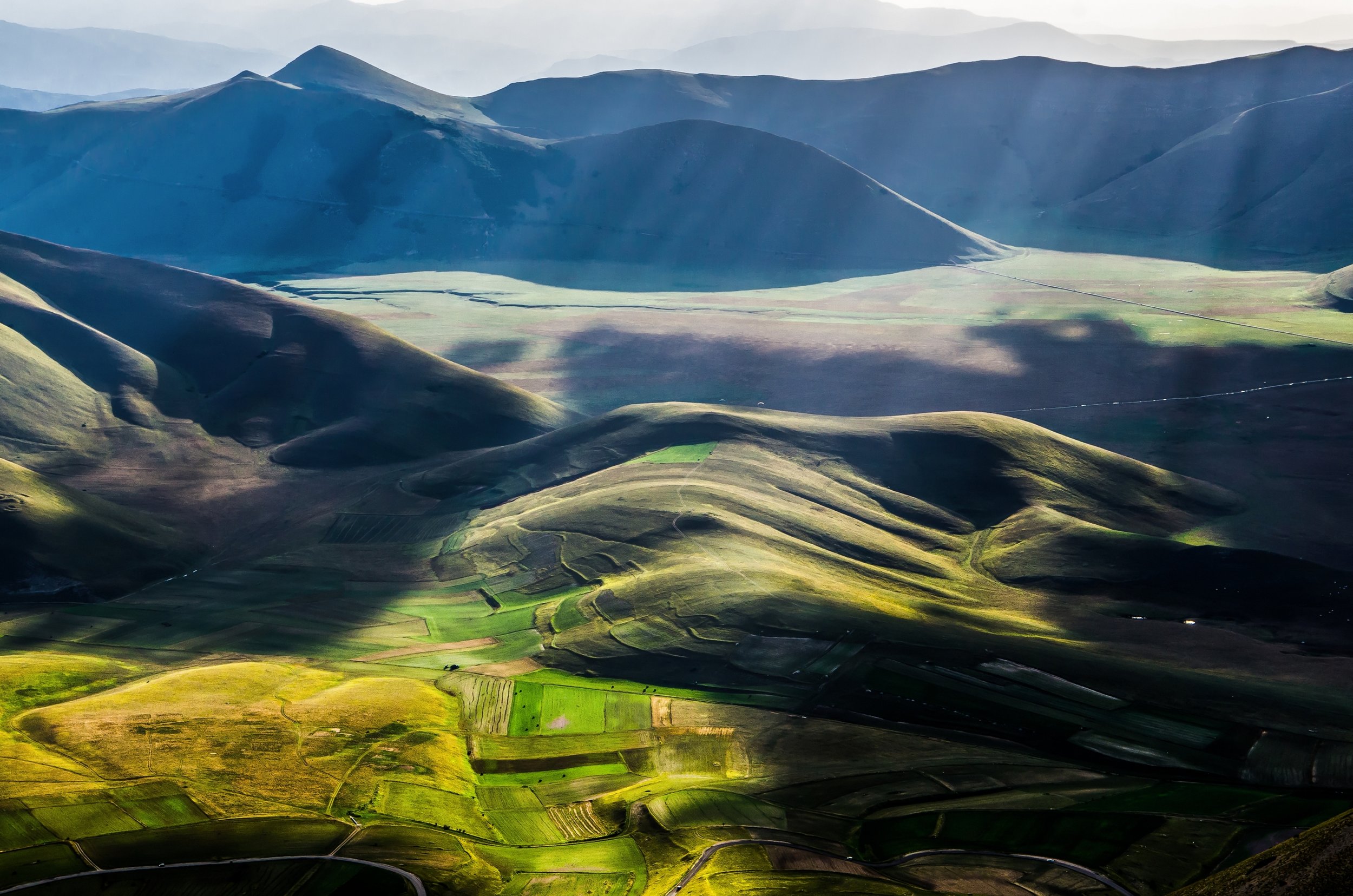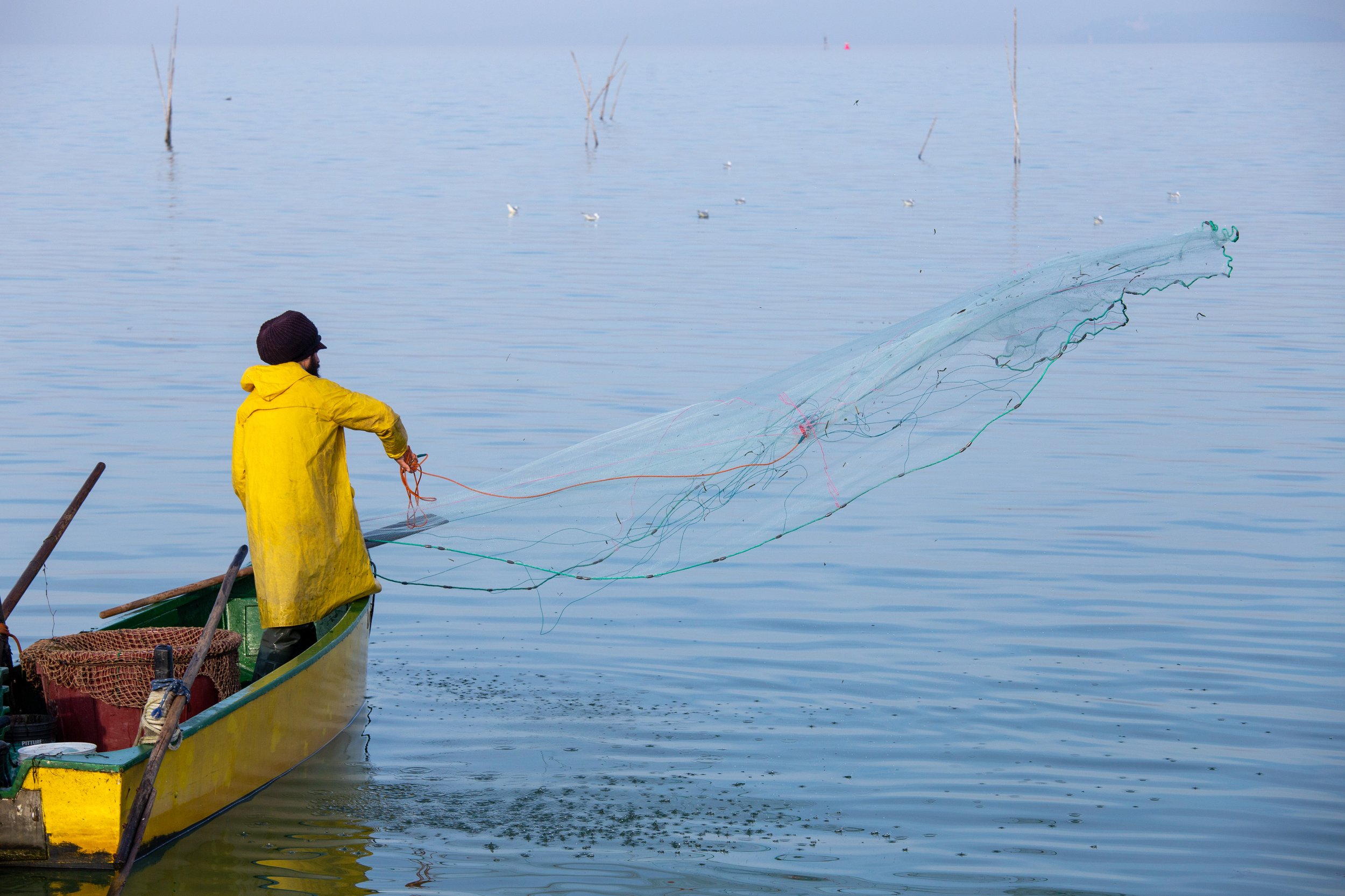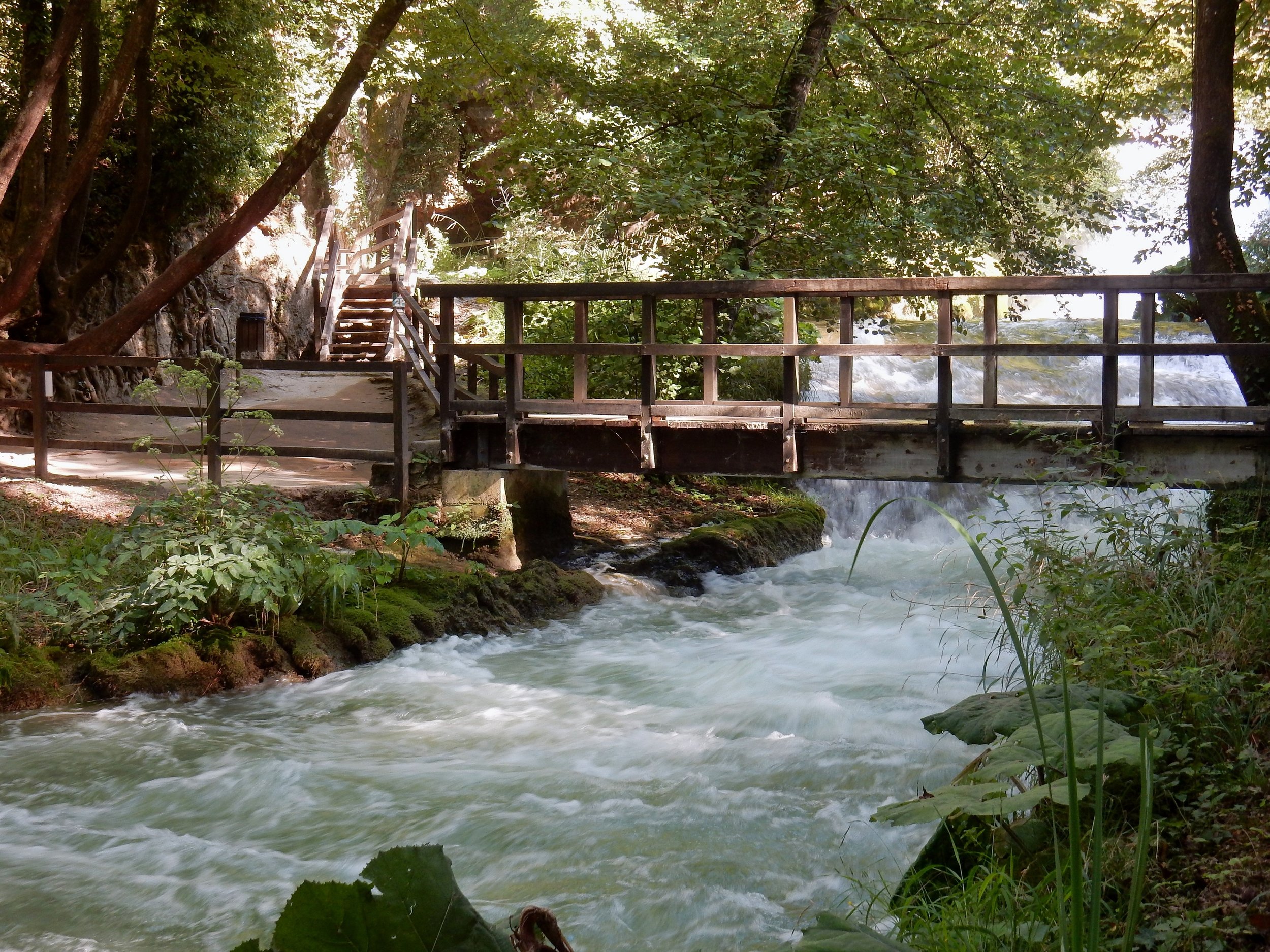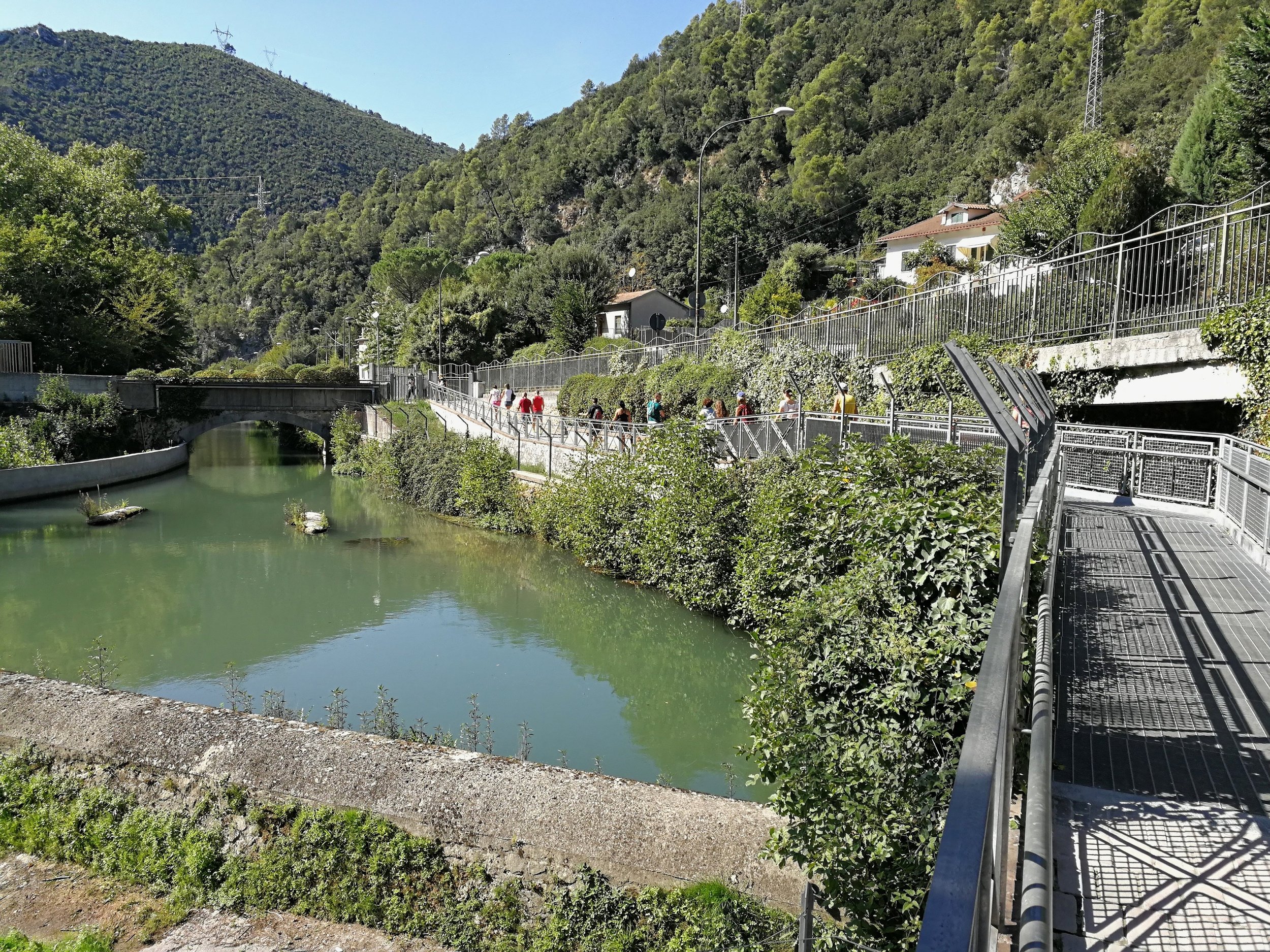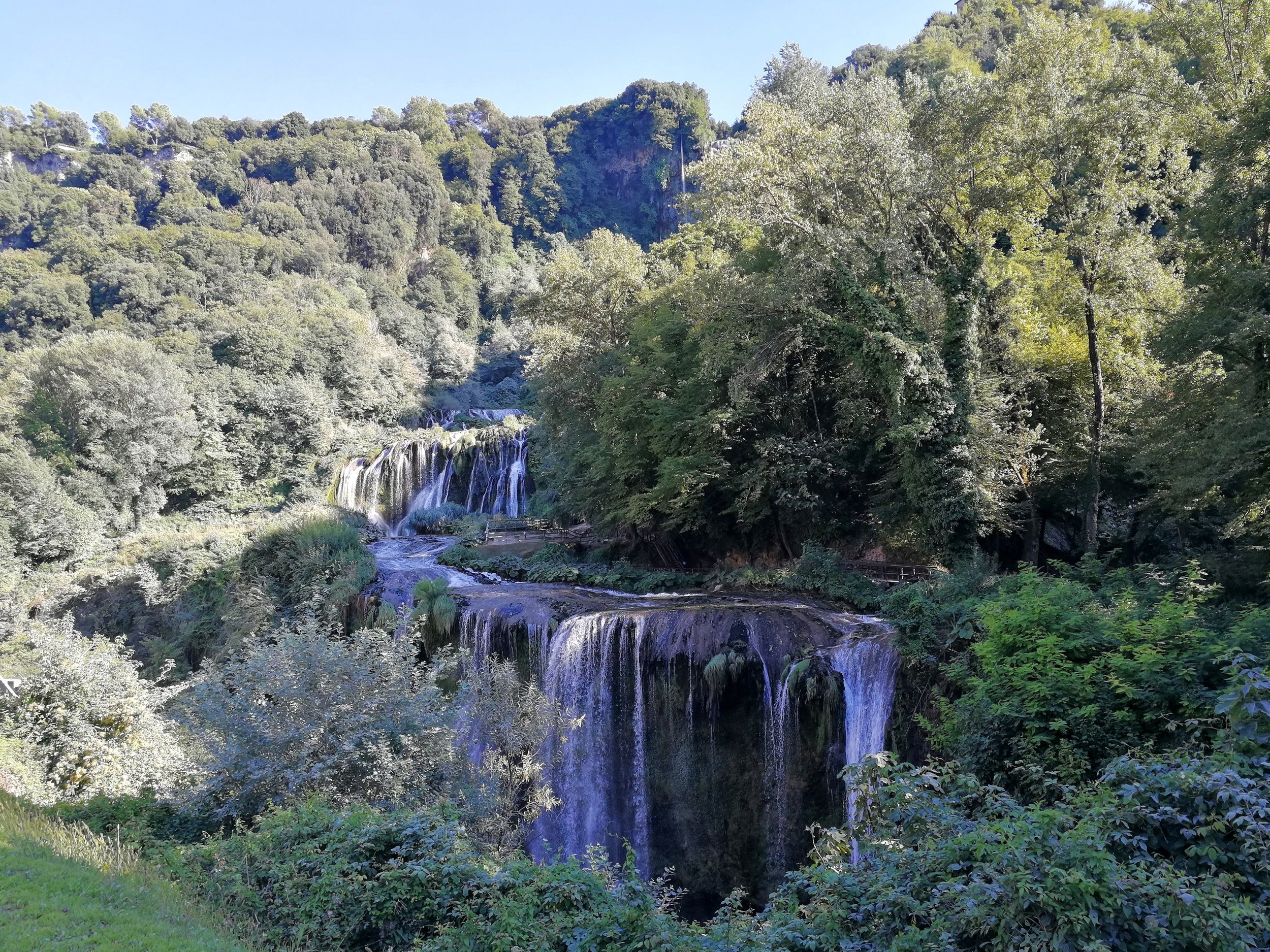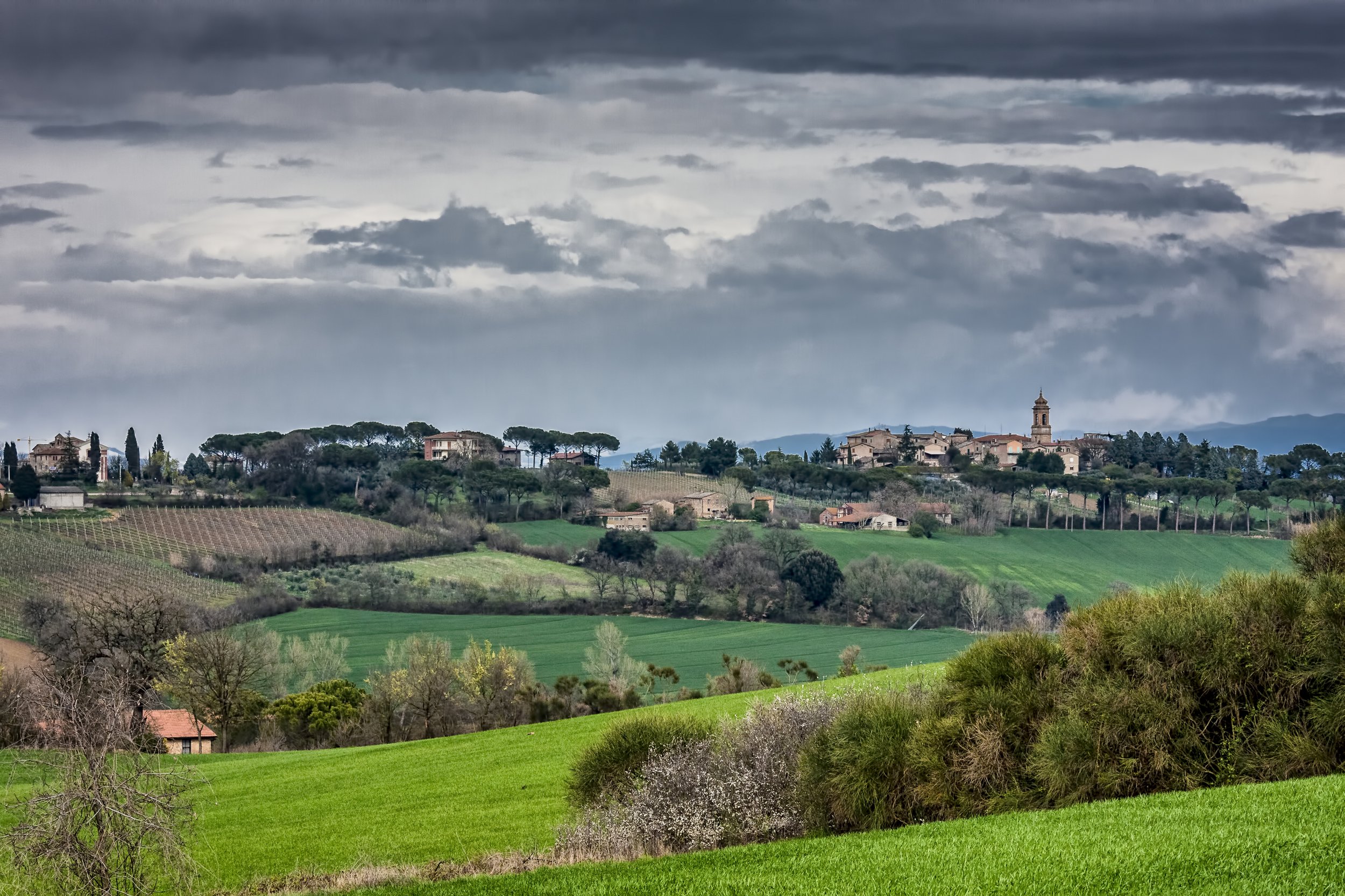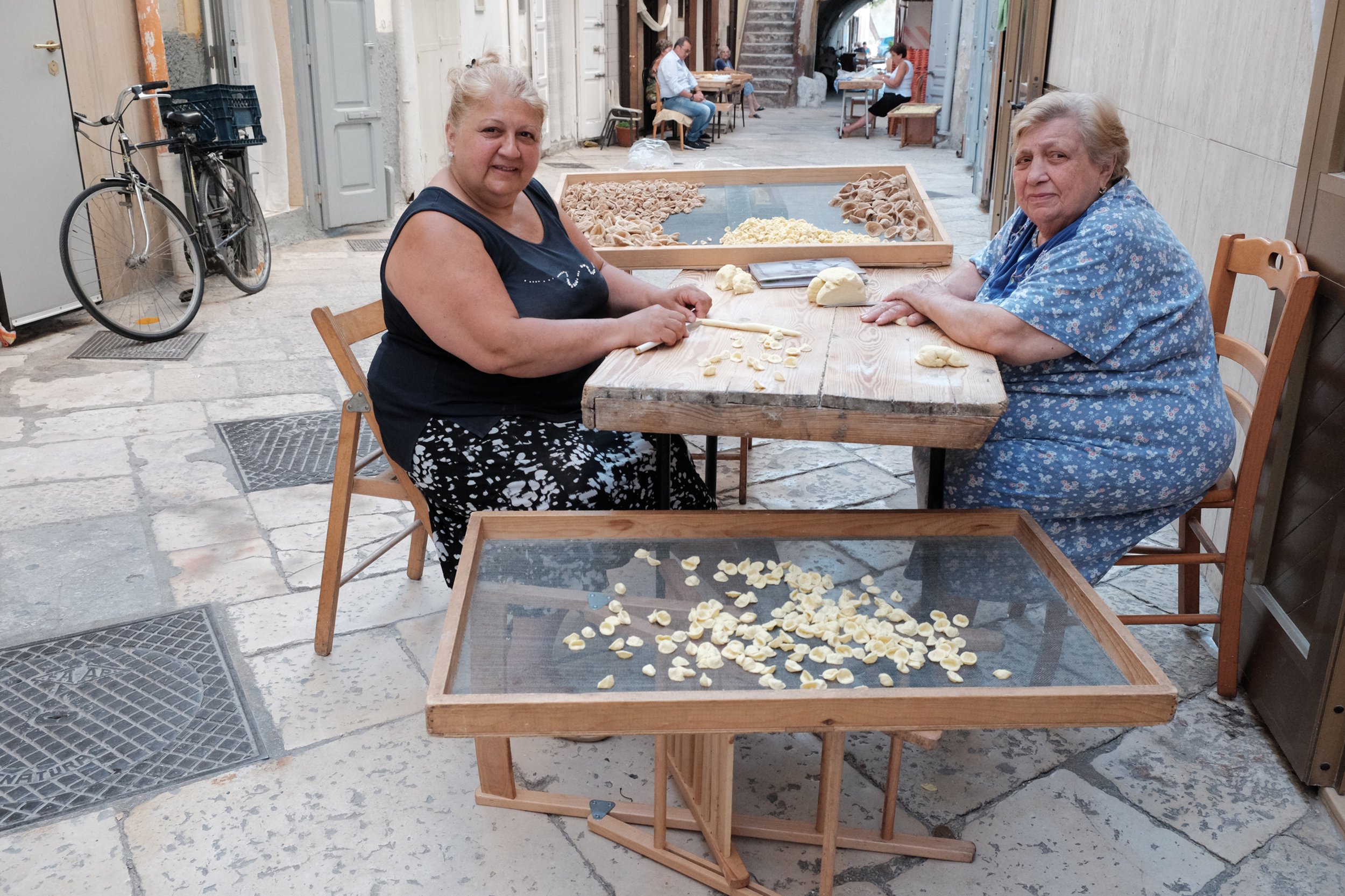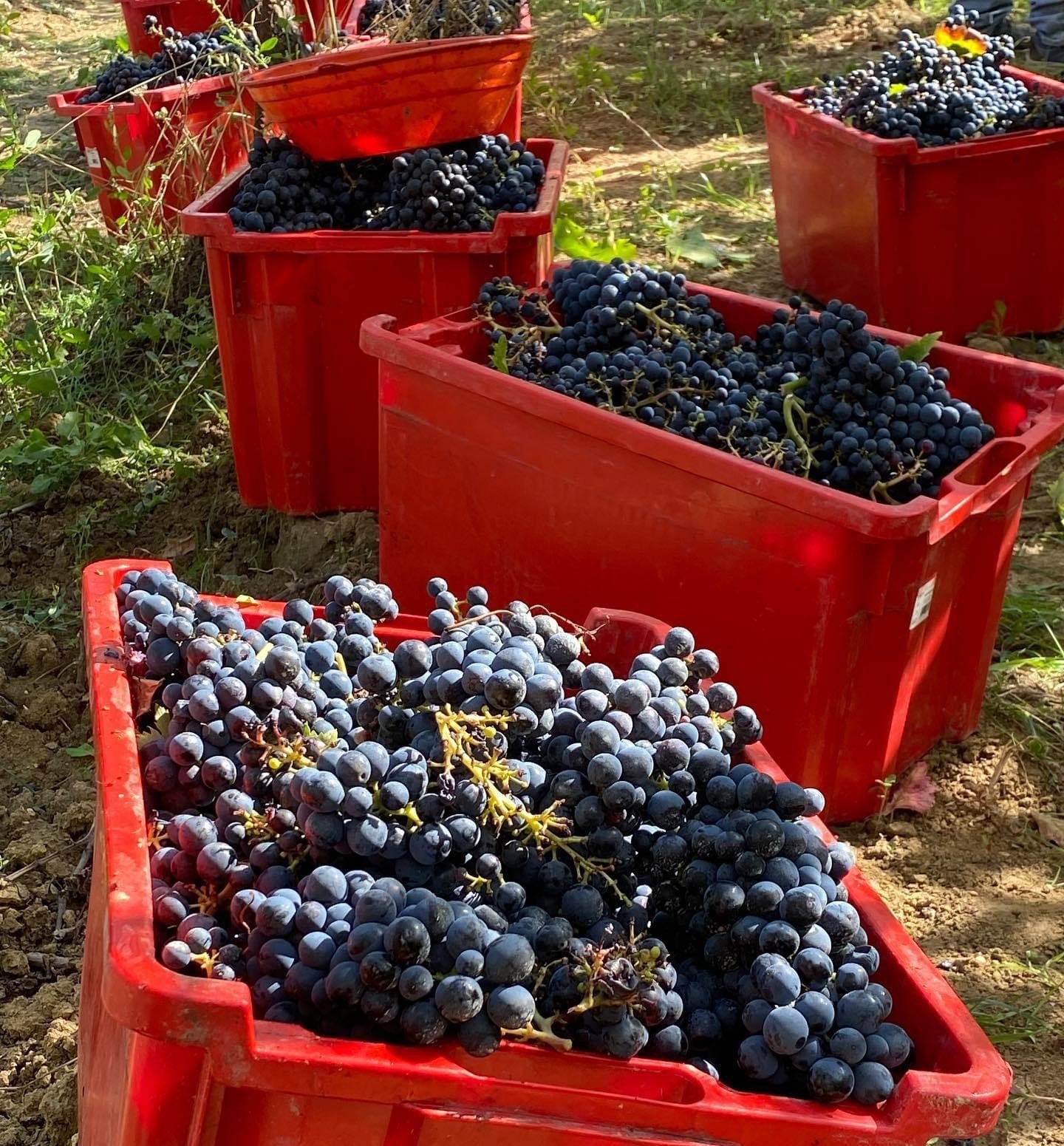Umbria
Umbria is green, golden, slow, spiritual - “mozzafiato” (breathtaking). Umbria, is the home of the ancient Etruscans, Medieval Catholic Saints, and ancient textile masters. Umbria is called “il cuore verde d’Italia,” which translates to the green heart of Italy. This is the only landlocked region with 3000 square miles of rolling hills, peppered with exquisite, enchanting hilltop towns and natural wonders that are “mozzafiato,” (translation - take your breath away.) The valleys are rich with agriculture and farms. If you are lucky, you will see fields of sunflowers kissing the sun. Umbria has many riches including religious and secular art, an ancient history dating back to the 8th century B.C.E., a prosperous region due largely to the ancient Roman roads, fabulous food (although every region can make this claim), wine and olive traditions, natural wonders, the Franciscan legacy of St. Francis of Assisi born in the 12th century and several UNESCO World Heritage sites.
Fantastic Umbrian Festivals
January
29: Festival of St. Costanzo, in Perugia. Perugia’s patron saint is celebrated with a vibrant parade.
February
Annually in late February, in Norcia. The Sagra del Tartufo Nero (The Festival of the Black Truffle). Norcia celebrates with sales and tastings of this cherished gift from the earth complimented with local meats and cheese.
March
early March, around Lago Trasimeno. The Trasimeno Ultramaratona. A 58 kilometer, (36 mile) marathon with thousands of runners.
Torciata di San Giuseppe, Pitigliano
In March or April - Pasqua (Easter) celebrated all over Italy
April
Vasco Brondi at the Urban Live Music Club in Perugia
Historical Archery Tournament, Todi
May
Annually, in early May, in Assisi. La Festa del Calendimaggio. A celebration of the arrival of Spring dating back to pagan rituals. The festival transforms Assisi into a lively medieval town, with participants dressed in period costumes, including knights, ladies, peasants, and artisans.
Annually, The Ceri Race in Gubbio. A race between three teams carrying enormous wax-covered candlesticks on their shoulders to the Basilica di Sant’ Ubaldo.
Orvieto in Fiore (in bloom), Orvieto
Annually, On Corpus Christi, the Festa della Palombella, in Orvieto. Orvieto is the town where Corpus Christi was first proclaimed. The holy liturgical cloth onto which a communion wafer once miraculously dripped blood is carried through town in a procession of hundreds dressed in medieval costumes.
Palio della Balestra (Crossbow Competition), Gubbio
June
The Infiorata (Festival of Flowers) celebration, Spello. Dried flowers are arranged in stunning artistic displays on the main street in celebration of Corpus Christi.
Festa del Corpus Christi (The Body of Christ), Orvieto
Medieval Festival, Bevagna
Annually in late-June to mid-July, Festival dei Due Mondi, in Spoleto. Theater, dance and music performances.
July
Umbria Jazz Festival, in Perugia, https://www.umbriajazz.it/
Annually in late-July or August, Rassegna Internazionale del Folklore, in Castiglione del Lago. International folk groups gather to perform.
August
Annually in late-August to early-September, Festival delle Nazioni, in Citta di Castello. Classical and chamber music festival.
September
Jazz Weekend, in Perugia
Cinema Festival, Orvieto
Medieval Ages Festival, Gubbio
Last week of September: Perugia Classico (Festival of Classical Music)
Annually in late September through early October, I Primi d’Italia in Foligno. A four-day festival celebrating first courses of Italian cuisine.
October
EuroChocolate Festival, in Perugia
Last week of October: Mostra Mercato Nazionale del Tartufo Bianco (White Truffle Fair), in Gubbio
November
Vino Novello (New Wines). Look for wine festivals that begin after November 4. Why? By law, New Wine can't be released before November 4, and several towns celebrate the coming-out weekend of these wines.
Early November, La Festa dell Olio Nuovo in Trevi. A celebration of the olive oil harvest with tastings.
December
23 to 09 January 2025: Presepe nel Pozzo, Orvieto. A Celebration of the Nativity.
28 to 01 January 2025: International Jazz Festival, Orvieto
Our favorite Guide in Umbria
Anne Robichaud is an American who fell in love with Italy during her junior year abroad while studying at Santa Clara University. She is the only American who has passed the intensive exam to become a licensed guide in Umbria. Find out more about her and her services at www.annestitaly.com
Umbria is brimming with hilltop villages built on top of “tuffa” - lava, tossed from an ancient volcano (where Lake Bolsena is today) 300,000 years ago. Among its many treasures are the remnants of the Ancient Etruscans who built 12 major centers from around 700 B.C.E. through the 1st century AD prior to being absorbed by the Romans. Most of those communities are in Umbria. It is also home to great Artisans of the Renaissance like Perugino, Roman Catholic saints like Saint Francis of Assisi and Saint Claire, ancient artifacts, marvelous architecture and engineering, and rich craftsmanship like ironworks, pottery, and weaving. Umbria is home to great cultural riches, most of which can be accessed easily by trains, buses and cars.
Food in Umbria
You will feel like you have eaten a feast at each meal in Umbria. Truffles and more truffles…. porchetta, lamb, salumi and a variety of pastas are just a few of the local Umbrian favorites. The region is known for wine made from rich, red Sagrantino grapes.
Our Favorite Places in Umbria
Orvieto is one of the founder’s favorite places to visit in Italy when she is not in Firenze or her beloved Abruzzo. A one-day walking tour is outlined. See the tab - Orvieto in a Day. So, we begin with this magnificent Etruscan walled town sitting atop a piece of tuffa, volcanic stone, blown off a volcano 300,000 years ago. A lovely walkway, built on top of the old wall, surrounds 3/4 of the town, perfect to wind down after a day of exploring.
Orvieto is a jewel and just a 45-minute train ride from Rome. Unlike much of Umbria, you can access this gem easily by train, bus or a small automatic car. It is an ideal place to experience peace and quiet if you are looking for a day trip from busy Roma. You can access the town from a funicular that is across the street from the train station or, park in the large outdoor garage at the base of the wall and take an elevator or escalator to the top where the city rests and walk just 10 minutes to get to the center of the town.
Here you can explore two fabulous Etruscan museums, admire gorgeous contemporary and Medieval motifs in pottery, visit a Master cobbler, drink wine from a goblet on the piazza overlooking the magnificent cathedral covered in majestic mosaics that glisten from the reflection of the sun, take a leisurely walk along the wall that encloses this charming town, chat with Master weavers who buy their yarn from local farmers. The crown jewel of Orvieto is the Duomo. Don’t miss the interior. Signorelli frescoes await. (Read about it on the tab dedicated to a Day in Orvieto.) Before you leave, Orvieto, taste some Umbrian goodness at one of the local bodegas or trattorias and leave room for gelato.
Orvieto is in central Umbria - an ideal village to call home for a stretch of time as you explore glorious Umbria. Courses are available to learn Italian and the rich history of the region. Cooking classes are offered by Cesarine. Guided hikes can be arranged with a local Assisi native in the surrounding landscapes. And studio experiences with Artisans working with ceramics, natural fabrics and fibers, leather, gold and silver abound in this charming town. Look for the tab, Orvieto in a Day, for an Itinerary to enjoy more details of this gem.
Unforgettable Places to Eat in Orvieto
Bars for Breakfast (Colazione)
Il Forno Del 2000, Corso Cavour, 282
Palace Caffe, Piazza del Popolo, 24
Bar Da Brozzi, Via del Duomo, 2
Caffe Montanucci cafeteria, Corso Cavour, 23
Lunch or Dinner
Trattoria del Moro, Via S. Leonardo, 7
Antica Bottega al Duomo, Via Pedota, 2
La Palomba, Via Cipriano Menente, 16
I Sette Consoli, Piazza Sant’Angelo, 1A
Ristorante Grotte del Funaro Nuova, Via Ripa Serancia, 41
Bars - Pubs
FEBO, Via Gualverio Michelangeli, 7
Cooking Class
Agriturismo/Inn - La Locanda di Colle Ombroso, Strada Provinciale 55 Km 4.8
Hotels in Orvieto
Palazzo Piccolomini - The founder has stayed here several times and each experience has been superb. A hearty breakfast is served on the lower level. A bar is open in the evenings of the spacious lobby. Ask for rooms on the second floor. The hotel is located about 50 feet from an outdoor elevator that takes you to the bottom of the city wall where there is a large outdoor garage for parking. It’s ideal for those who are driving. Very convenient and peaceful.
Email: info@palazzopiccolomini.it
https://www.palazzopiccolomini.it
Hotel Duomo - Facing the Duomo in the heart of the town. This 3-star hotel has 18 pristine rooms with an excellent breakfast offering. Located on Vicolo di Maurizio, 7
+39 0763 341887
https://www.orvietohotelduomo.com/
Book and Bed Apartment - This is an apartment recommendation from a dear friend who stayed here in the Spring of 2024. Perfectly located on a quiet side street only 1 block from the center of town. This is a spacious two-story apartment with a private garage right under the apartment. Immaculately clean! Beautiful furnishings, plenty of kitchenware, as you’d have in a private home. Equipped with a full kitchen and coffee is provided. Mario is the host. Located on Via Ascanio Vitozzi, 7.
+39 392 805 9823
Perugia
Perugia is the capital city of Umbria. Like Orvieto, its Medieval center also sits on top of a large hill overlooking a lush valley below directly facing Assisi in the distance on another hilltop. Perugia is a city that allows you to travel through time from the ancient Etruscans to the Roman Empire and modernity. The ancient city walls date back to the time of the Etruscans in 600 B.C.E. After around 90 B.C.E., Perugia became part of the Roman empire. Perugia should not be missed if you are in Umbria. Stay for two or three days to experience the highlights of this ancient city. And…don’t forget to visit the Perugina chocolate factory.
Here are some of the highlights and logistics.
The Medieval Bagalioni District, accessible from a nearby parking lot, is all underground for pedestrians only. You can take an escalator up to the top of the city to reach the town. At the top of the escalator, you will see a park and the beginning of the main street of the historical center, the Corso Vanucci named after Pietro Vanucci, better known in the art world as Pietro Perugino. You can access the entire city from this street including the main square, the Piazza IV Novembre where you’ll find some treasure - the Perugia Cathedral, the Palazzo dei Priori, The National Gallery of Umbria, and a magnificent, artistic 13th-century water fountain.
The National Gallery of Umbria is one of the founder’s favorite museums in all of Italy. Not to be missed. The University and the Italian University for Foreigners, the oldest language school in Europe that teaches Italian to non-natives, are nearby. A functioning aqueduct can be accessed on Via Appia and so much more. Ask for directions to the Temple of St. Michael the Archangel which dates back to the 5th century AD and is the oldest church in town located on top of a hill overlooking the valley. It is a gem for art historians and architecture students and a tranquil, peaceful haven. If you are a fan of Baroque art, visit the Oratory of the Augustinian Brotherhood built in 1317. Viator offers guided walking tours, food tours, market tours and cooking classes in this fabulous town. Perugina Chocolate Factory is just outside the city walls. You can load up on chocolates inside the Perugina store in town on the Corso Vanucci, but the tour of the factory, where you’ll learn about its history, is not to be missed. This is by no means an exhaustive list of the highlights of Perugia.
Our advice…GO to Perugia! Experience its many splendors. Consider this a home base to explore northern Umbria.
Hotels in Perugia
The founder has stayed in just one hotel, a number of times on the Corso Vanucci called the Locanda della Posta Boutique Hotel. The location is ideal. The hotel has been in operation since 1786 and was renovated in 2018. The breakfasts are plentiful and fresh. One room has magnificent frescoes on the ceilings with two separate bathrooms and two separate sleeping quarters for two couples or a small family. The staff can arrange walking and biking tours and guides for the museums.
Website: https://www.locandadellapostahotel.it/
Assisi
Assisi is enchanting and also one of the founder’s favorite places in Italy. If you have not been here, be prepared to be mesmerized. Assisi is home to St. Francis and St. Claire, two significant figures of the Roman Catholic Church from the 12th century. Pilgrims travel to this hilltop town to visit the town where St. Francis and St. Claire lived, preached and are both buried. Their lives forever changed Italy. Visitors clamor to their basilicas to see the artwork left behind by Cimabue, Giotto, and others. The basilica in the valley below is also an important visit to see since it houses the first church built by St. Francis in his quest to follow his spiritual path. Some of the most beautiful places to visit in Umbria are places where St. Francis preached and where the Franciscan order built churches, like Spello, Gubbio and Spoleto.
An artist who has become renowned worldwide for his painting on glass, lives and works in Assisi near Porta Nuova just 100 meters from the Basilica of Santa Chiara, Massimo Cruciani. The studio is called Cruciani Sas Di Cruciani Lisa & C. on Via Borgo Aretino, 17. The gallery is open 7 days a week. A must see.
Assisi’s rich history is best learned and shared by licensed guides in Umbria. We suggest Anne Robichaud. Anne is the first American to pass the arduous exam in Umbria one must pass to become a licensed guide. Italy takes the job of a guide very seriously as a way to protect its cultural heritage. Anne has lived outside the city walls in Assisi for over 40 years where she has raised three children with her husband, Pino, and together they renovated an old pig farm as their home. Check the Guide tab for her contact information.
Favorite Places to Eat in Assisi
Osteria da Santu Mangione on Vicolo Fondini. Many of the ingredients are from the owner’s farm. Delicious fresh pasta, wild boar and porchetta.
Buca di San Francesco - offers traditional Umbrian food in an elegant setting. Try the Spaghetti alla buca. Fantastic.
Spello
Spello is a stone’s throw from Assisi. Like Assisi it is known for its ancient history, (both Etruscan and Roman), links to the Franciscan order, its medieval well-preserved old-world ruins, Pinturicchio’s fabulous paintings in the Franciscan Church of Santa Maria Maggiore and the Infiorate which is a festival held each year to celebrate the Catholic feast of Corpus Christi using the petals of flowers to create intricate floral carpets along the streets of the town. This tradition has its roots in the Corpus Christi feast, a Christian celebration that honors the Eucharist. The Infiorate usually occurs on the Sunday of Corpus Christi, which falls 60 days after Easter.
The history of the Infiorata in Spello dates back to the early 19th century. The tradition is believed to have started in 1831 when a local priest, Father Domenico di Gesù Cristo, inspired by a similar event in Rome, introduced the idea of creating floral carpets to celebrate Corpus Christi in Spello. Over the years, the practice gained popularity and became an integral part of the town's cultural and religious identity. Fra Paolo, the Franciscan monk in the slides above, led the Fiorata efforts during his lifetime in Spello.
During the Infiorate, the streets of Spello are transformed into a canvas of vibrant colors and intricate designs made entirely of flower petals, seeds, and other natural materials. The preparation for this event is meticulous, involving the collaboration of local residents, artists, and volunteers. Participants work together to create stunning floral carpets depicting religious themes, biblical scenes, and intricate patterns.
Favorite Place to Visit in Spello
My number one stop is the Baglioni Chapel: Visit the Cappella Baglioni within the Church of Santa Maria Maggiore to see Pinturicchio's stunning frescoes depicting scenes from the life of the Virgin Mary. Pinturicchio’s fresco was recently restored. The brilliant colors of the Renaissance are vivid in Pinturicchio’s work. The bright colors he used in his frescoes provided a way for him to tell and display his subjects' stories with his delicate brushstrokes. Pinturicchio, whose real name was Bernardino di Betto, was an Italian Renaissance painter born around 1454 in Perugia, Italy. He earned his nickname "Pinturicchio," meaning "little painter," possibly due to his short stature. Pinturicchio was a prominent artist of the Umbrian school, known for his contributions to the art world during the late 15th and early 16th centuries. Pinturicchio began his artistic training in Perugia and later worked in Florence, where he likely came into contact with leading artists of the Renaissance, such as Leonardo da Vinci and others. He gained early recognition for his talent, which led to various commissions with The Borgia Pope, Pope Alexander VI, in the Siena Cathedral and other churches and cities all over Italy.
The Church of Saint Andrew: Saint Andrews houses two art pieces, the main crucifix by the school of Giotto and another Pinturiccio gem, Our Lady of the Saints painted in 1508.
Art Galleries and Craft Shops: Spello is home to several art galleries and craft shops where you can explore and purchase local artwork, ceramics, and traditional crafts.
Porta Venere: Explore the ancient city gates, such as Porta Venere, which offers panoramic views of the surrounding countryside. The gates are part of the town's defensive walls.
Historic Center (Centro Storico): Wander through the narrow streets of the historic center, where you'll find well-preserved medieval buildings, flower-covered balconies, and quaint squares.
Two adventures outside the city walls: Villa Fidelia: Villa Fidelia is a beautiful villa with a garden located just outside Spello. The villa hosts various cultural events and offers a peaceful retreat; Monte Subasio: For nature lovers, consider taking a hike on Monte Subasio, the mountain overlooking Spello. This is also where St. Francis of Assisi would often go to pray. The trail offers breathtaking views of the countryside.
Todi
Todi is a small gem, perched on a hilltop, like so many towns in Umbria. You can enter the town via a tram or drive to the top. The city consists of one main square with the Duomo, also called the Cathedral of Saint Mary of Todi (Italian: Cattedrale di Santa Maria Assunta), which frames the end of the piazza; and the Chruch of San Fortunato which sits on a mound on the main street as you enter the town on the right.
The Cathedral is built on the site of an earlier church and showcases a blend of Romanesque and Gothic architectural styles. Construction began in the 12th century. It has undergone meticulous restoration and renovation due to several earthquakes. The facade is adorned with intricate sculptures and reliefs, showcasing the skilled craftsmanship of medieval artists. The rose window on the facade is a striking feature.
San Fortunato’s history is tied to the modern Saint Callistus whose ornate sarcophagus is housed within. It’s unusual to see modern saints in Italian churches outside of St. Peter’s Basilica in Vatican City. So, who was Callistus Caravario? He was an Italian Franciscan friar born on June 9, 1903, in Casalborgone, Italy. He was a member of the Capuchin Franciscan Order, known for his piety, humility, and dedication to the Christian faith.
In 1930, Callistus Caravario was assigned to work in a community in Ethiopia, where he worked as a missionary, known for his kindness and care for the local people, especially the poor and sick. During the Ethiopian-Italian War, he refused to abandon his mission and continued to serve the people in need, despite the dangers. He was eventually arrested by Italian forces and accused of supporting Ethiopian rebels. On March 9, 1937, he was brutally tortured and martyred. His commitment to his faith and his selfless service to others earned him recognition as a saint in the Catholic Church.
Outside the city you will find a prominent landmark, the Consolazione Temple which was commissioned in 1508 and completed one hundred years later in 1608 combining Renaissance and Baroque elements. This is a Catholic church that houses several valuable artworks, including paintings by artists like Giovanni Baglione and Francesco Cozza. The Consolazione Temple is considered one of the masterpieces of Renaissance architecture in Italy. Today, the Consolazione Temple stands as a prominent landmark in Todi, due to its architectural beauty and historical importance. The church continues to be a place of worship and a cultural heritage site.
Gubbio
Gubbio is an enchanting open-air museum where you’ll see ancient Roman, Medieval, Gothic and Renaissance architecture and ruins. It is a place where the past and present come together to create a unique and captivating experience for visitors. Gubbio's history dates back to the ancient Umbrians, an Italic people who settled in the area around the 9th century B.C.E. The town was known as "Iguvium" in Roman times and was an important center for the Umbrian civilization.
Today, many travel to Gubbio for two fabulous festivals in May and to walk the streets of the town where St. Francis of Assisi spoke to and calmed a local wolf. Visitors can also take a birdcage - an open-air basket ride, to the top of the mountain behind Gubbio for a view and a snack. (Look for the man in a cage in the photos above. It’s a tight squeeze and one person is recommended.)
What to see in Gubbio
The Palazzo dei Consoli is a magnificent palace built in the 14th century. Many may recognize this palace as it serves as the police headquarters for the Italian TV series, Don Matteo. This building was ahead of its time when it was built in the Medieval ages with several indoor toilets and a plumbing system that brought water to fountains on the upper levels. Today it is a civic museum. It houses a very important artifact, seven tablets found in a farmer’s field in 1444 called The Eugubine Tablets. These tablets are like the Rosetta Stone for the Osco-Umbrian group of languages. They are bronze. The oldest of the seven is from the 3rd century B.C.E. and written in the ancient Umbrian. The newer tablet and the last is from the 1st century B.C.E. and written in Latin. They describe the religious practices of the ancient Umbrian people and the earliest Roman religious practices.
Festivals - Gubbio’s festivals are fantastic! Come to Gubbio in May to experience one of Gubbio's most famous traditions, the Corsa dei Ceri, or the "Race of the Candles." This event takes place on May 15th each year and involves three teams racing through the town's narrow streets while carrying enormous wooden "ceri" (candles) with statues of saints on top. It's a centuries-old tradition that attracts visitors from all over the world.
Another festival is the Palio della Balestra which is a crossbow competition held in the Piazza Grande, usually on the last Sunday of May. It's a colorful and competitive event that showcases the town's historical connection to medieval archery. It’s a cultural treat!
3. Gubbio Funivia - The BirdCage - If you are not afraid of heights or cable-drawn carriers, take the birdcage to the top of Mount Ingino. The bird cages are completely open air and you'll want to hold on! The ride takes just 6 minutes, and you're treated to a stunning view of Gubbio and the ancient Roman walls along the way.
4. Museum of Contemporary Art (Museo d'Arte Contemporanea) - This museum is dedicated to contemporary art and is located in the historic center of Gubbio. It features rotating exhibitions of contemporary artists, making it a dynamic place to explore modern Italian art.
5. Museum of the Duomo (Museo del Duomo) - This museum is located near the Cathedral of Gubbio and houses a collection of religious art, including paintings, sculptures, and religious artifacts.
6. Museum of the Palazzo della Canonica - This small museum showcases archaeological finds from the Gubbio area. It provides insights into the region's history and ancient culture.
7. Roman Theater - Just outside of the town you can walk among the ruins of the well-preserved ancient Roman theater.
Spoleto
Spoleto
Spoleto is an ancient city in central Italy with a rich history that dates back to the Roman period. Over the last 2000 years, like nearly every village in Umbria, it has been occupied or conquered by not only the Romans but also the Lombards and the Franks. Today it is a charming town with a rich history, a cultural heritage with some must-see attractions. One includes a UNESCO site. You must check out the escalator, a modern marvel of engineering.
Places to see in Spoleto
Teatro Romano (Roman Theater): This well-preserved Roman theater dates back to the 1st century B.C.E. and is still used for performances today. It's a unique historical site with a beautiful backdrop of the Umbrian hills. In the building behind the theater, visit the small but mighty museum of historical artifacts.
National Archaeological Museum of Spoleto: Located in the Palazzo Ancaiani, this museum houses artifacts from the Roman and Umbrian periods, offering insights into the region's history including some beautiful remnants of a mosaic floor.
Piazza del Mercato: This lively square is a great place to soak up the local atmosphere, enjoy a coffee, or explore the surrounding shops and restaurants.
The Duomo or Cathedral of Santa Maria Assunta: One of the key landmarks in Spoleto is the Cathedral of Santa Maria Assunta, commonly known as the Spoleto Cathedral. This cathedral dates back to the 12th century. It houses important works of art and is a prominent symbol of Spoleto's historical and religious importance. Look for a letter written by St. Francis of Assisi, in one of the side chapels. He wrote to his father asking for his release from Saladine while serving as a soldier in the Crusade.
Basilica di San Salvatore: A UNESCO World Heritage site, this early Christian church is one of the oldest in Italy. It features a distinctive Lombard architectural style. In 2011 was declared a UNESCO World Heritage property as part of the series of sites known as “Longobards in Italy. Places of the power (568-774 A.C.),” which comprises seven sites throughout Italy characterized by Lombard elements of architecture, painting, sculpture and art. San Salvatore is located on Ciciano Hill, outside the medieval town walls.
Rocca Albornoziana: This fortress was built in the 14th century and offers panoramic views of Spoleto and the surrounding countryside. It now houses a museum where you can learn more about the history of the region.
Food in Spoleto
You will find many fabulous places to eat in Spoleto including a Michelin star restaurant. Il Tempio del Gusto on Via Arco di Druso, 8. This Michelin-starred restaurant offers a sophisticated dining experience with a focus on local and seasonal ingredients. The chef creates modern interpretations of traditional Umbrian dishes. Il Tempio del Gusto is tailored to tourists. More modestly priced, the town’s trattorias offer hearty dishes.
Trattoria da Ilde
Address: Via della Trinità, 12
A cozy and authentic trattoria, Trattoria da Ilde is known for its friendly atmosphere and delicious homemade pasta. The menu features a variety of traditional Umbrian dishes prepared with care.
Osteria del Matto
Address: Via Arco di Druso, 2
This charming osteria is a great place to try local wines and indulge in traditional Umbrian cuisine. The menu includes a selection of cured meats, cheeses, and hearty pasta dishes.
La Botteguccia
Address: Via Arco di Druso, 5
La Botteguccia is a popular spot for both locals and visitors. It offers a diverse menu with a mix of traditional and innovative dishes. The cozy ambiance and friendly staff contribute to a pleasant dining experience.
Deruta
Deruta
Many communities in Italy create ceramics. Deruta is one of the most well-known. Today, Deruta is celebrated for its vibrant ceramics industry, and the town is a popular destination for those interested in exploring its artistic heritage. Visitors can tour workshops, view demonstrations, and purchase handcrafted ceramics, continuing a tradition that has endured for centuries. The distinctive designs and techniques developed in Deruta have left an indelible mark on the world of Italian ceramics. Visitors have two main shopping stops. There is a modern street below the hilltop town with scores of showrooms or the old medieval town sitting on top of the hill. Both locations are a must-see. One pottery store or studio after another dominate both lower and upper Deruta.
Bolosena and Lago di Bolsena
Bolsena is about 30 minutes from Orvieto. It is a charming village with a lovely lake and paved promenade that is most inviting. The Medieval Bolsena Castle overlooks the village and is a treat to tour.
Natural wonders of Umbria
There are an abundance of small towns to visit in Umbria. Each one has a story to tell and treasures to explore. Most encourage a slower pace from modern life. I addition to the towns, there are endless natural wonders to explore in this rich region. Visit the glorious Lake Tresimino, explore the Monti Sibillini National Park or the Parco Regionale del Monte Cucco. Go truffle hunting with a guide. Participate in harvesting olives or grapes. Nearly everywhere you look you can take a calming walk in nature.
The photos above include shots of additional charming towns Norcia, Castelluccio of Norcia, Pitigliano, Bevagna, Amatrice, Bolsena, Marmore Waterfall hiking and rafting, olive harvesting and truffle hunting, pasta making, walking and walking some more. The outdoor activities are endless in Umbria.
Other cities to visit
Umbria is a large region and we have touched on just a few places we have explored. You may want to add some other towns in Umbria at your pace: Panicale, Pitigliano, Montefalco, Norcia, Castelluccio di Norcia, and Trevi.
Othe Activities to plan while visiting Umbria
Truffle hunting
Cooking class
Hiking with a nature guide
Ceramic class
Exploring the Jewish community’s history of Pitigliano
Participating in the grape harvesting
A Franciscan Retreat


